Blazej Rusin, Poland: Abstract post-graffiti painting with spirit
Early years with graffiti writing
The painter Blazej Rusin was born 1988 in Bielsk Podlaski, in North-eastern Poland, near the oldest forest in Europe, the Bialowieza Primeval Forest. At the age of 7, he moved to a larger city of Bialystok, where he grew up. As a child, Blazej was drawing a lot and clearly remembers when a friend brought sketches of graffiti lettering to school, done with markers on paper, when he was 8 years old, and he became fascinated with it. In his city, in his hood, the Hip Hop movement was very present, and Blazej started exploring the outskirts, its grey zones, discovering graffiti pieces. He resigned from sports or computer games in his free time, started in 2000 doing graffiti writing when he was 12 years old. In the beginning, he was bombing his hood crew, exploring and connecting with the community. When he was 14 years old, he got busted the first time and his parents threw away everything he had done so far connected to style writing. Continuing to spray his own and crew names, he was inspired by several writers at that time, like some legends in his city. But the internet was also a big source of inspiration for him, and he learned about the German, Swedish and Czech scenes. After six years practising lettering, he got tired of it in 2006 and knew he could paint something else. In 2008, Streetfiles appeared and that was a game changer. Blazej really appreciated this platform and connected with many people from all over Europe, becoming friends over the years. New York Graffiti never really fascinated him, he says. What he liked about those Western European styles was the high-quality craft, Eastern European conceptual ways and the dirty experimental paintings.
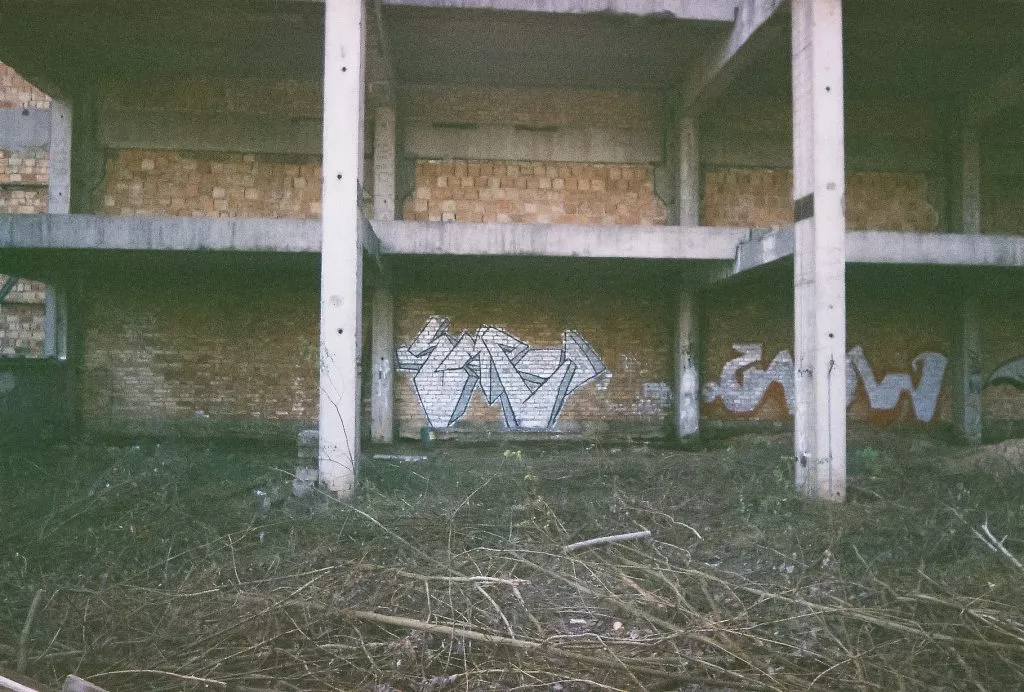
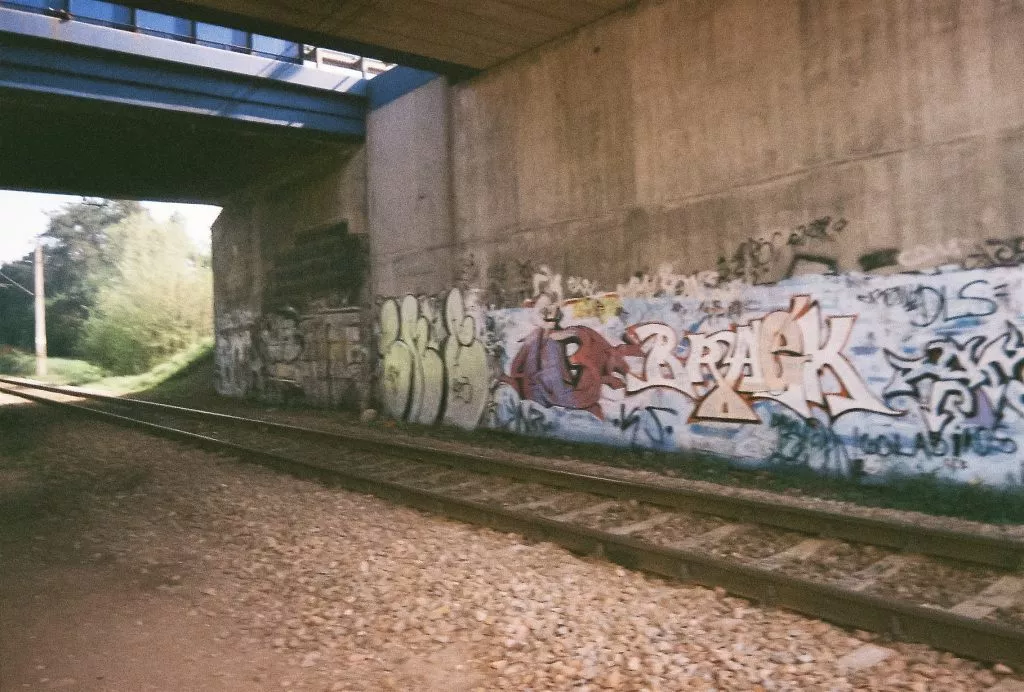
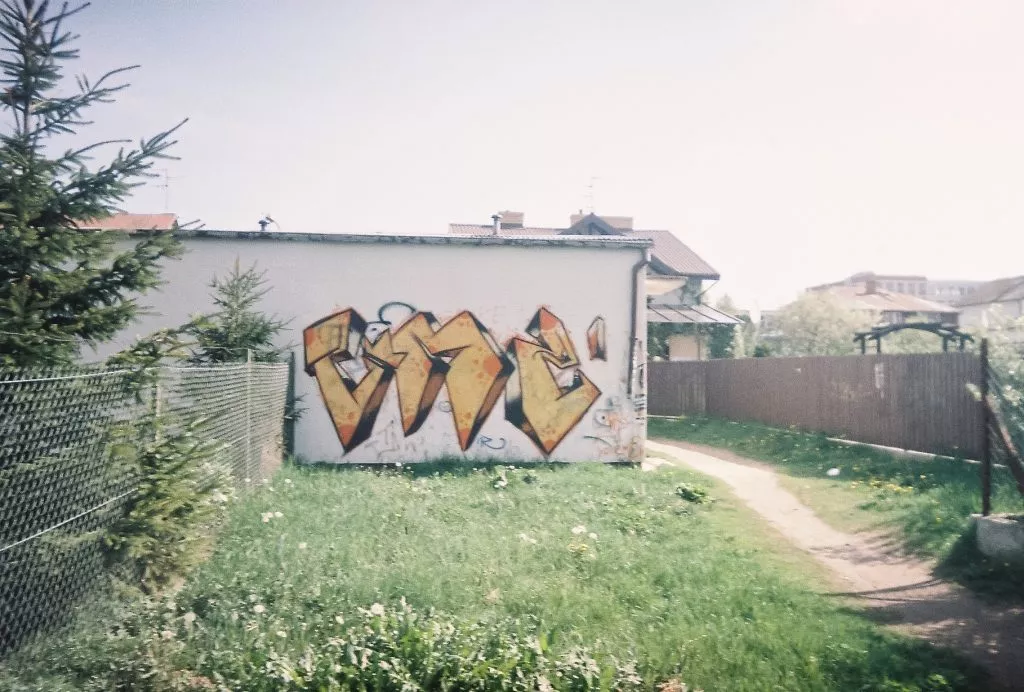
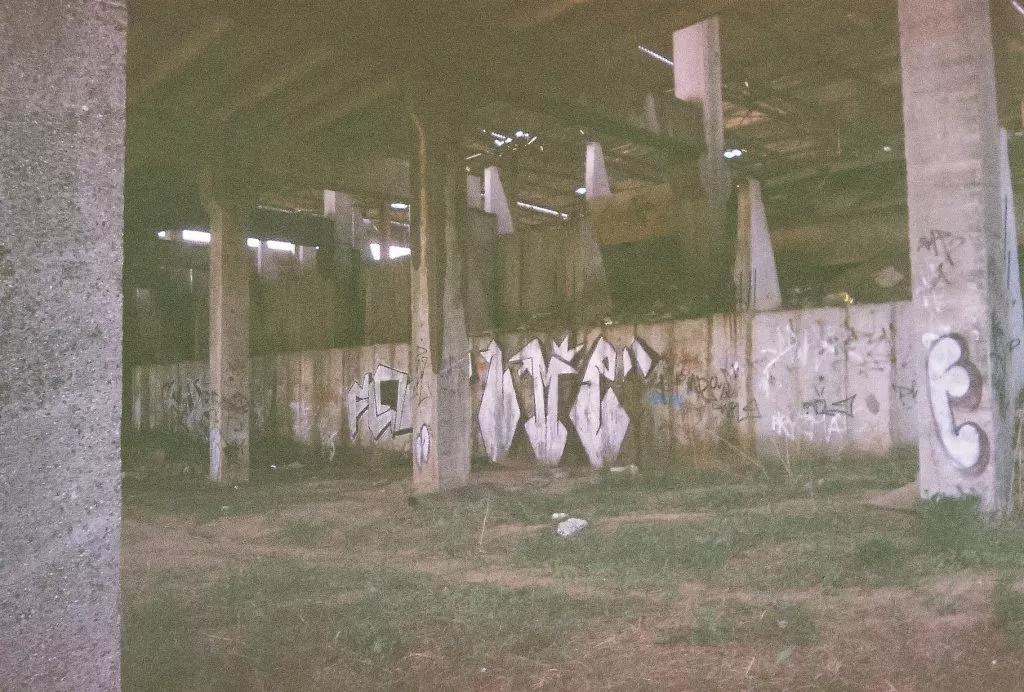
Journeys and art education
In 2006, Blazej travelled to Paris, hungry for fine arts, visited museums like the Musée d’Orsay, the Louvre, Versailles, and in the Loire Valley, a Leonardo da Vinci collection in Chambord. Da Vinci’s figures lastingly impressed Blazej. Back home, he reflected all those impressions and asked himself what was the most impactful visual influence in his early childhood besides graffiti. Growing up in an orthodox and catholic family, he remembered all these orthodox arts in the churches. In those places, one was surrounded by visual treasures, he says today, almost overwhelmed by the visual impact, with intense colours all over, like gold, blue, red, green, full of icon paintings in the Byzantine tradition. Those icon paintings fascinate Blazej until this day, and he started to paint figures in 2006 until 2008, mainly on walls. Referring to icon paintings, he painted human figures, faces with this certain shape of the eyes, done with an outline and tried to mix graffiti with traditional icon painting, freehanded and expressive with mainly pure colours. After high school, he finished a 2-years- course in academical drawing, painted there for 6 months and became the assistant of that studio. That period he painted mainly portraits. In 2009, he started to study graphic design at the Technical University in Bialystok, where he got his BA in 2011. During that time, Blazej started to give lectures, workshops in universities about theory and practice of street painting with the focus on post graffiti, an activity he does until this day.
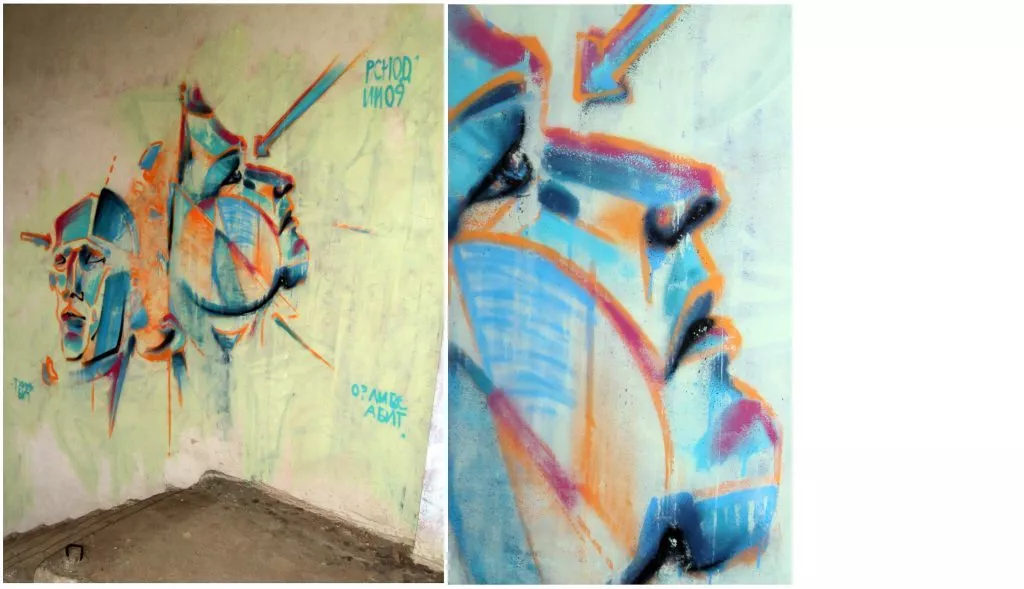
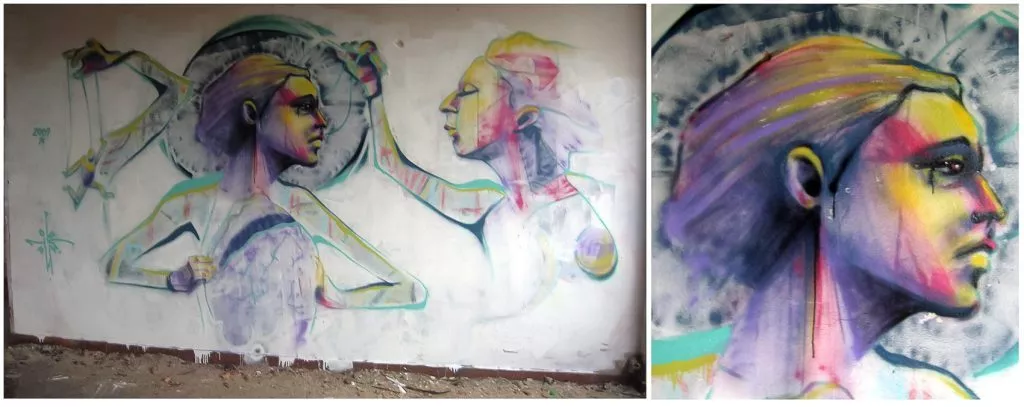

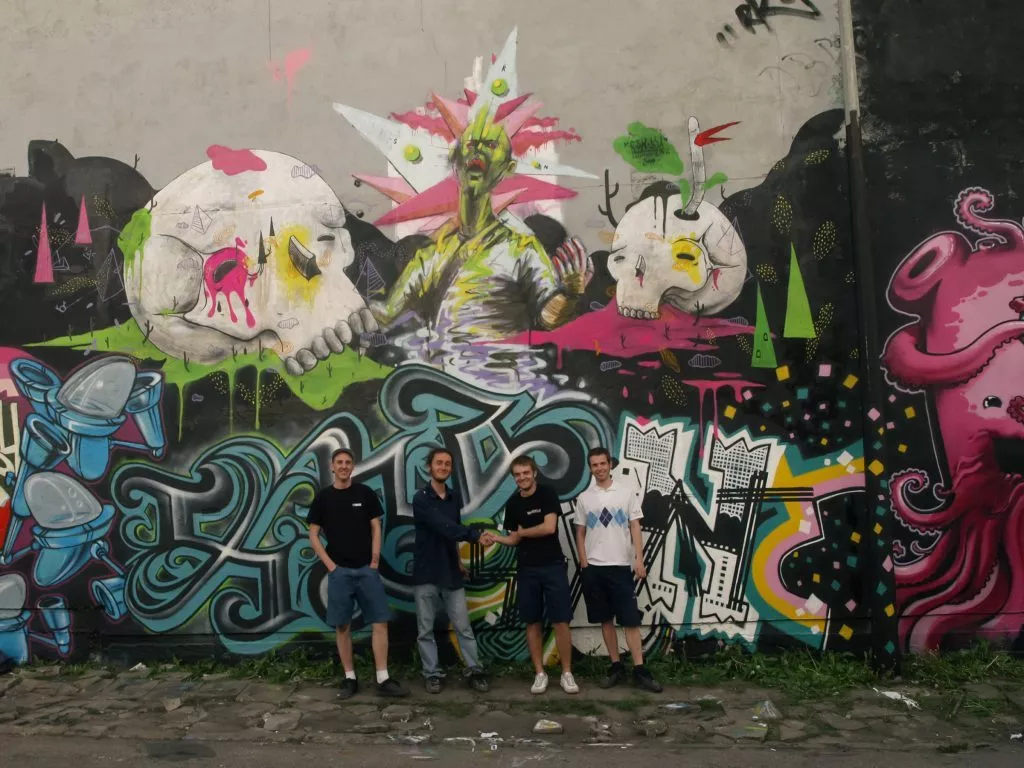
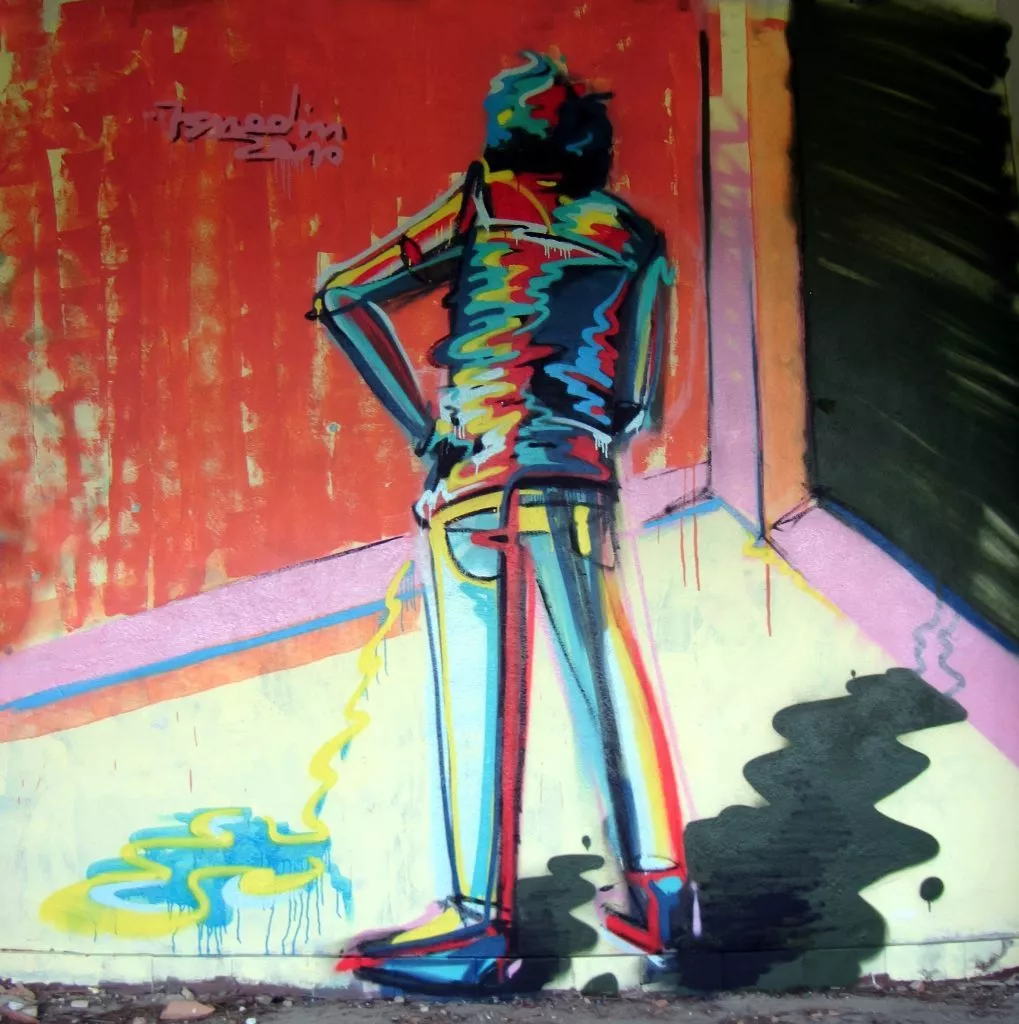
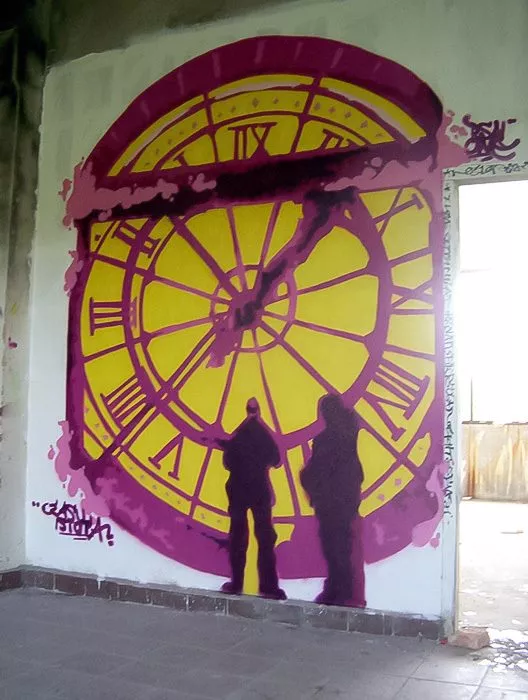
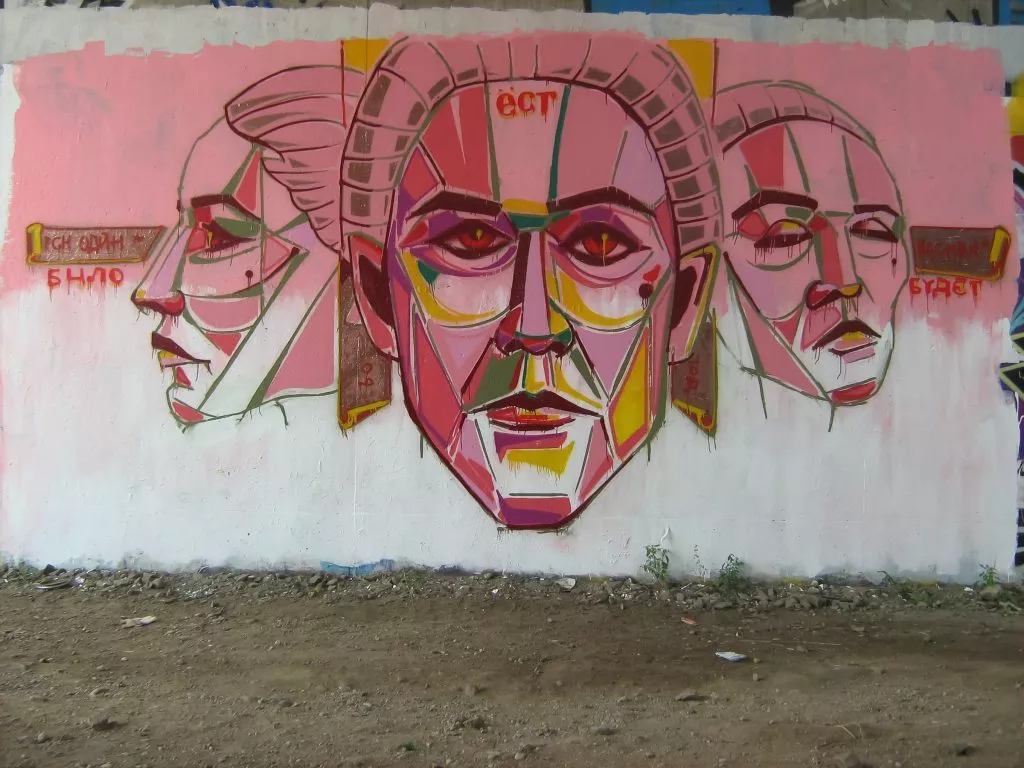
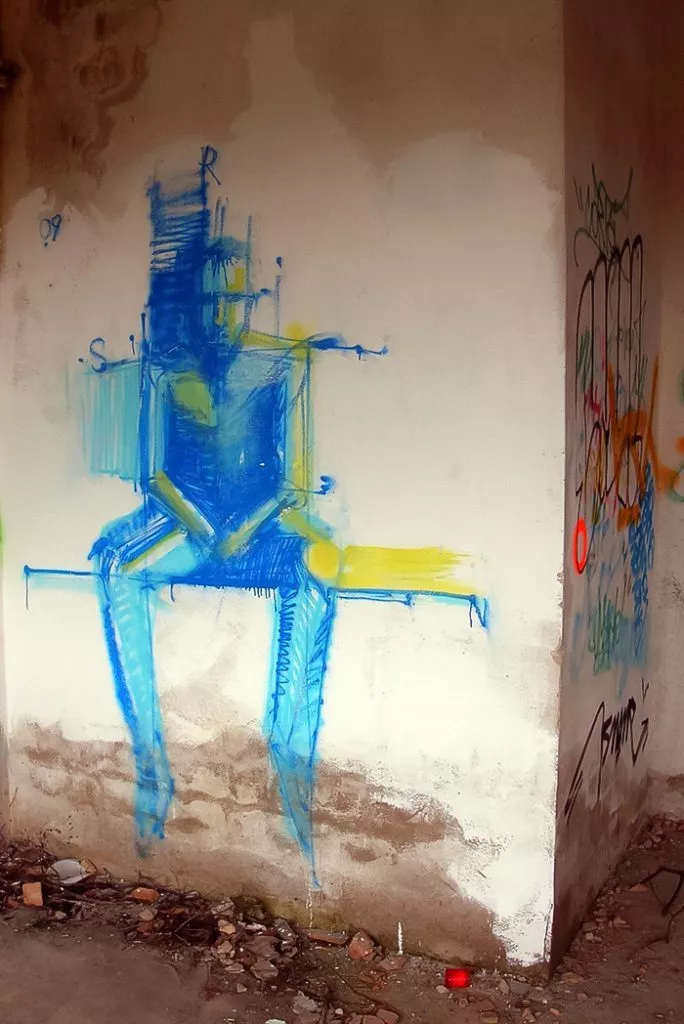
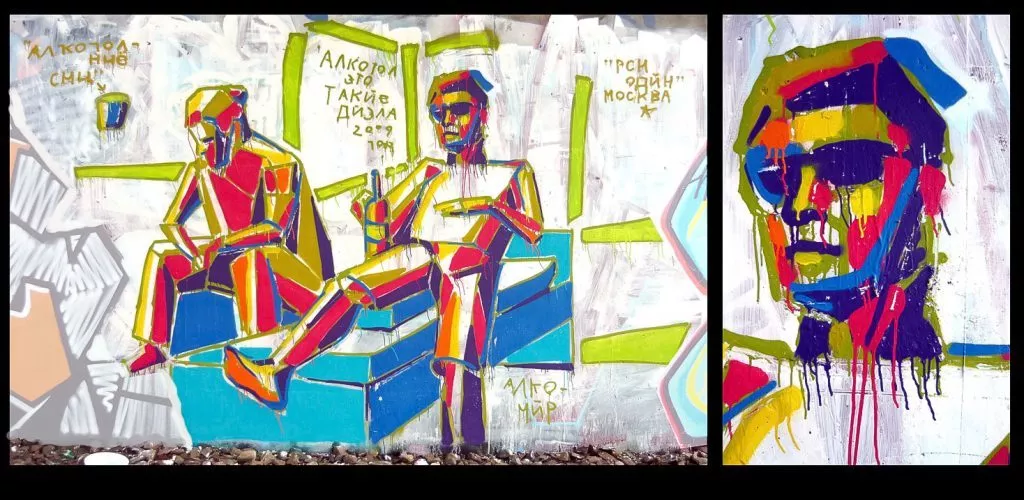
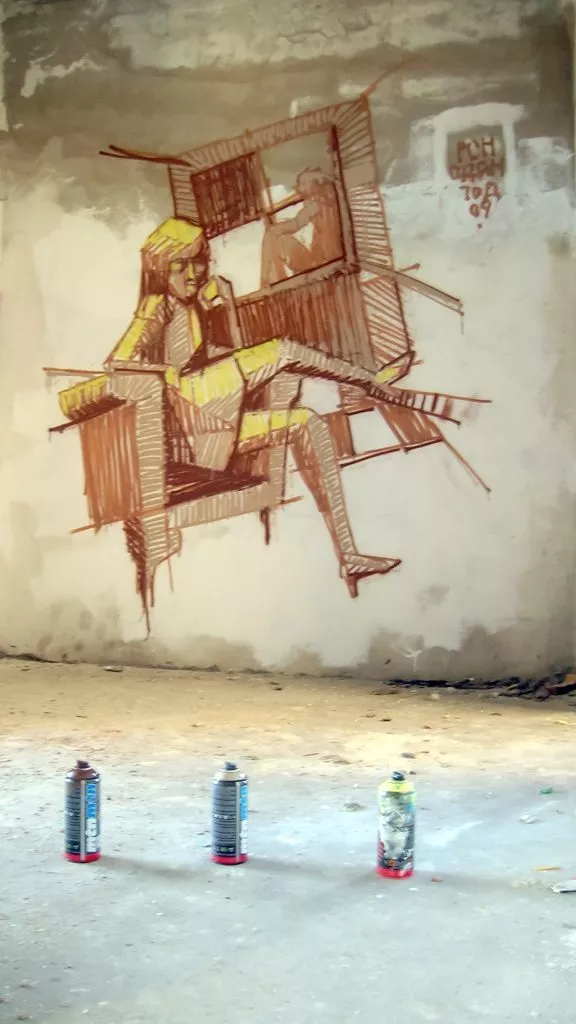
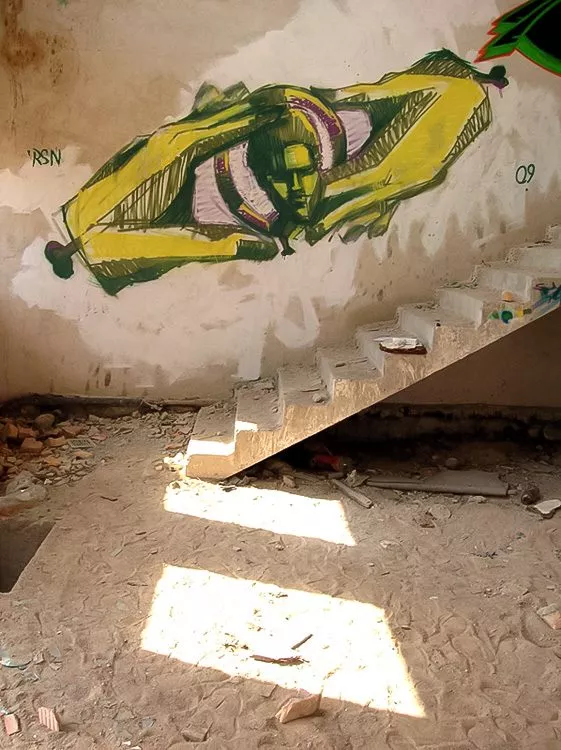
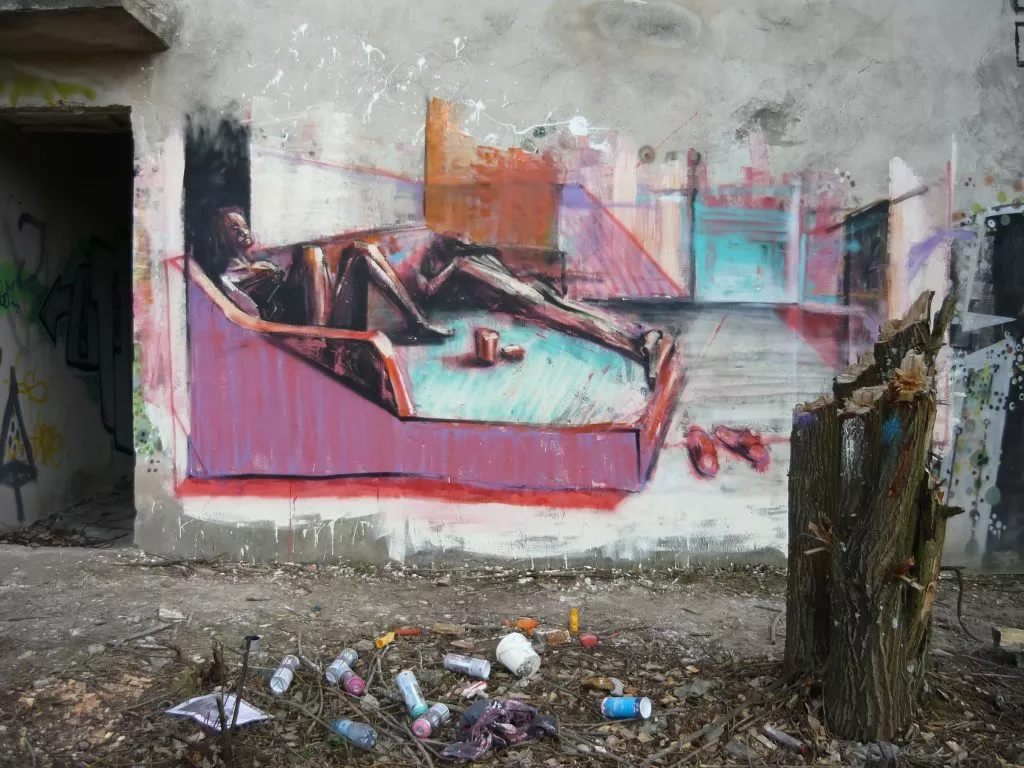
Tired of portraits and figuration around 2010, he did a series of abstract paintings on wood with asphalt and acid as a BA diploma. Those abstract works were going to be his breaking point with figurative painting. In 2011, Blazej finally integrated the University of the Arts Poznan (UAP) to specialize in painting. There he experimented with abstraction, did colour experiments, still mainly on walls. The university provided him with tools for working mainly in a conceptual field, but Blazej was focused on painting and drawing. Besides his practical studies, he was interested in history of art and literature. Since then, he still is and discovered landscape painting of mid 19th century, he really enjoys, especially the works by Polish-Ukrainian painters like Julian Falat, Jan Stanislawski and Leon Wycozòlkowski. Movements like Impressionism, Expressionism interested him, as well as Modern art, especially Post-War art. He also read theoretic books by Kandinsky like “Spirituality in art“ and ”Point and Line to Plane” that really made an impact on him. Besides, he admires the work of Polish abstract painters like Piotr Potworowski, Stanislaw Fijalkowski and Leon Tarasewicz.
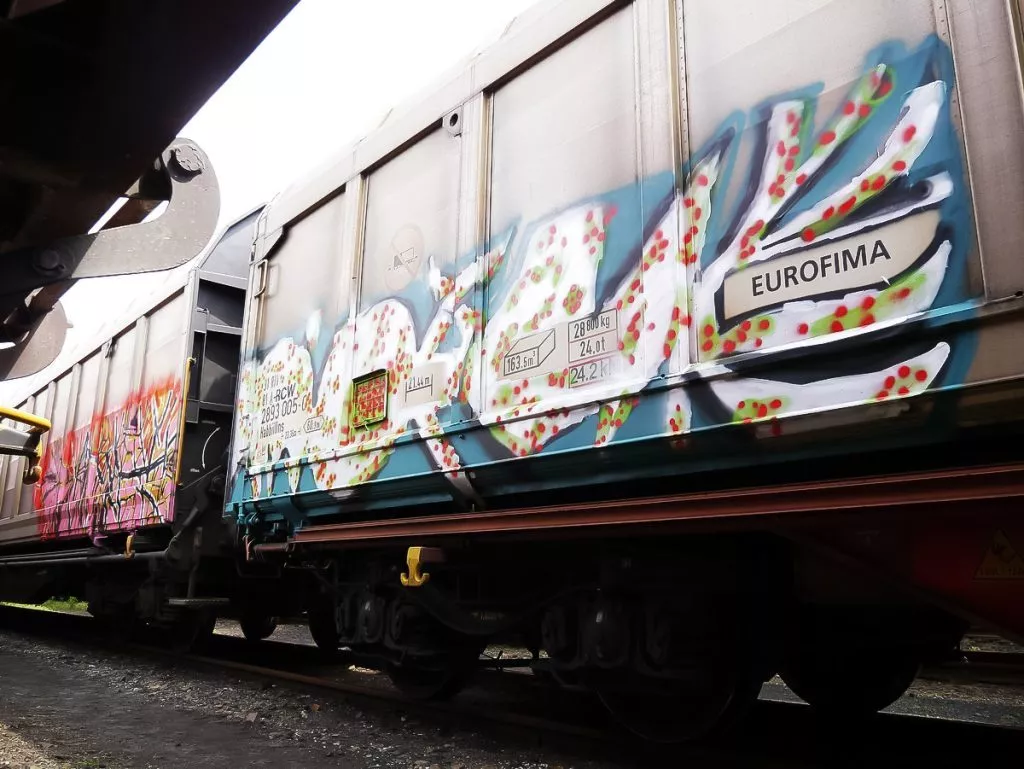
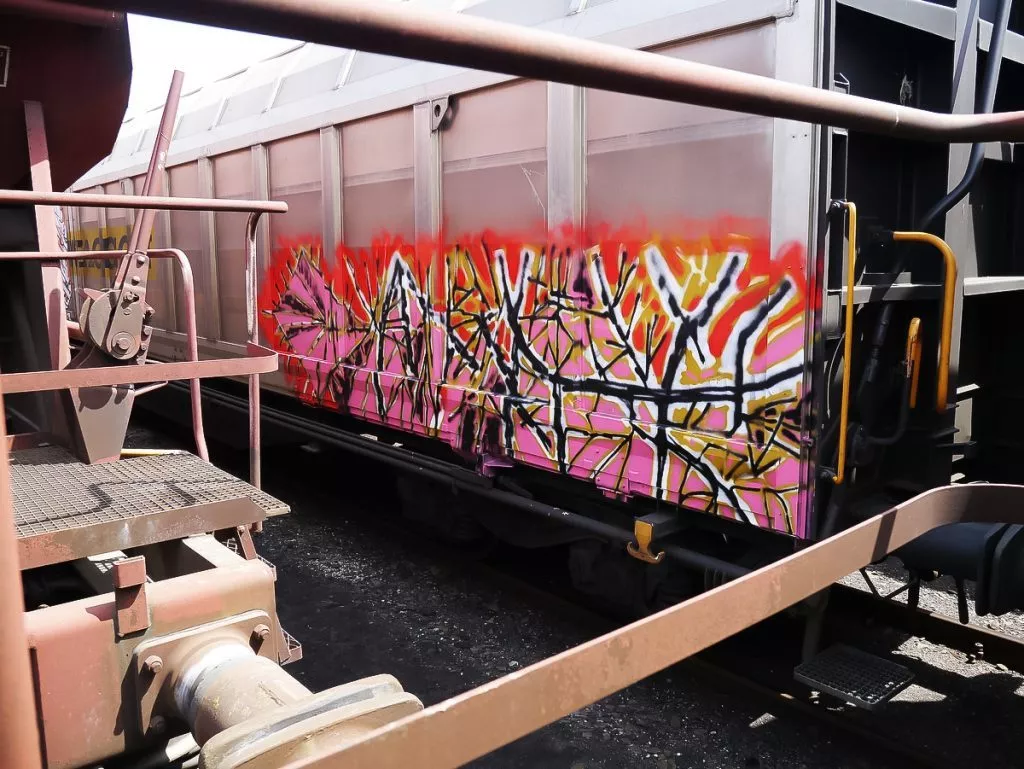
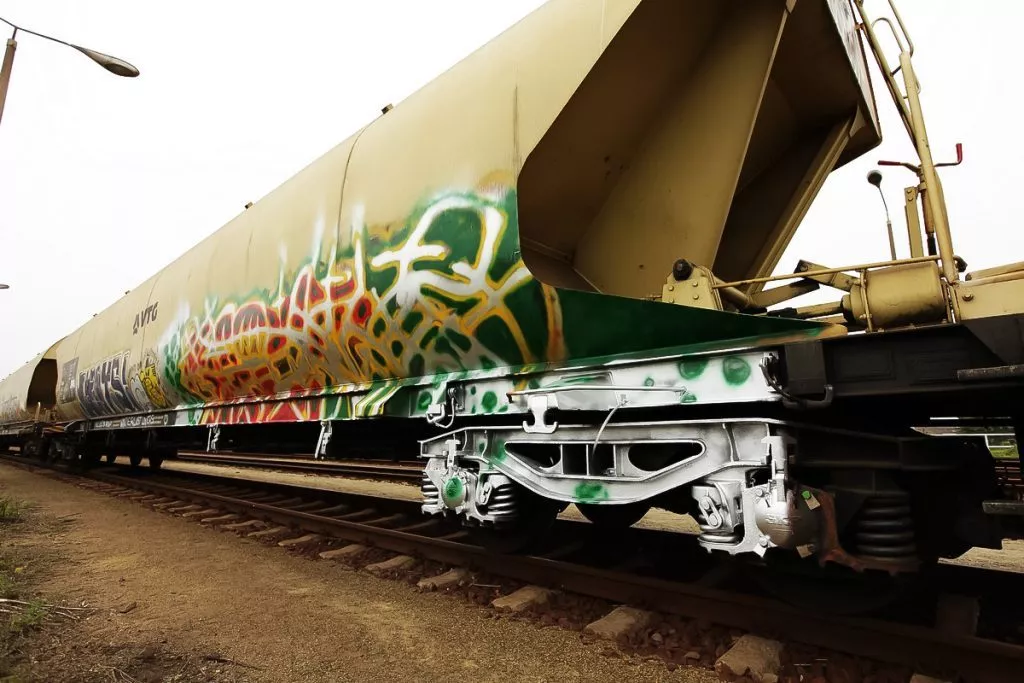
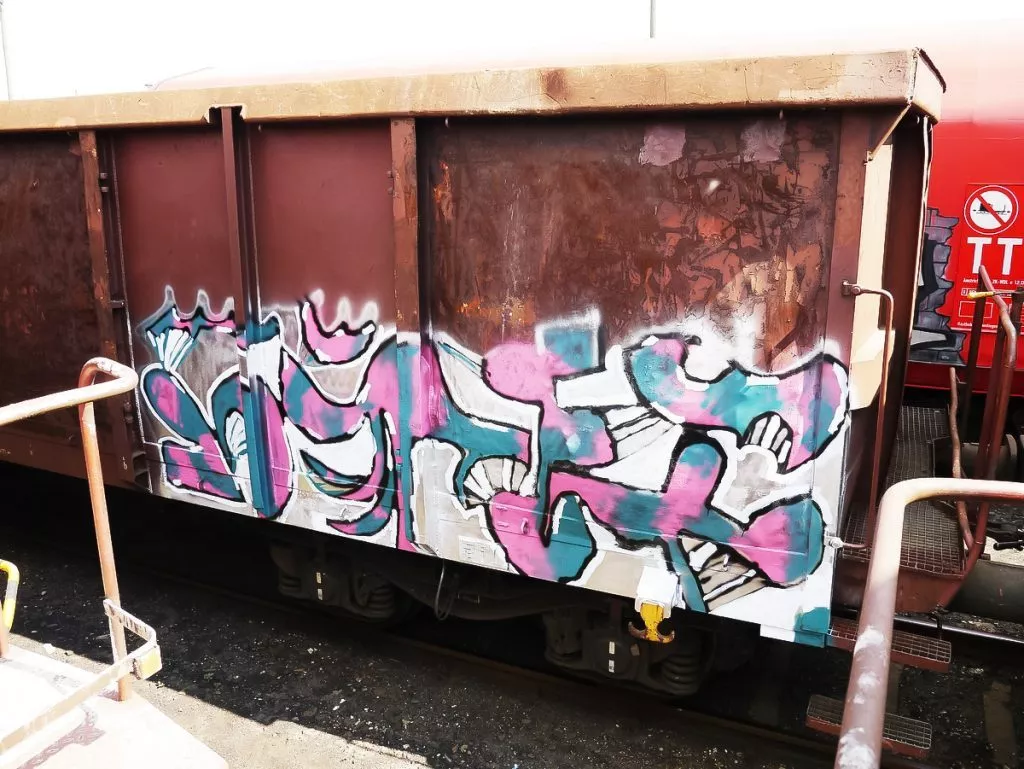
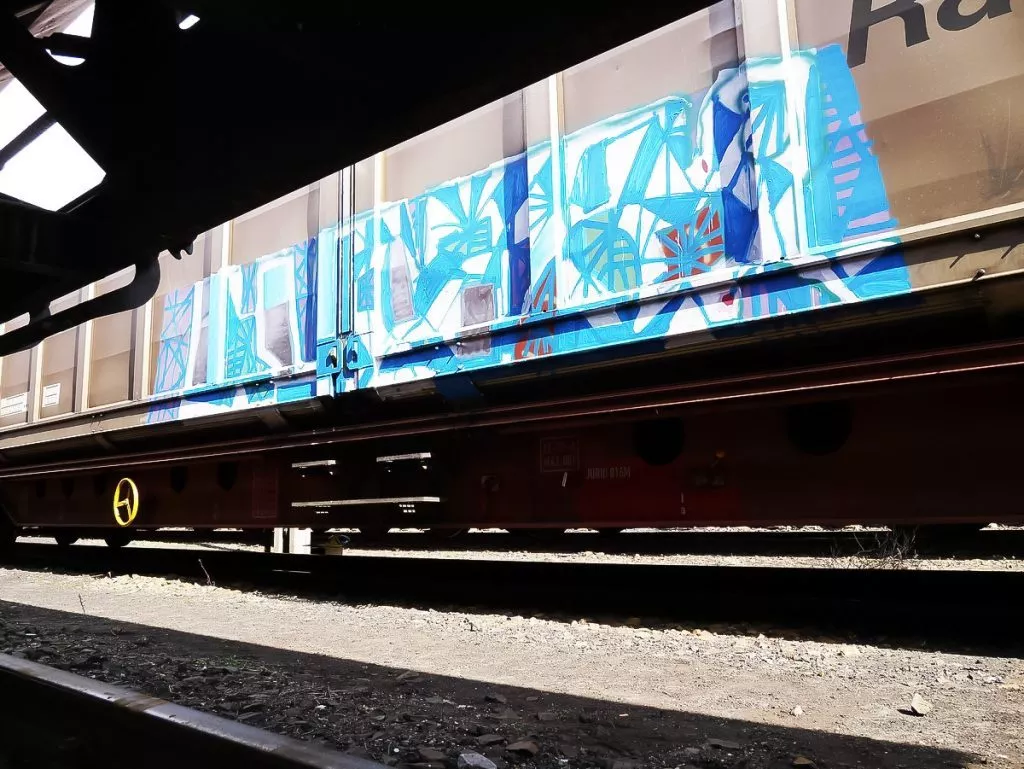
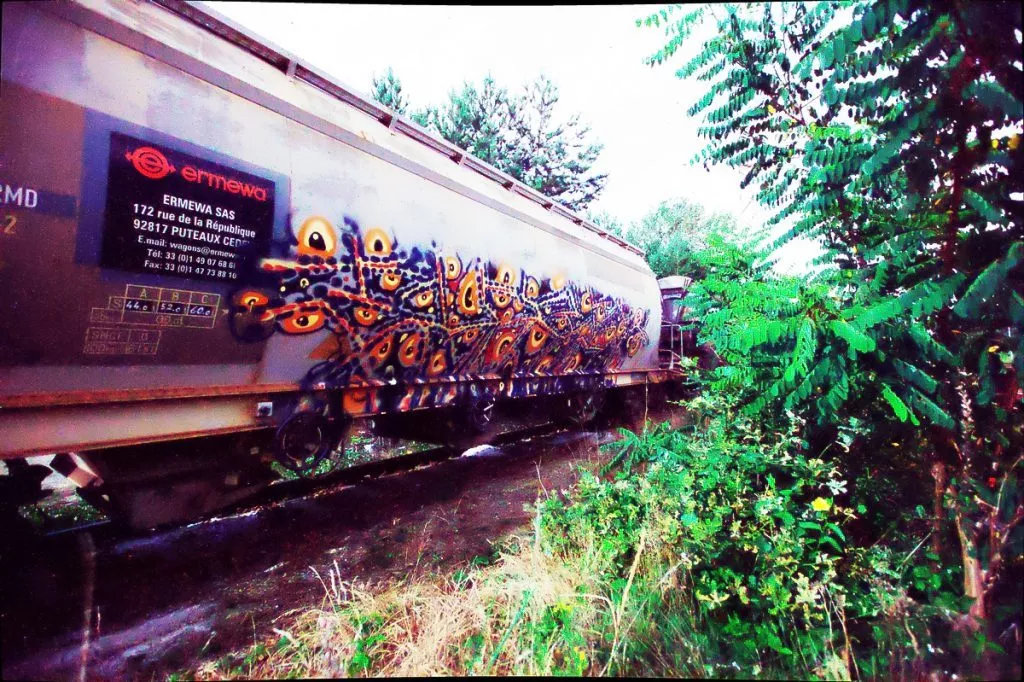
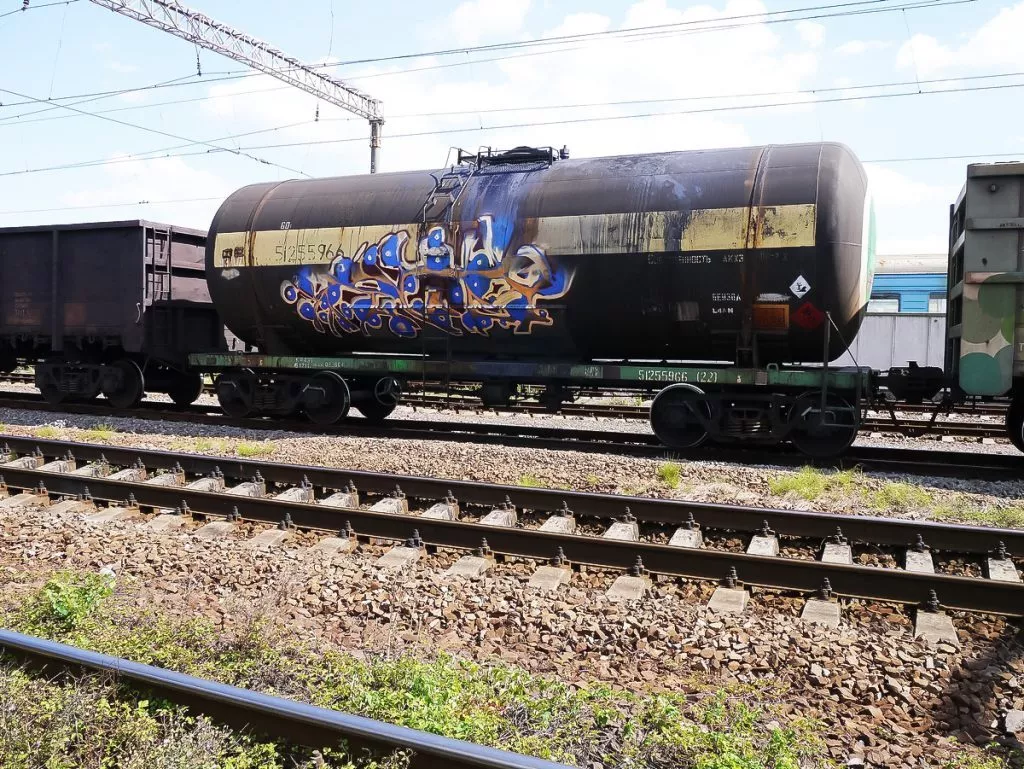
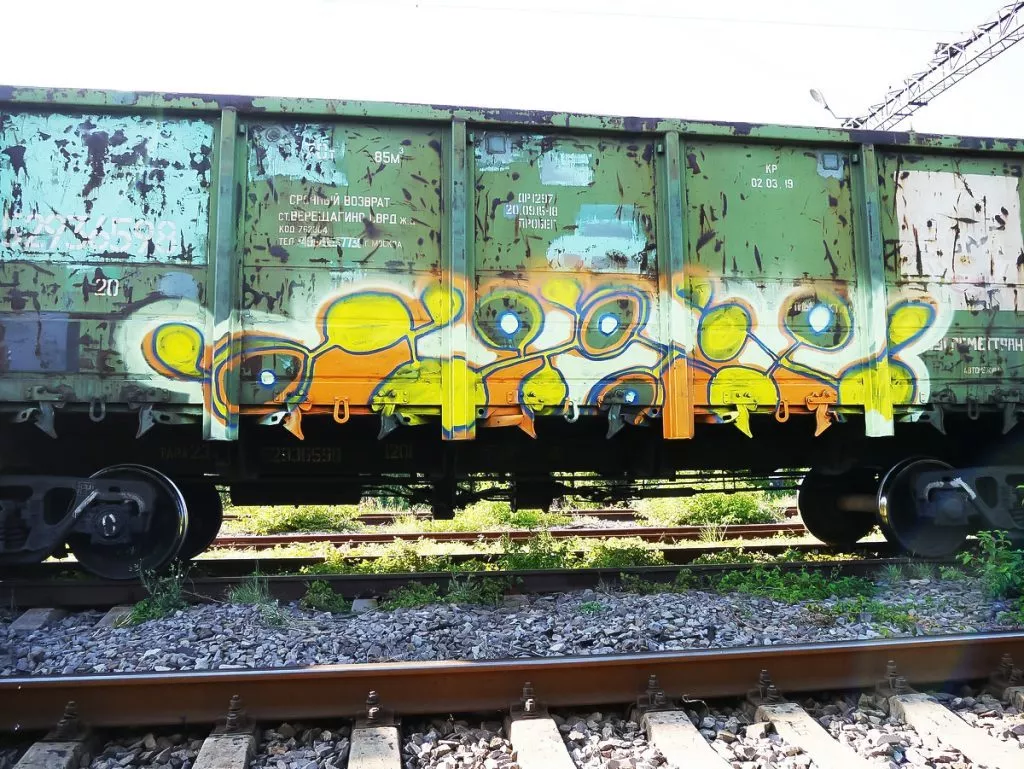
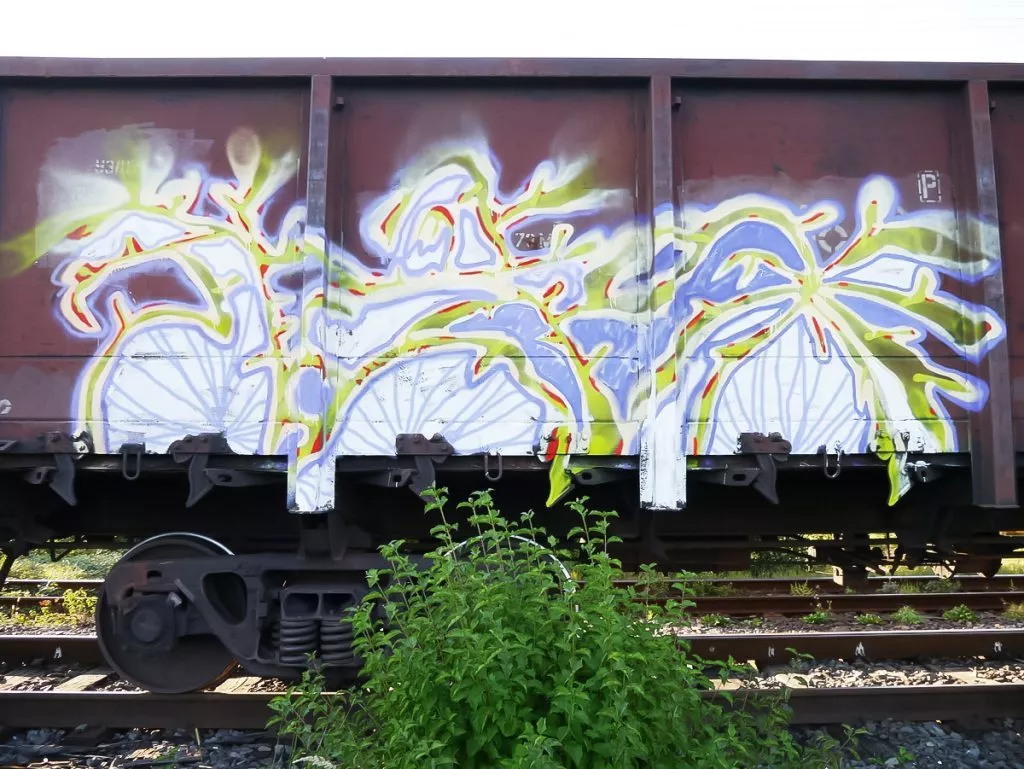
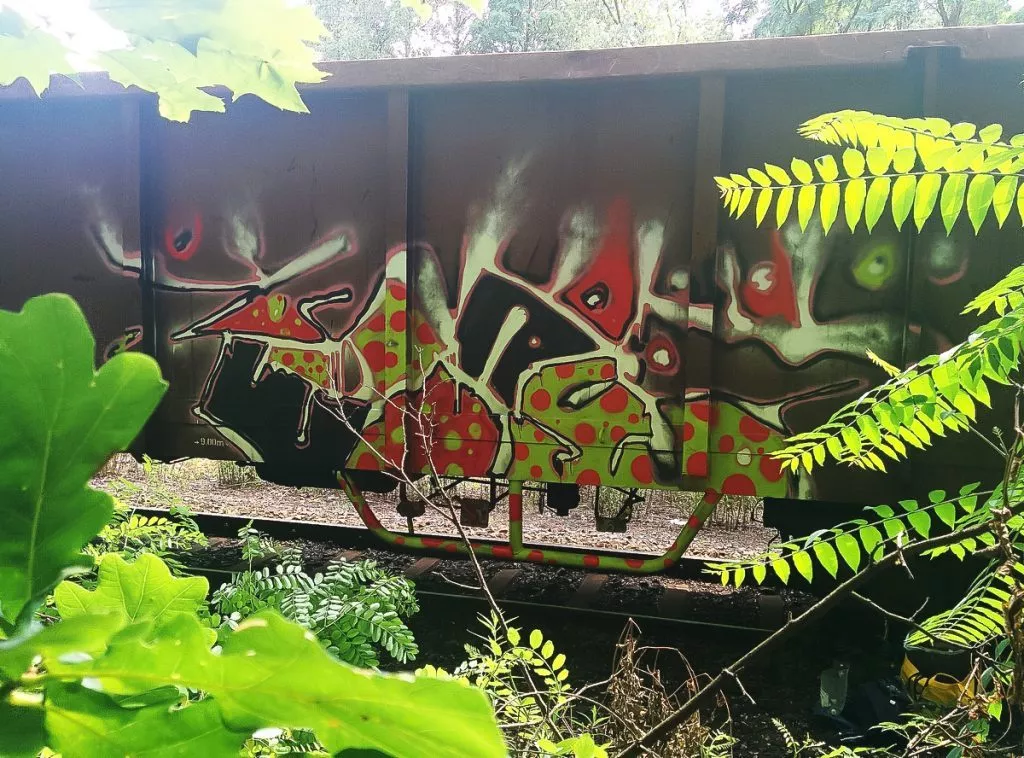
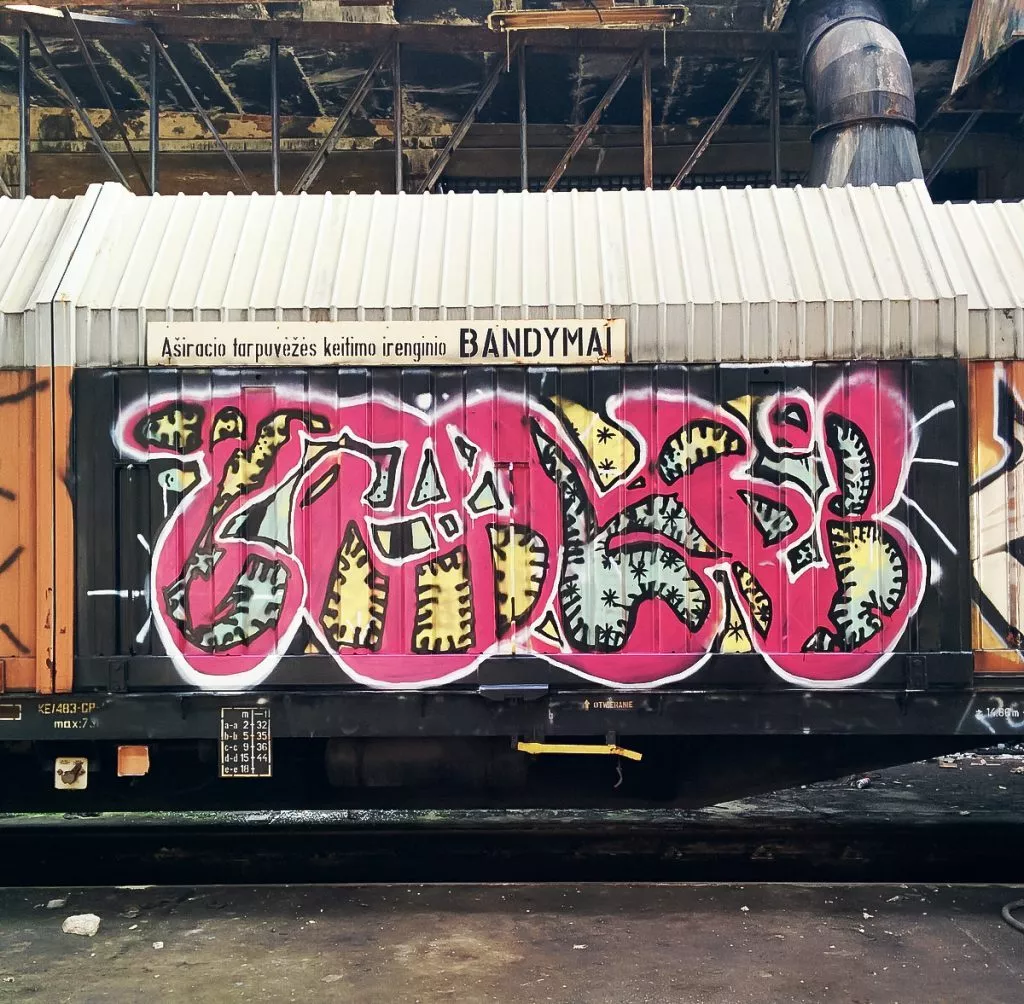
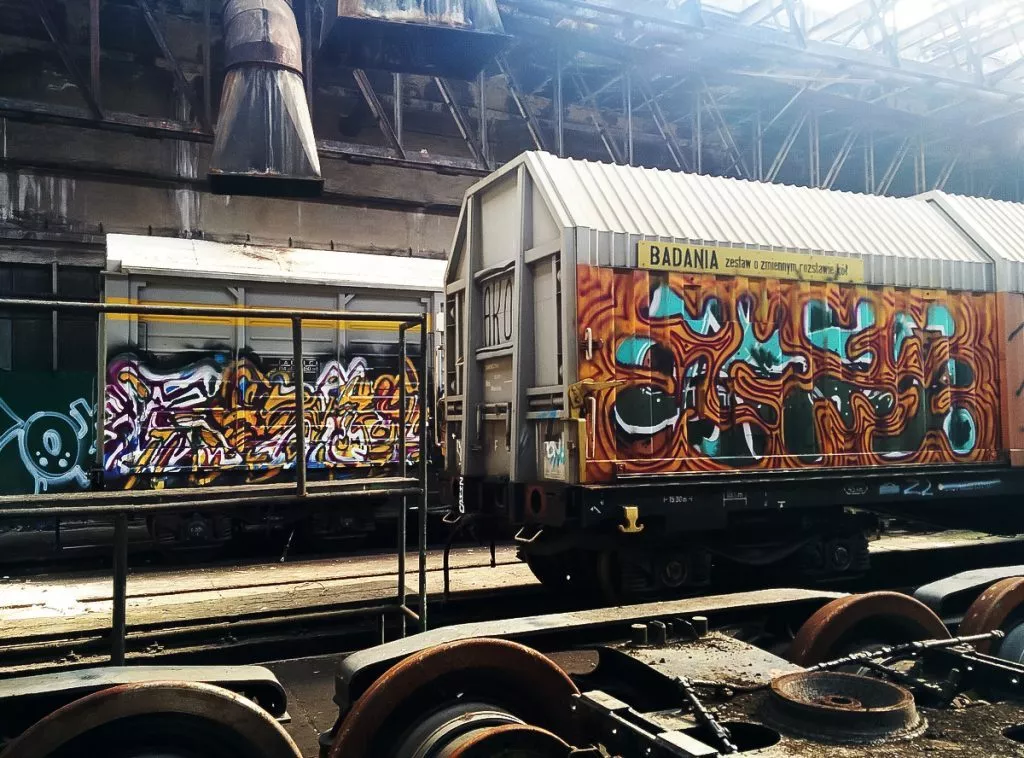
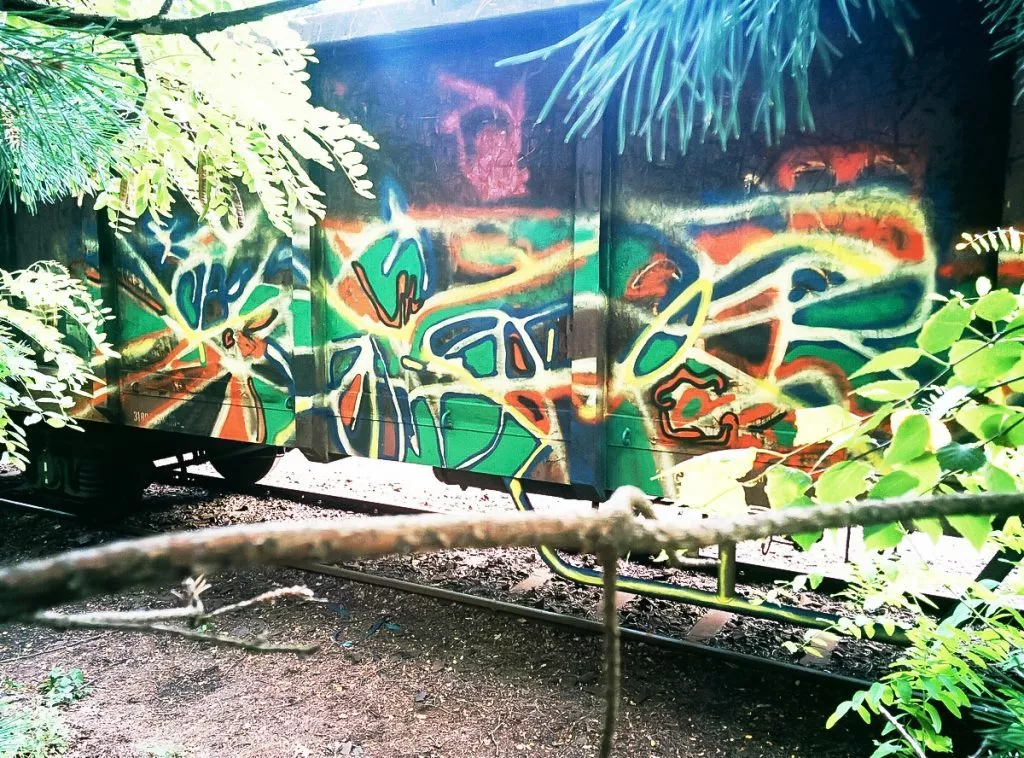
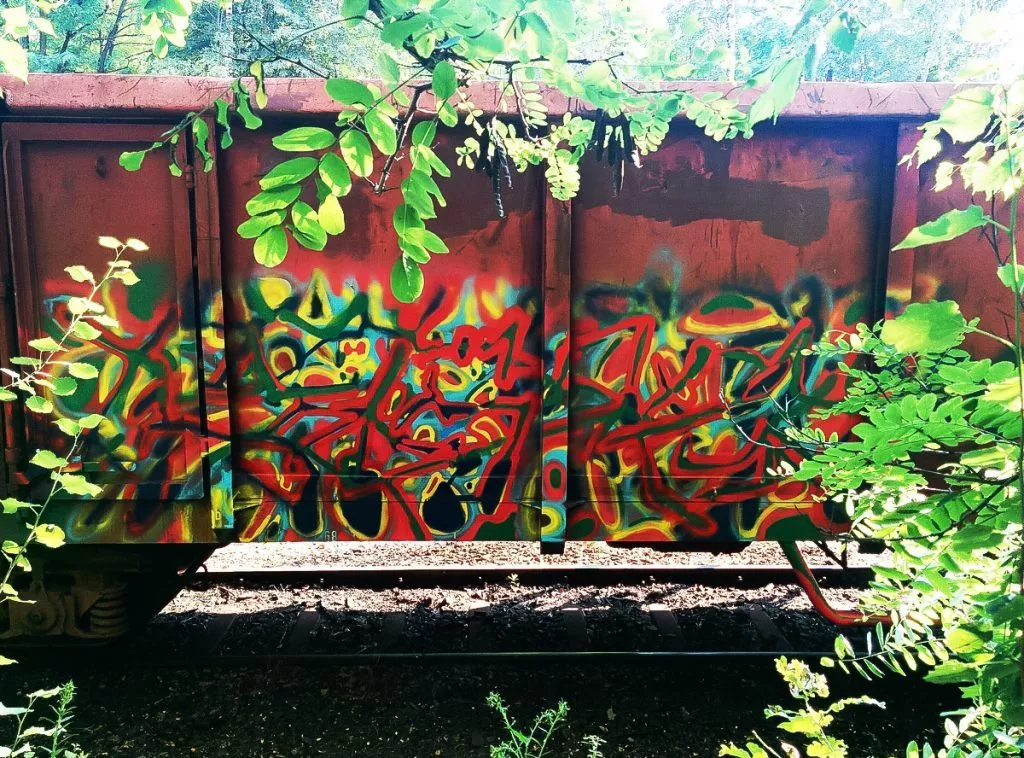
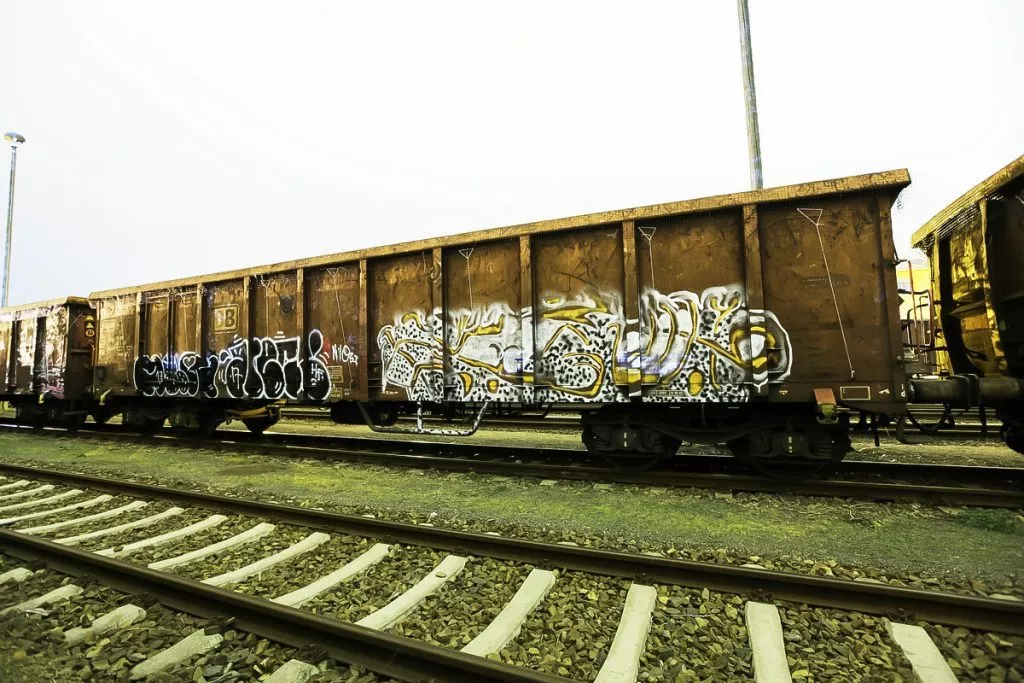
After his studies in 2013, Blazej felt the urge to travel and visited many countries, about 20 he says today. He stayed six months in Berlin in 2013 and went to Ukraine, where he visited already in 2010, meeting people of the Black Circle Festival. In 2013, he joined the festival team to organize the festival, learned the Ukrainian language and moved in 2015 to the Carpathian Mountains in the town Uzhgorod, where he lived, worked three years. On the search of his roots, because of his surname that is coming from this region, he really enjoyed the wild nature besides the culture and people there. In 2018, he moved back to Poznan, Poland, where he still lives and works today.
During this period between 2010 and 2015, he mainly painted on walls in abandoned places and freights. His at that time new abstract works show different experimentations with a more conceptual and minimalist approach. Sometimes he framed his abstract paintings, sometimes he left the composition, paint evolve without a frame. Some works resemble more a piece in its horizontal shape, others take over a part of the abandoned architecture or become in a certain way part of it, integrating elements like surrounding colours, shapes of natural elements, structures.
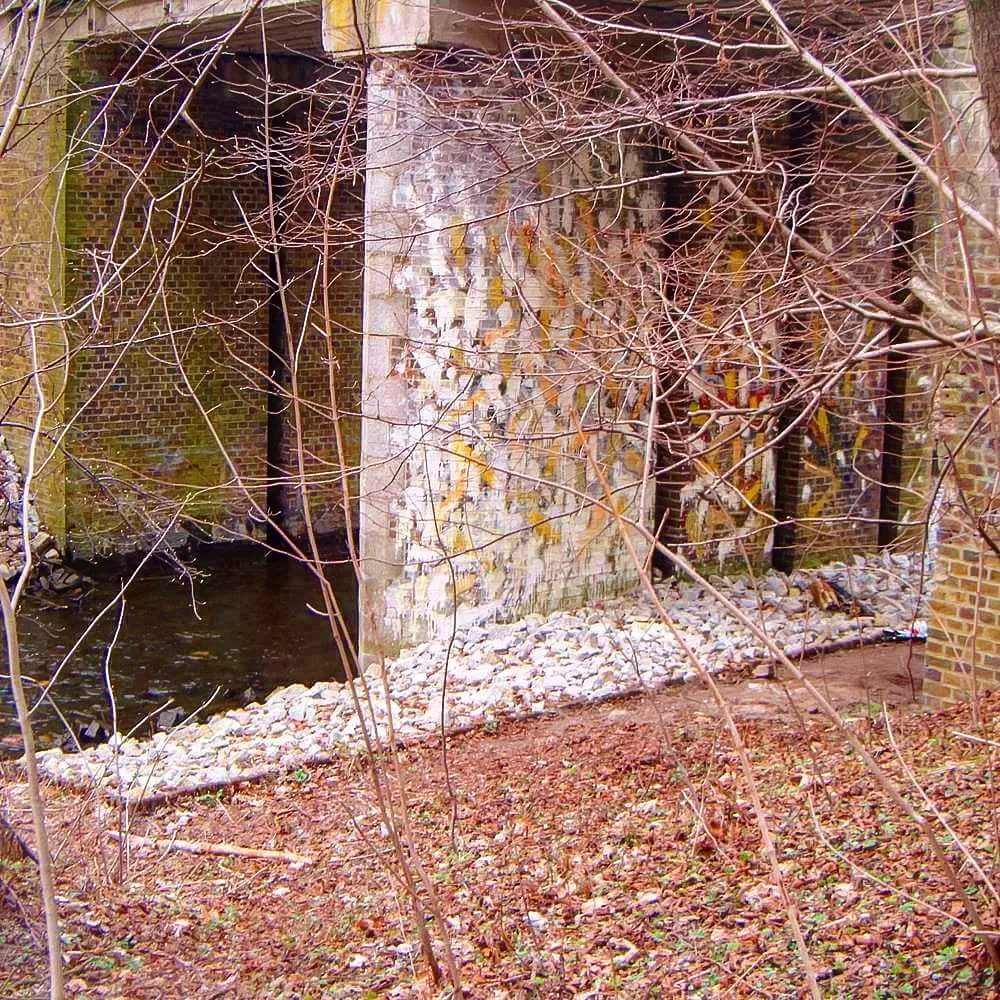
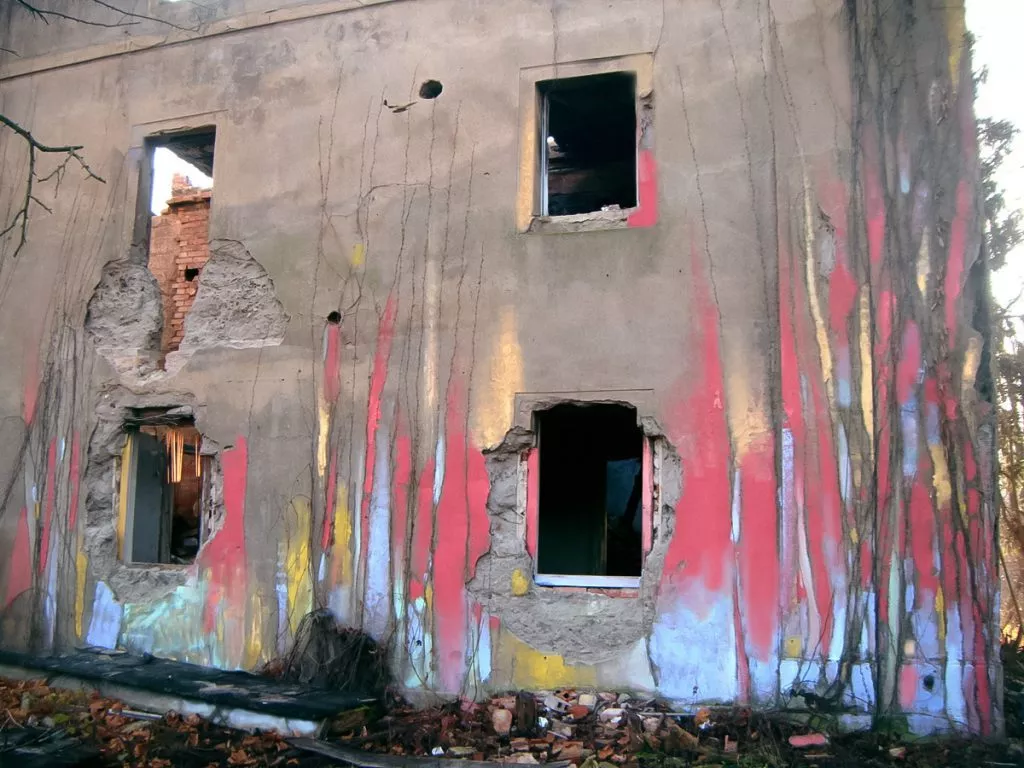
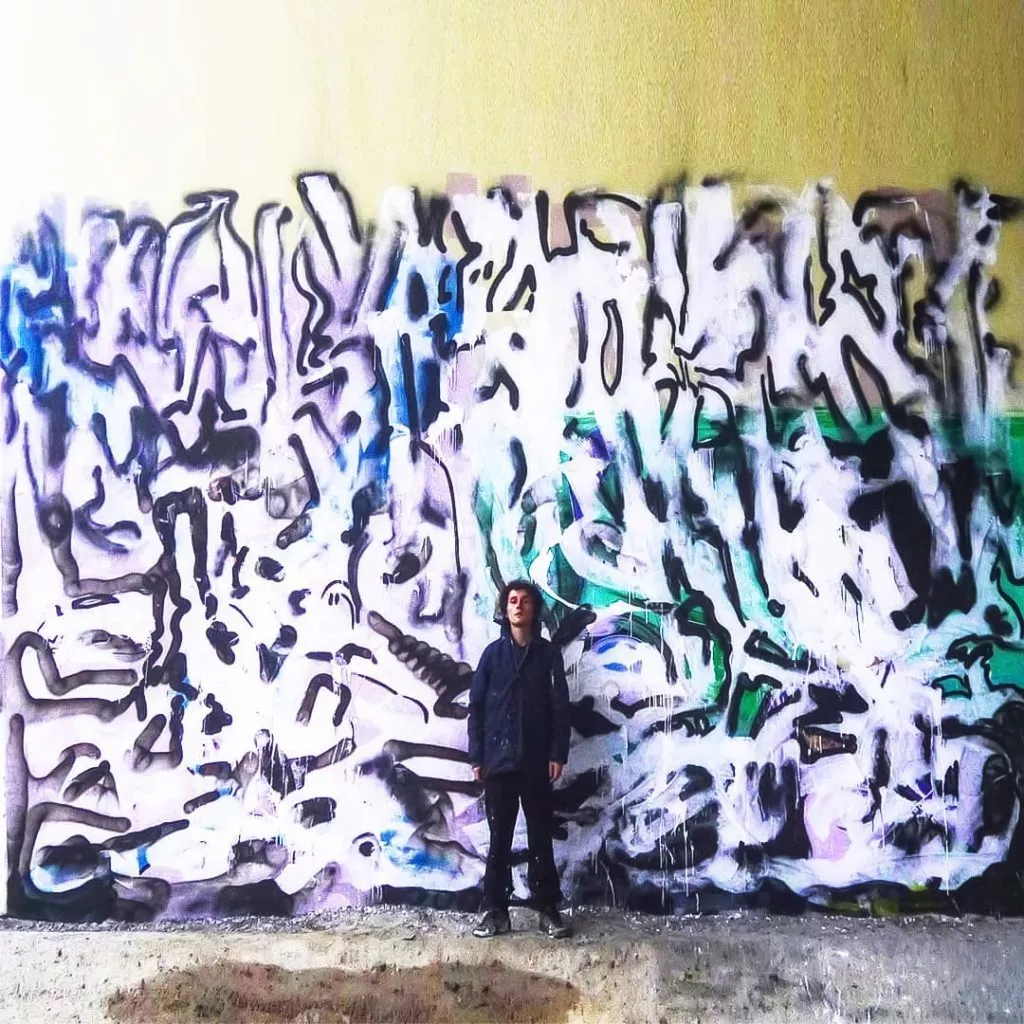
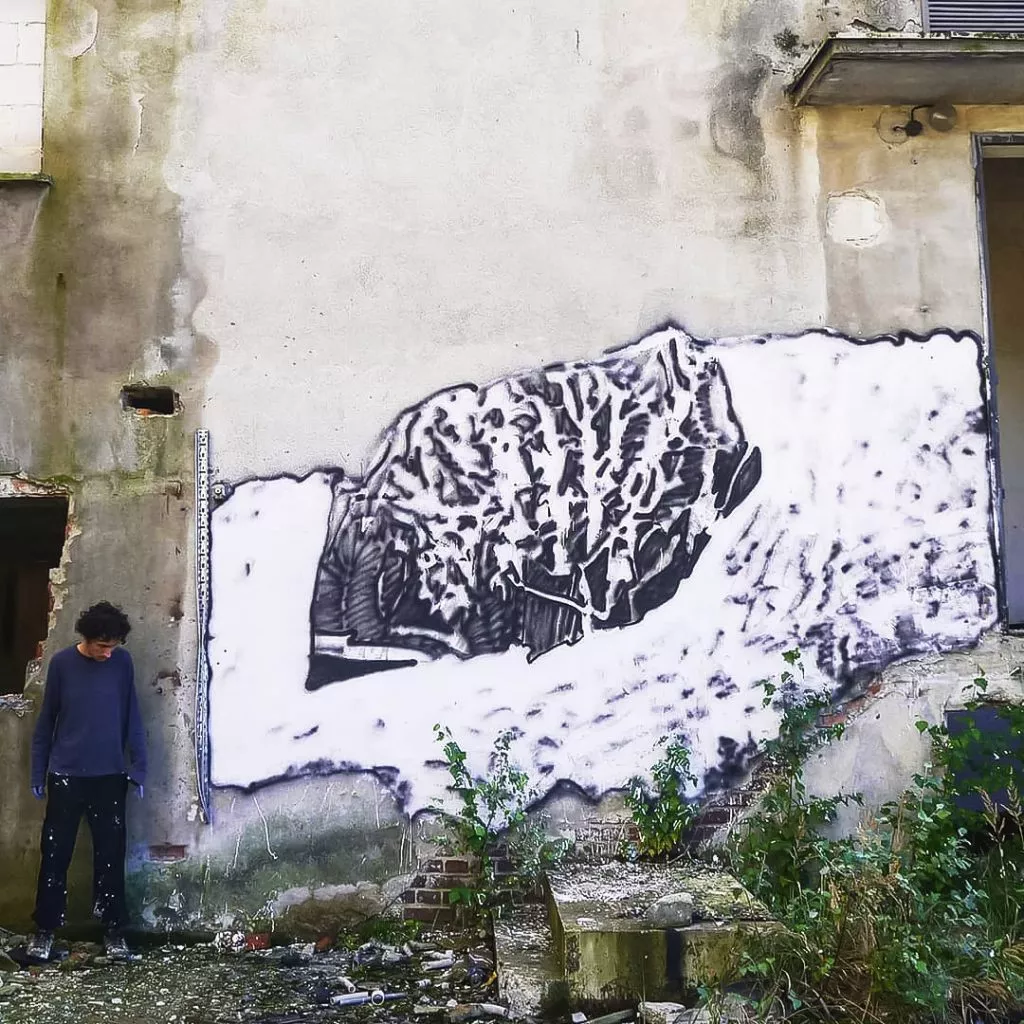
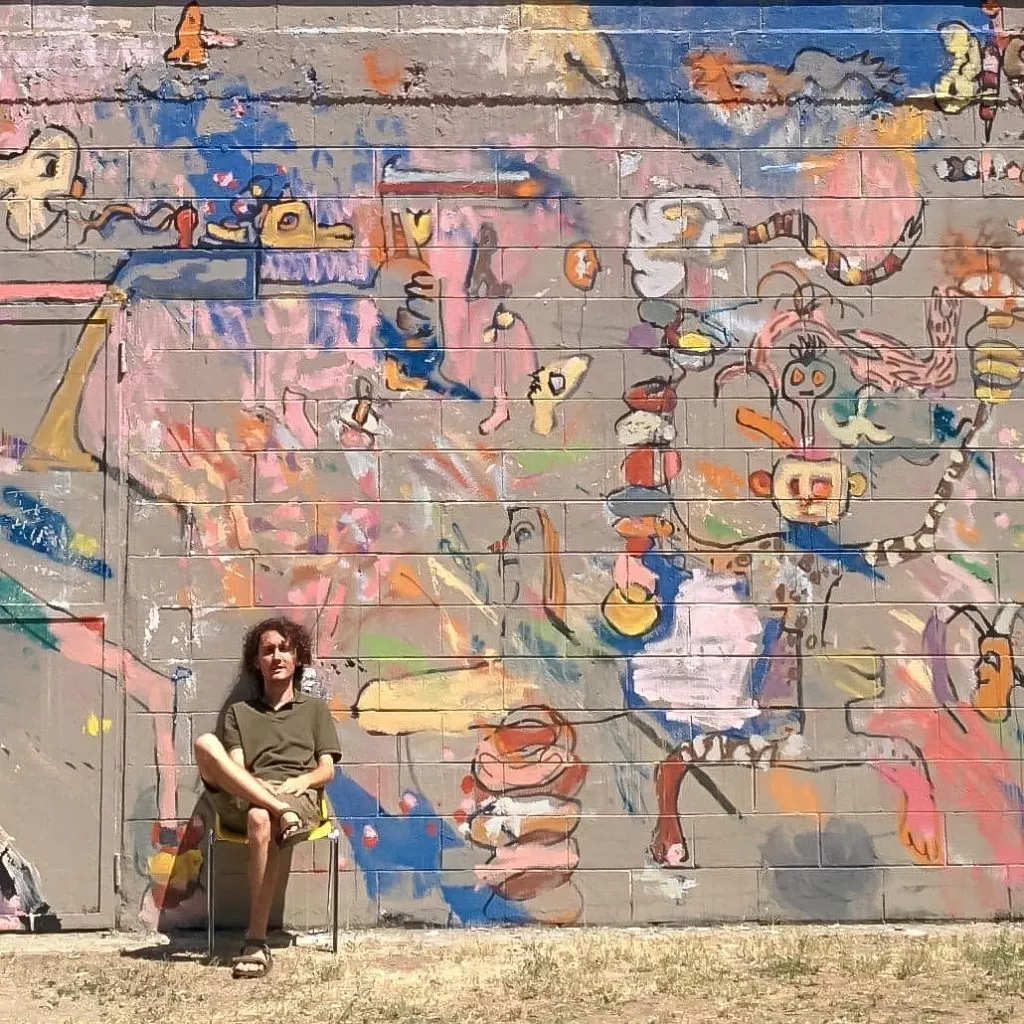
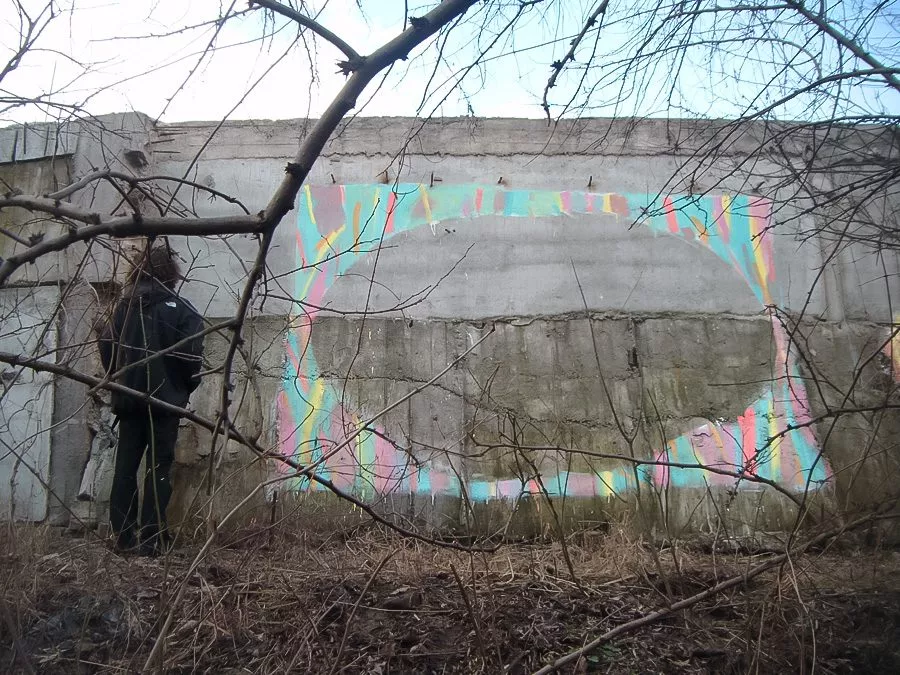
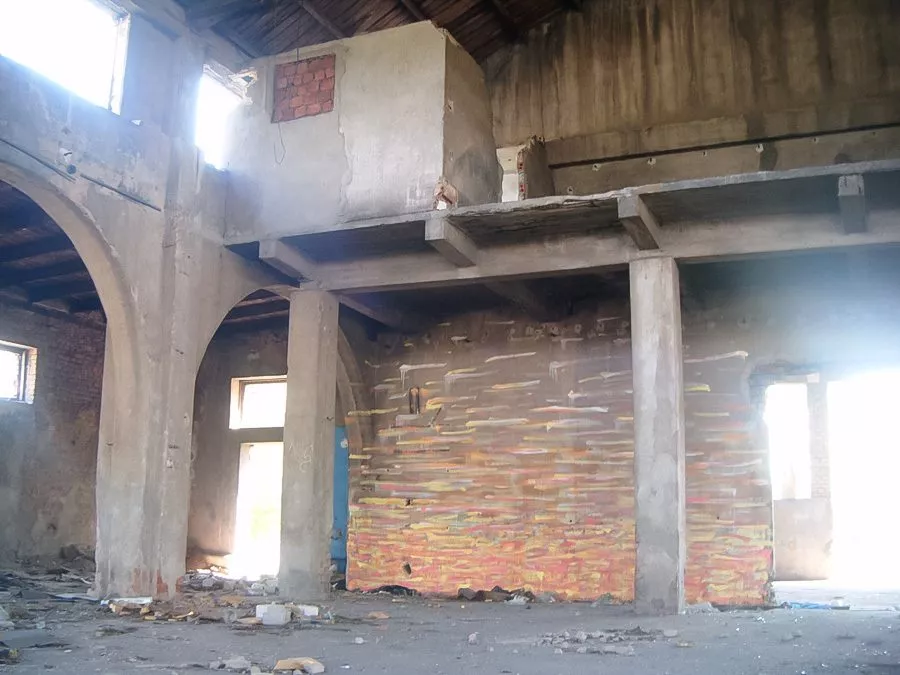
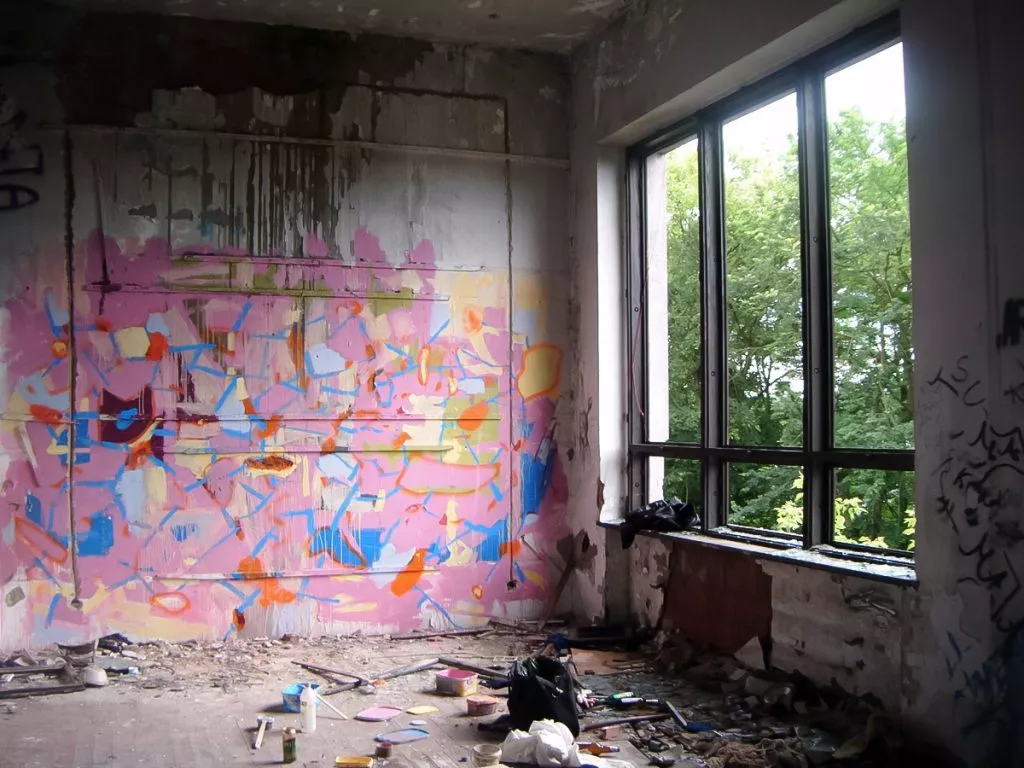
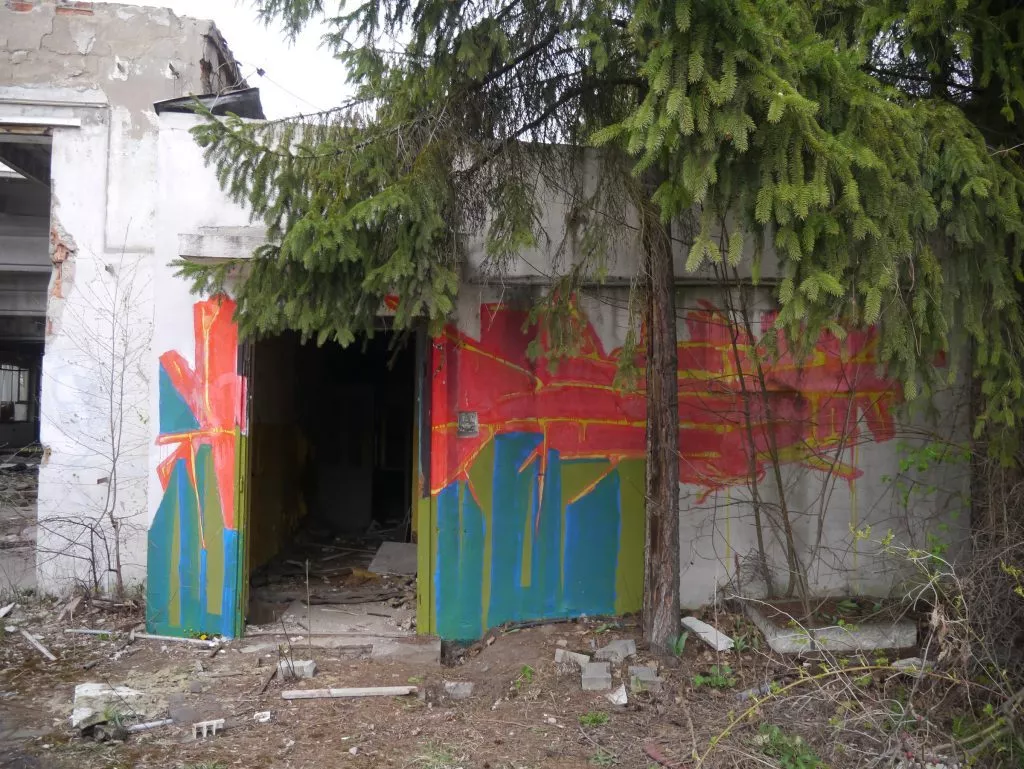
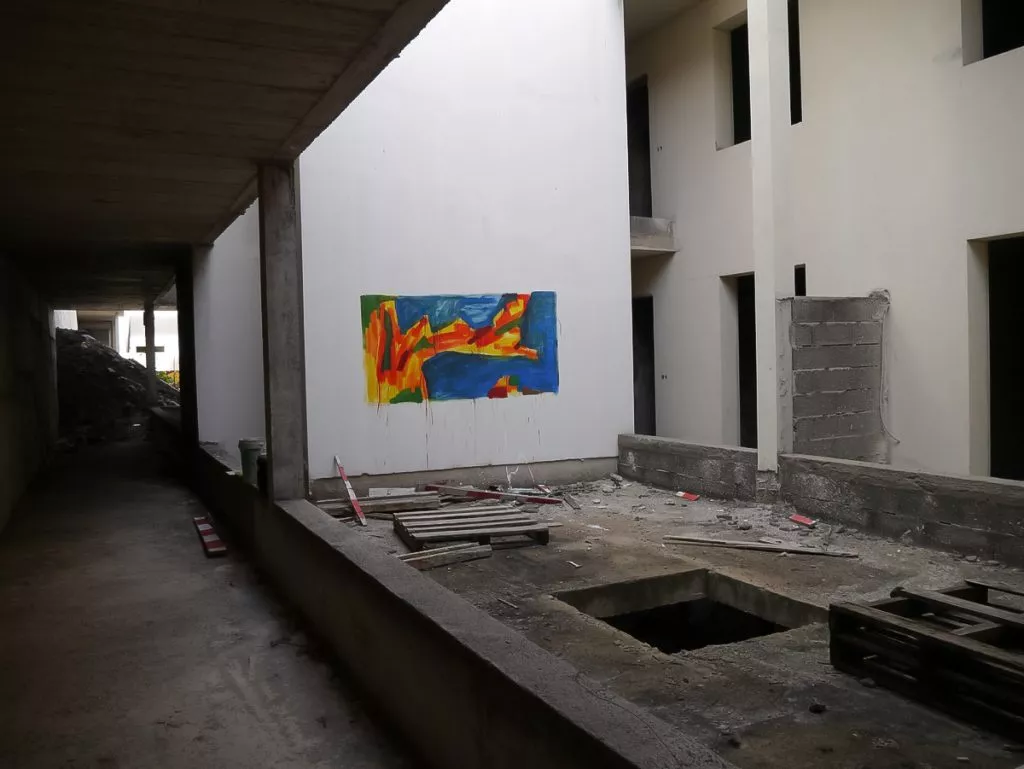
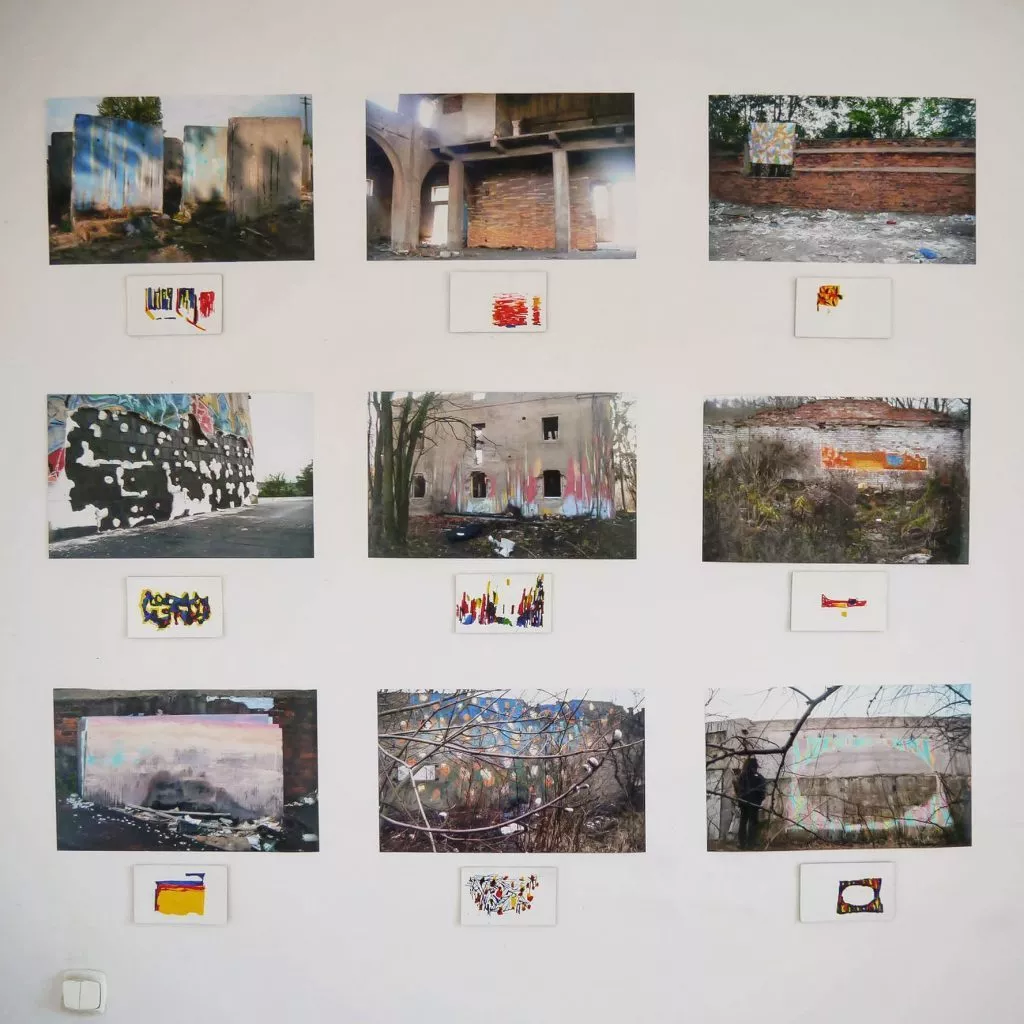
Painting processes on walls
The practice of graffiti writing influenced Blazej Rusin’s artistic evolution and still does. He learned self-discipline, the monumental size of surfaces to paint on doesn’t impress him and he is still orientated towards the painting itself, and not towards the whole art world, he says. Nowadays, he paints mainly on walls and canvases in his studio. For his wall paintings he uses acrylic, brushes, rollers, pumps and some spray paint, but less and less, never really been a big fan of it. For his outdoor works, he never does a specific sketch, even though he says he has a library of sketches in his mind. In fact, he created thousands of sketches over the years, numbered and archived in boxes. Sometimes he does a sketch for a commissioned wall in advance. For him, drawing and sketching is the predestinated medium for capturing emotional and intellectual values, an inner self look. It is like a diary, where he can digest personal issues and develop artistic ideas. Most of the sketches are done with a pen and are mainly monochromatic. And for his walls, improvisation still plays a major role as well. Inspired by the place where he is going to paint and by elements of the surrounding, like plants, textures, the architecture etc, he composes freely to create a dialogue with the place. Only his camera helps him sometimes in the process of dealing with scale, or to check the composition balance looking at a mirrored picture of the work. Starting a work spontaneously with the three primary colours, he then mixes them to get 9, 20 or more different chromatic tones and nuances, orchestrating them like a conductor in different shapes, he says. By this way, an executive calculation is involved to control the chromatic harmony.
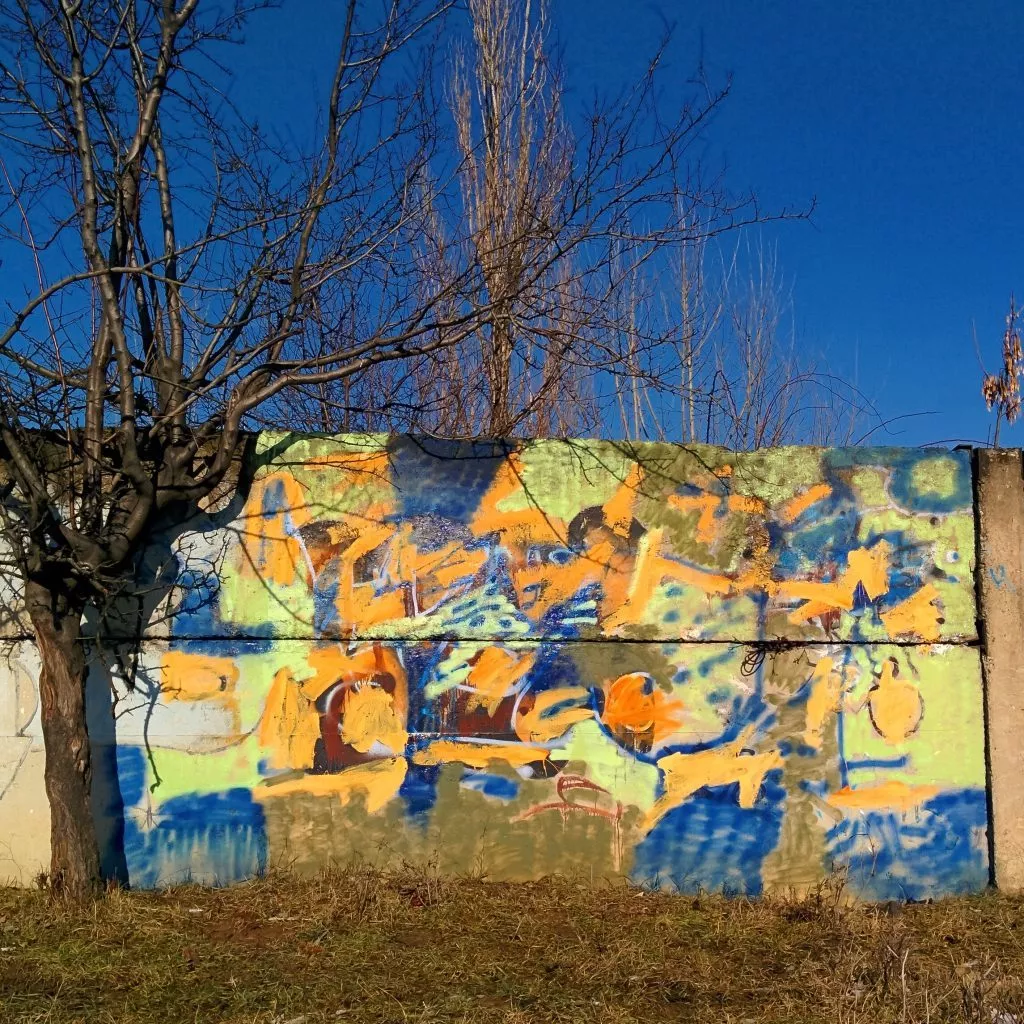
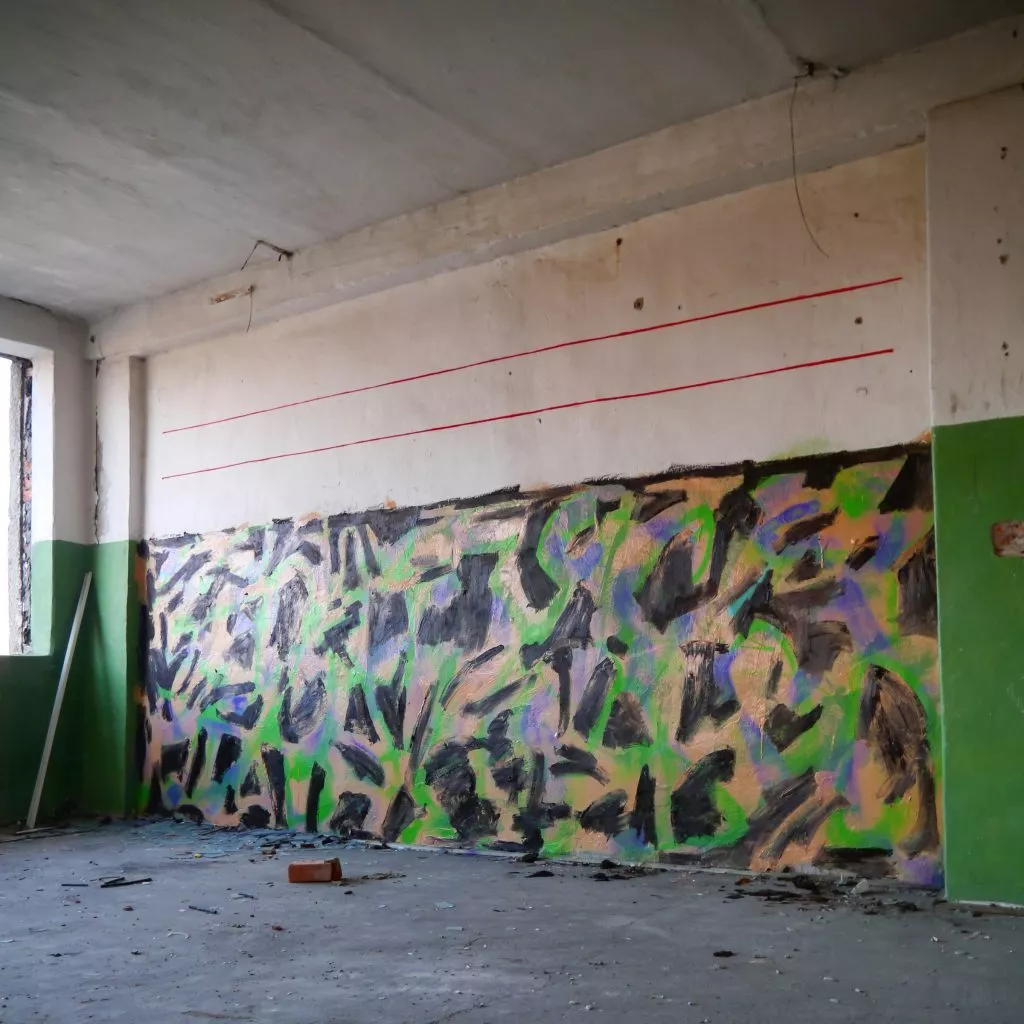
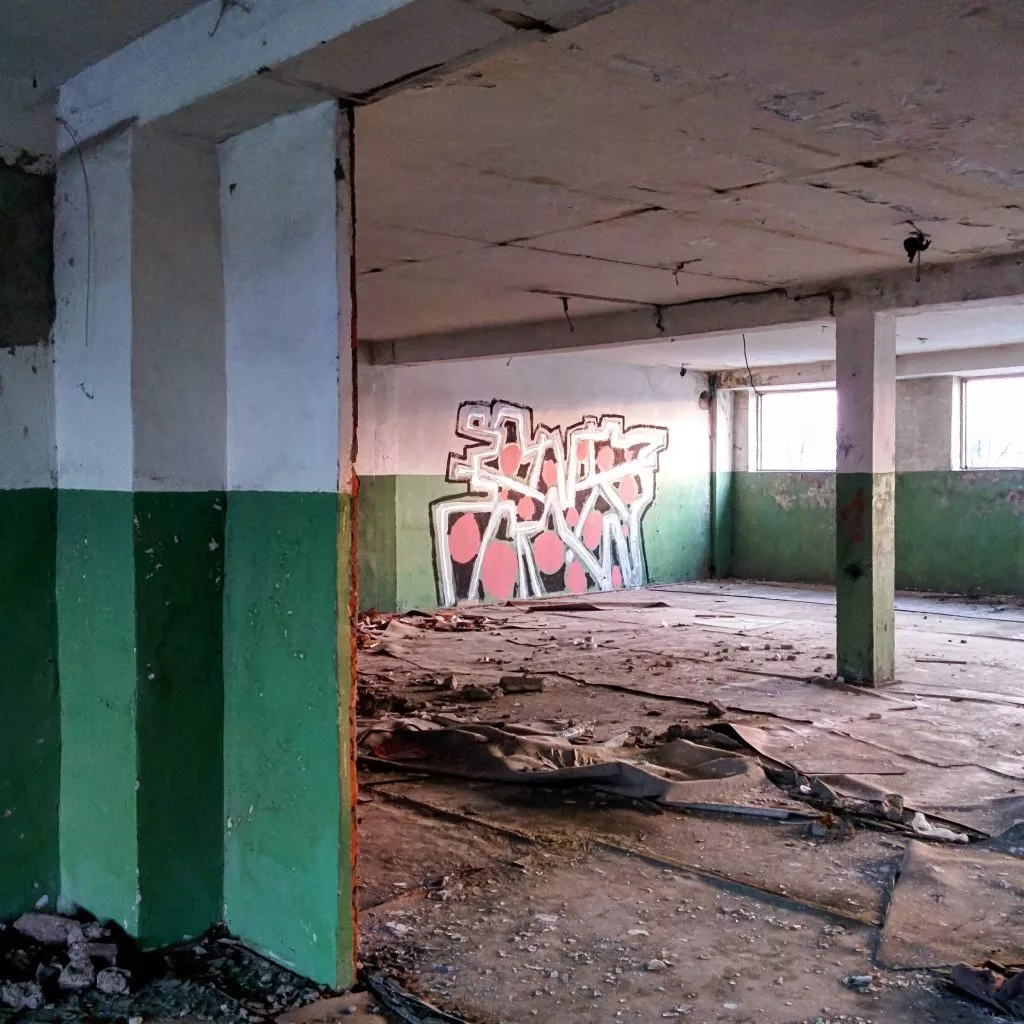
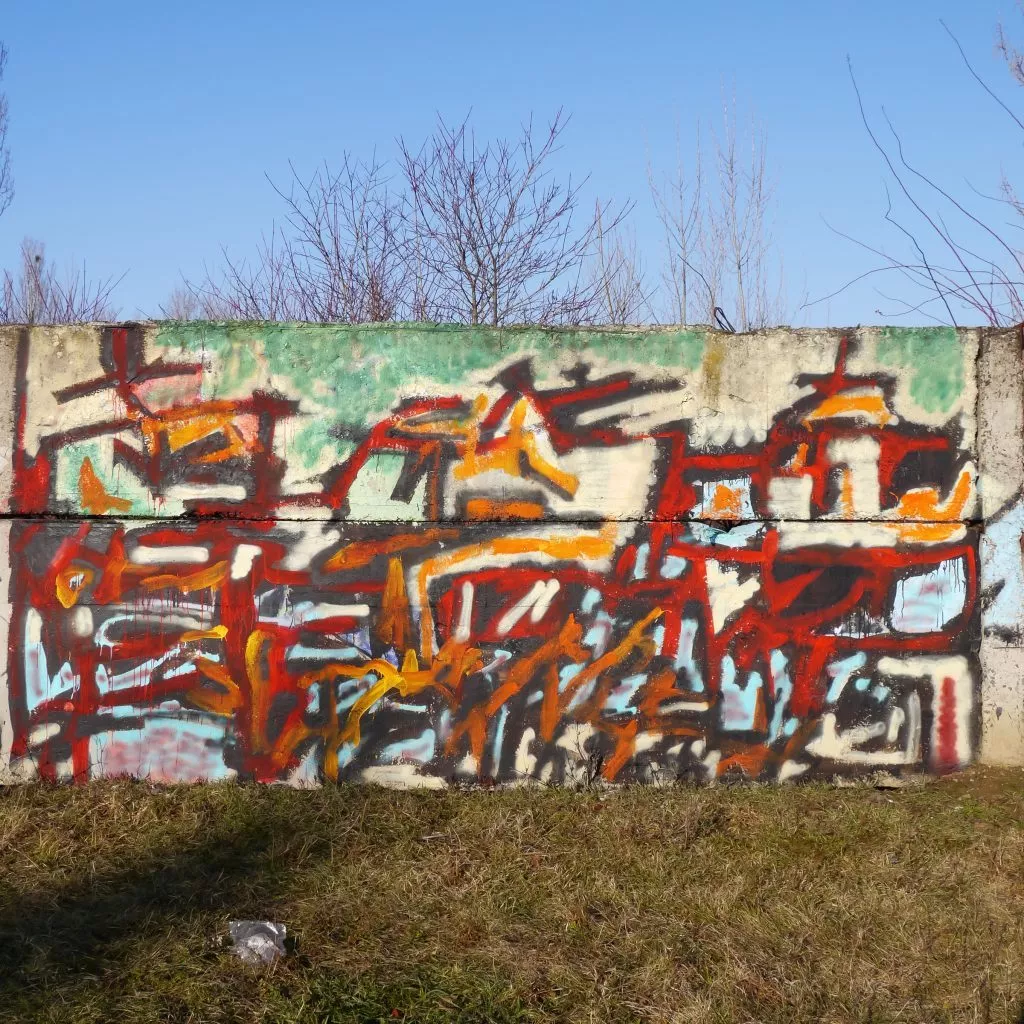
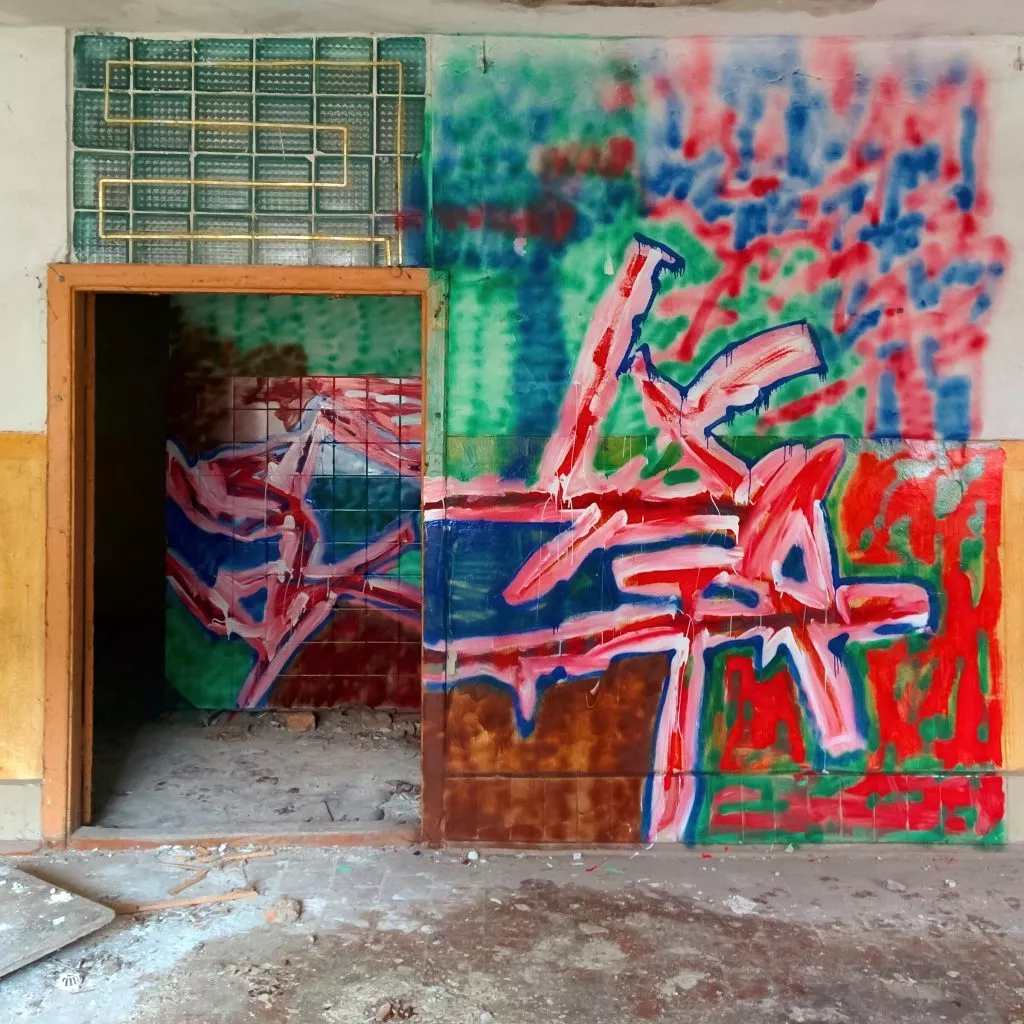
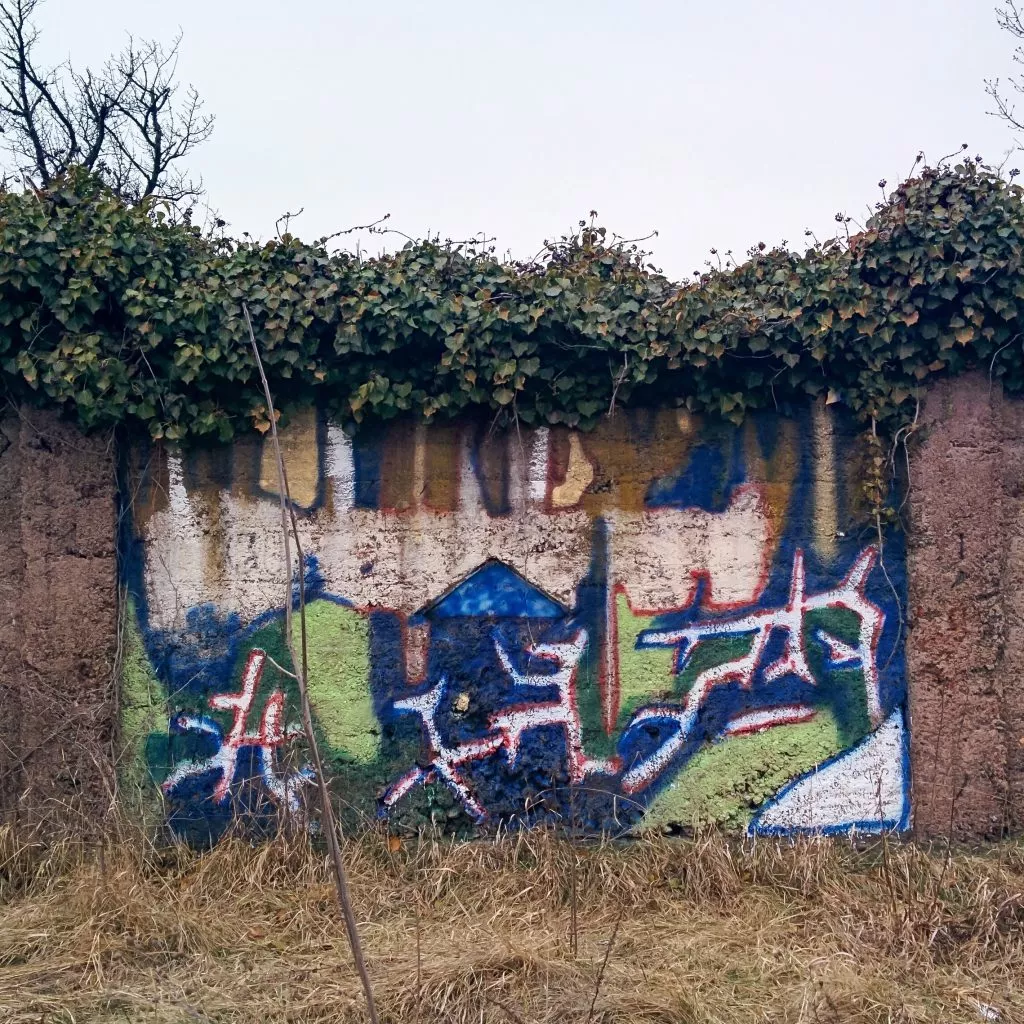
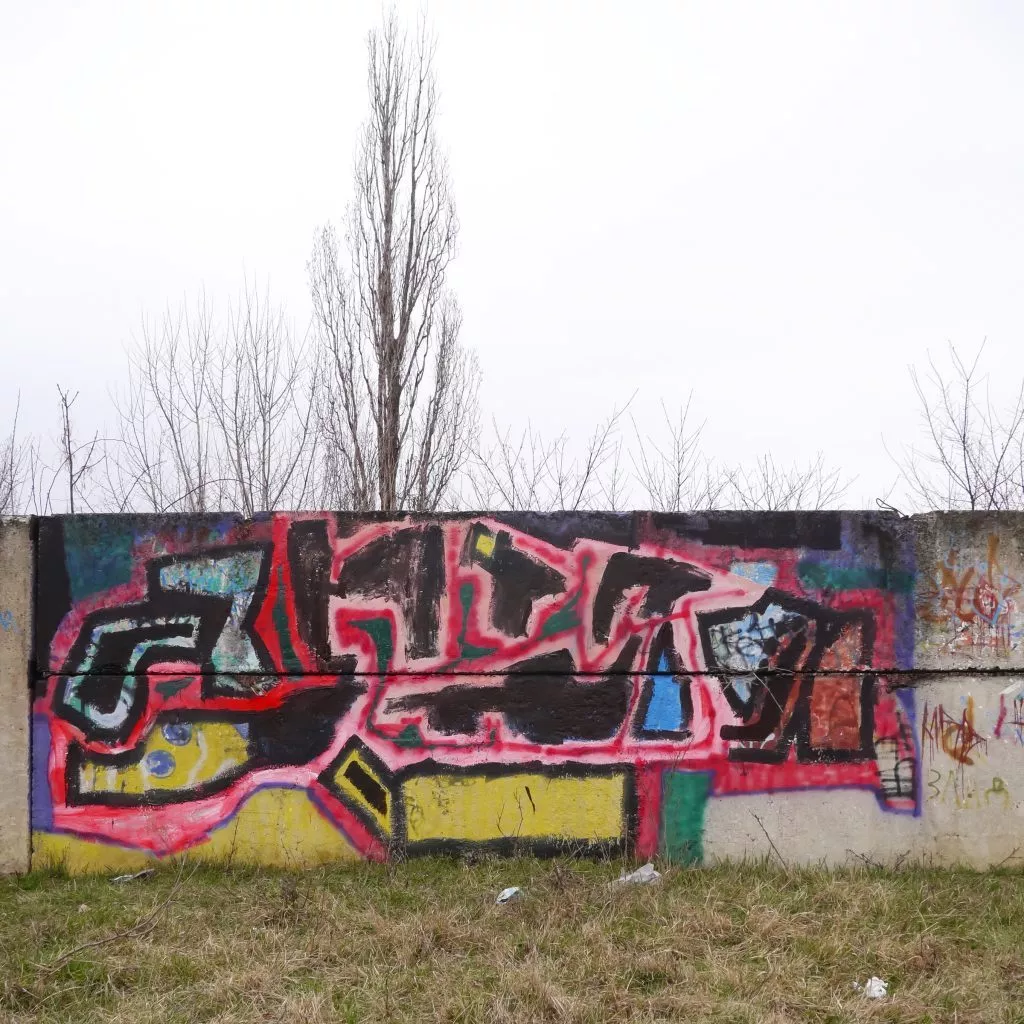
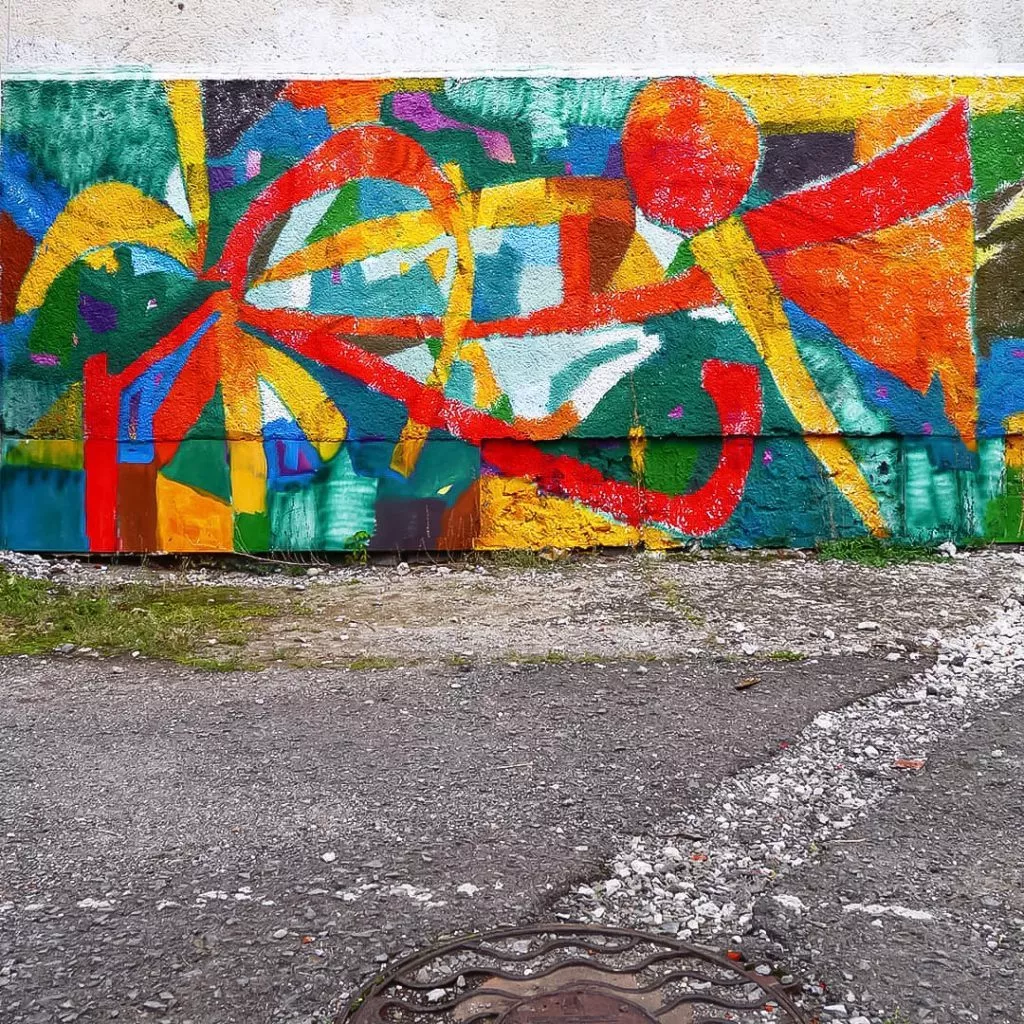
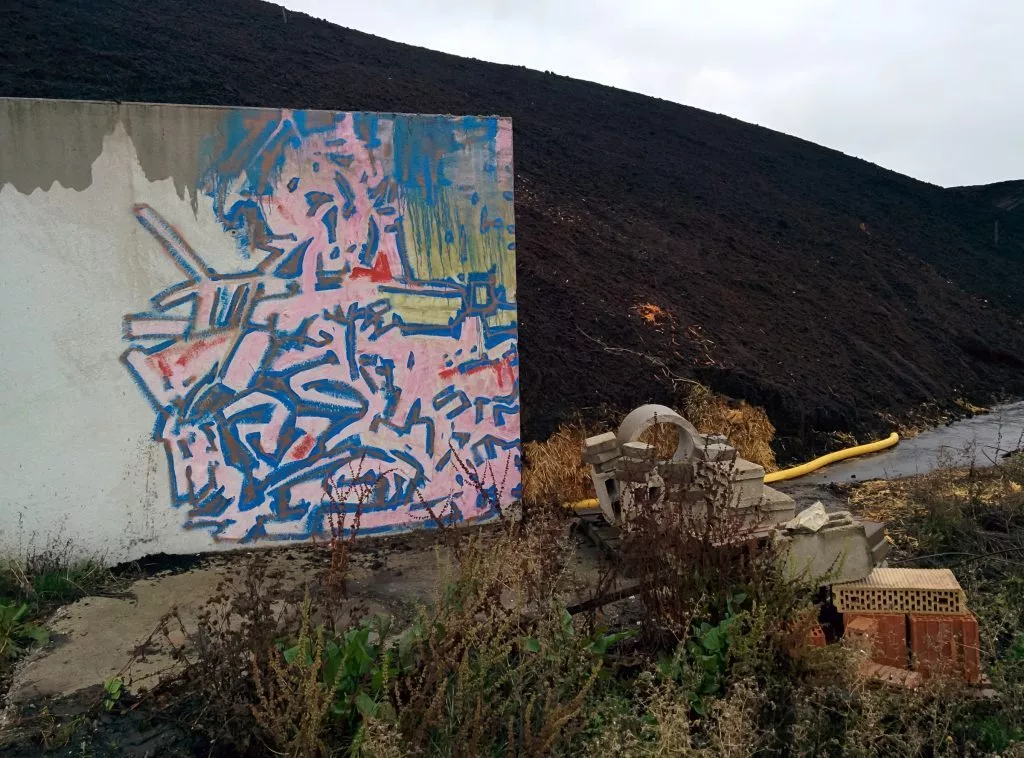
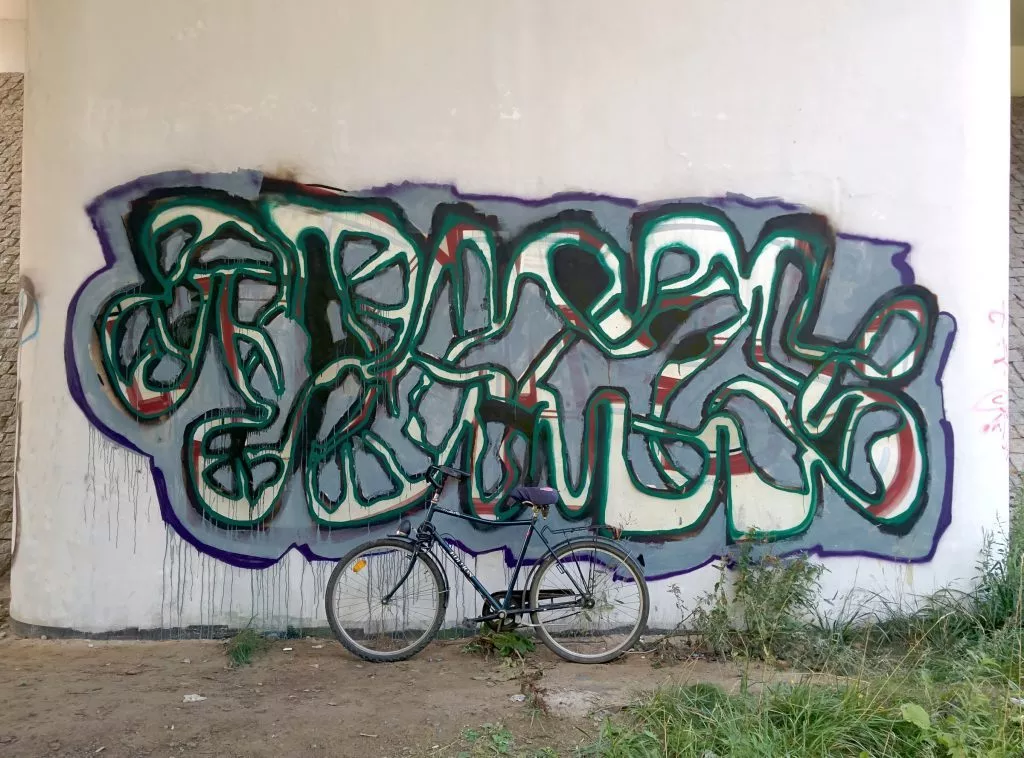
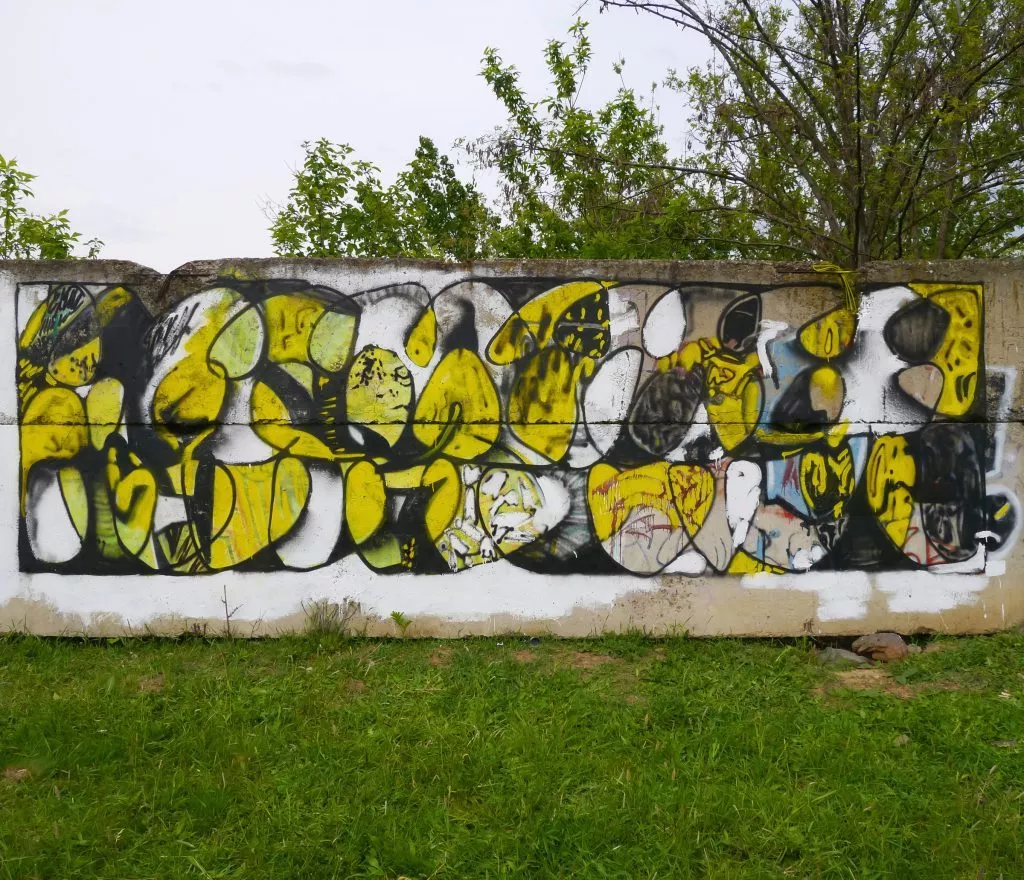
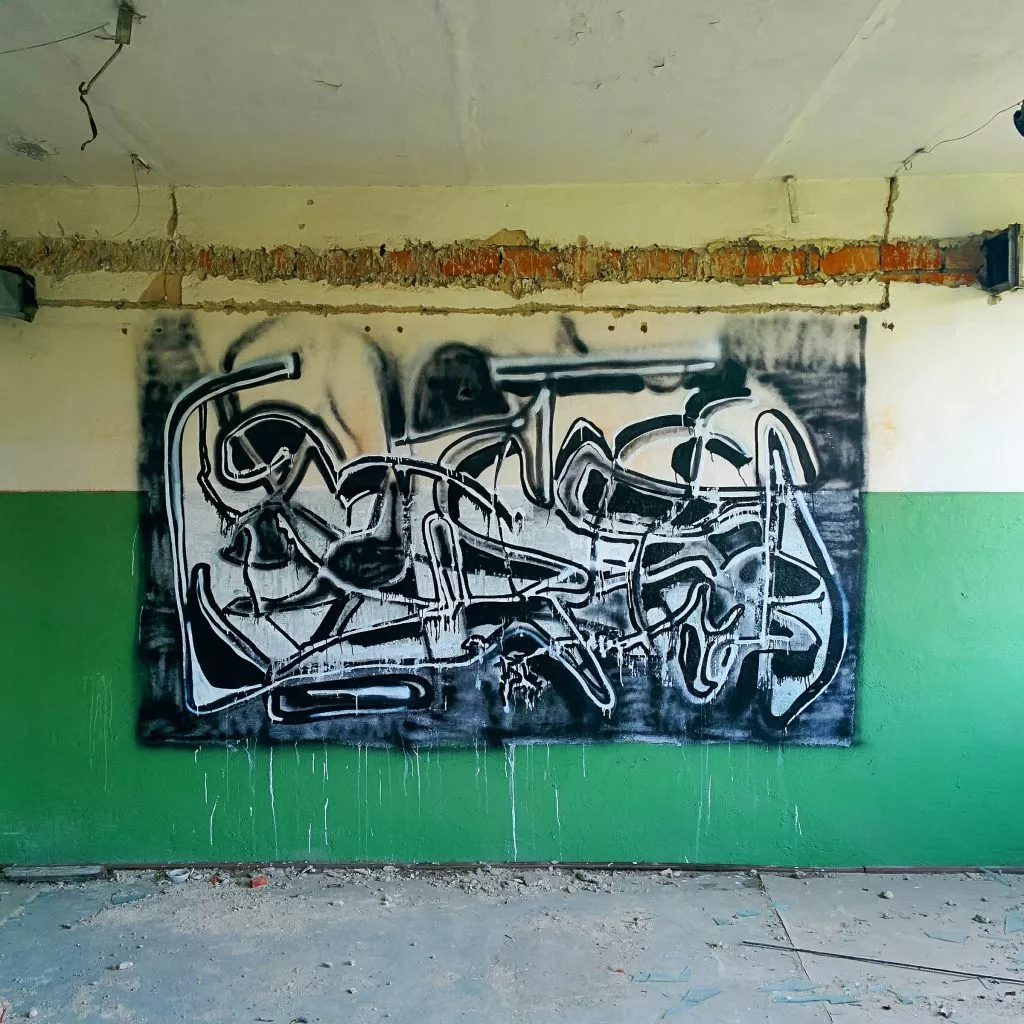
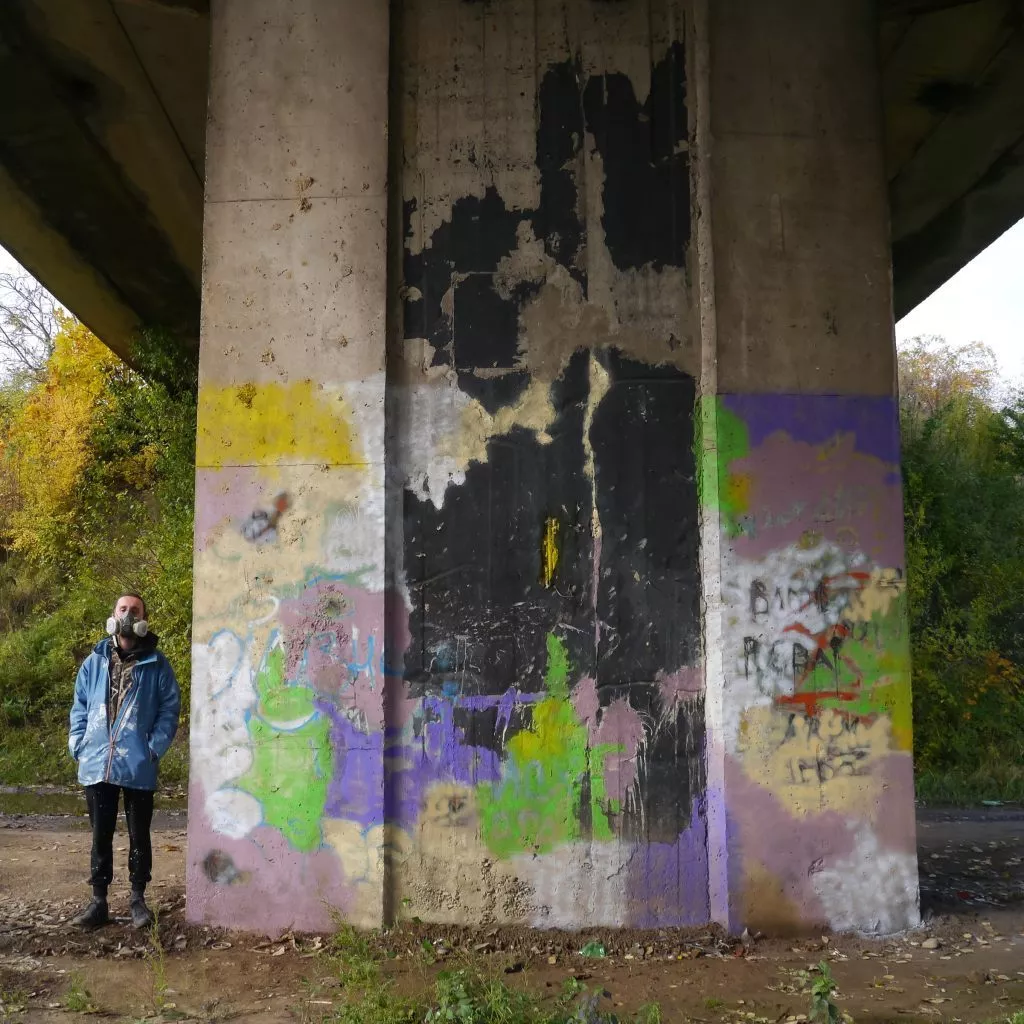
Colour is one of his main purpose for his painting. Even though, he also likes to paint in black and white, monochromatic or grey tones to work more on the lines and shapes. But after studying theories of colours, his education, inspirations and experience of 20 years painting, Blazej Rusin’s works show us mainly colourful compositions today, with organic evolving, vivid, interlaced shapes, often with some pure colour fields over different nuances, tones, with colour punctuations, vibrating and powerful in their ratio with each other. In some of his works, colour seem to have a bigger meaning, symbolic and spiritual, maybe on the basis of orthodox icons. Colour is proof of his faith in painting, he says. His nickname given to him by a close fiend, „the Slavic Wizard“, stands in a way for his spiritual practice of painting and his magical colour use. And even if Blazej uses nonrepresentational shapes and creates organic abstract works, he says some people can still find some letters. Being inspired by graffiti writing from the early years and icon painting from his childhood, the link between both is that icons were directed by a canon, a script, assembling stories, they were written as well in a way, according to Blazej. Besides developing further his visual language, the painter works as well on the framing of his wall works. Since recent years, he is trying to break the frame, to incorporate even better the painting and the place of his chosen wall in one work, by blur, dissolving the paint on the edges or other methods, he is still exploring.
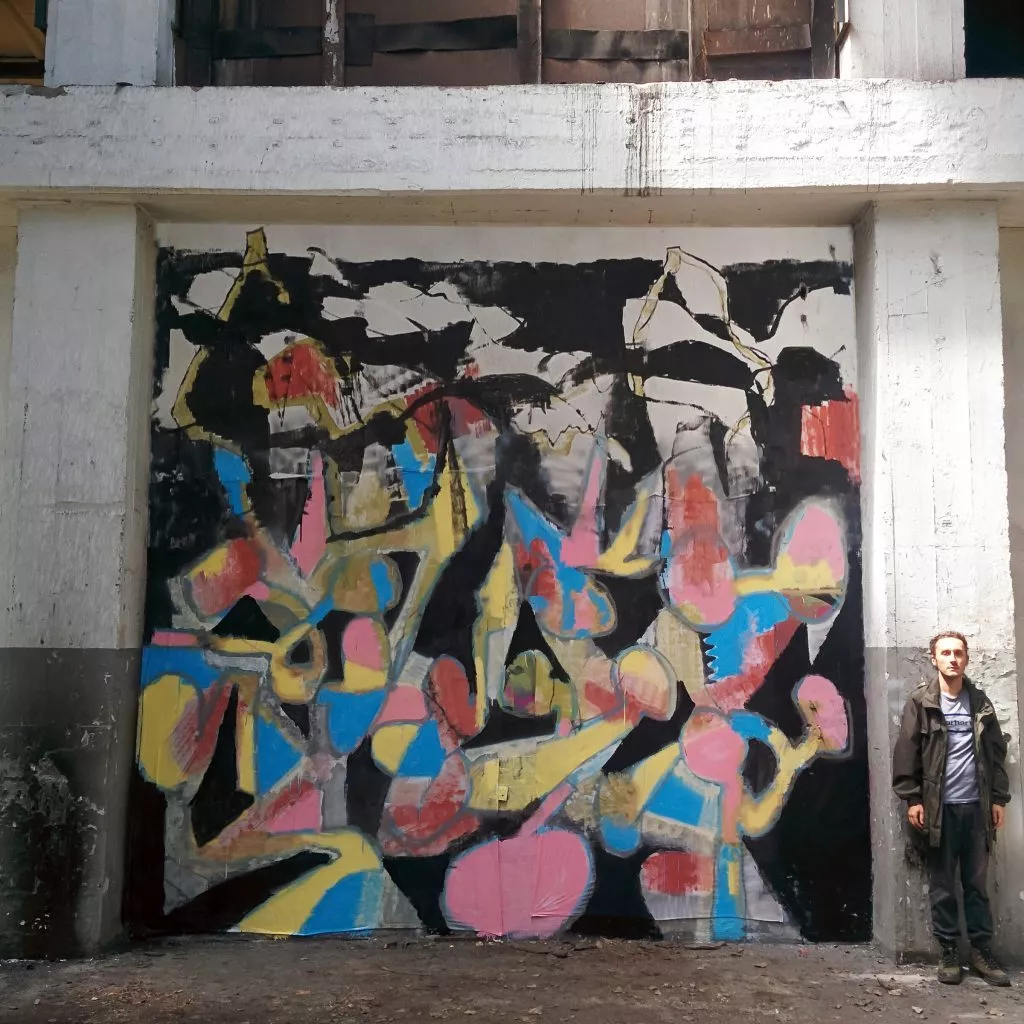
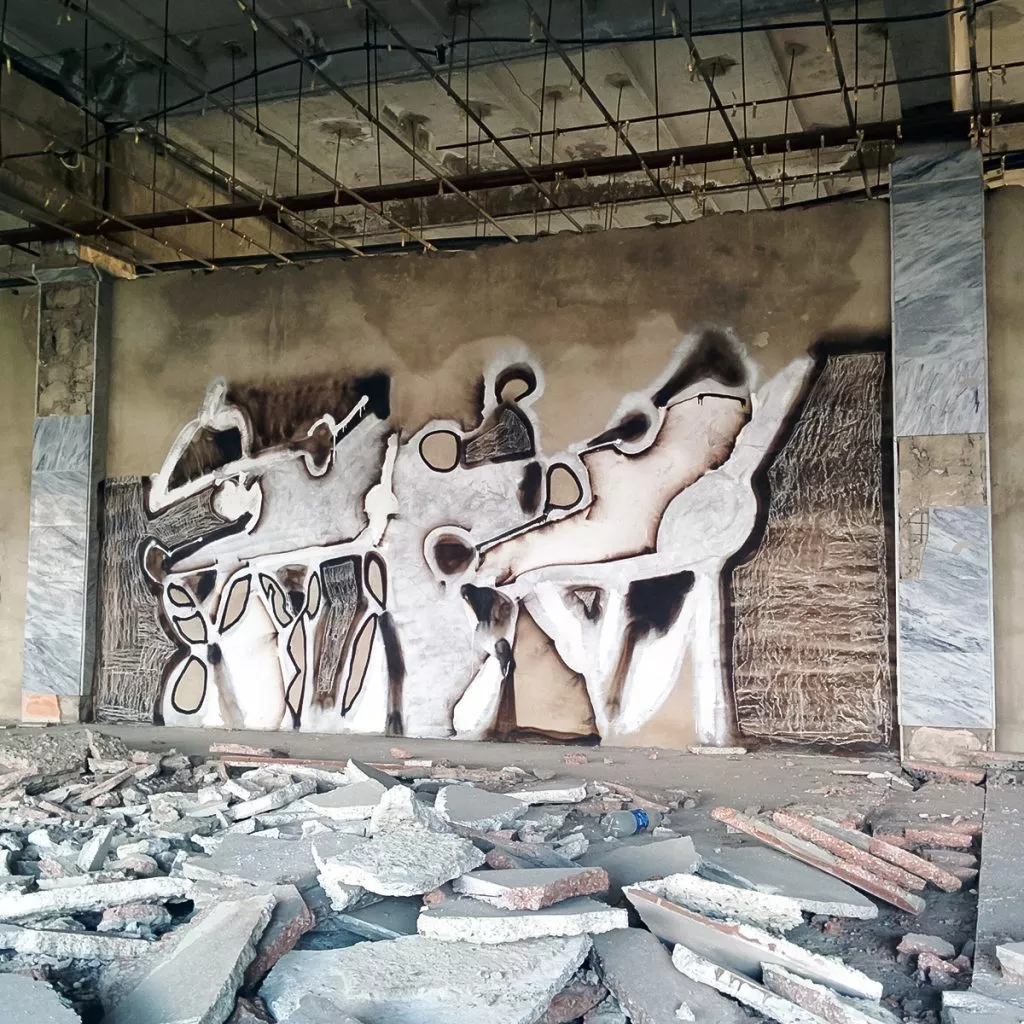
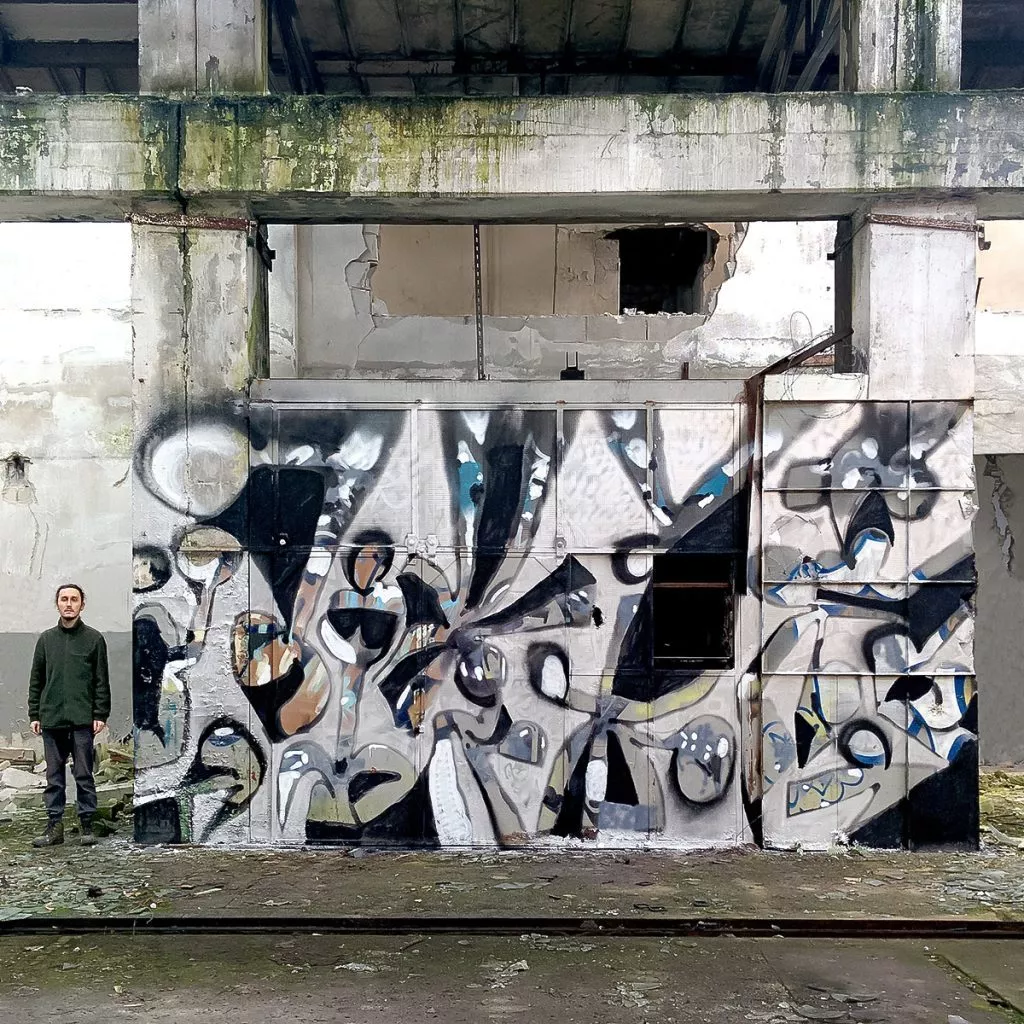
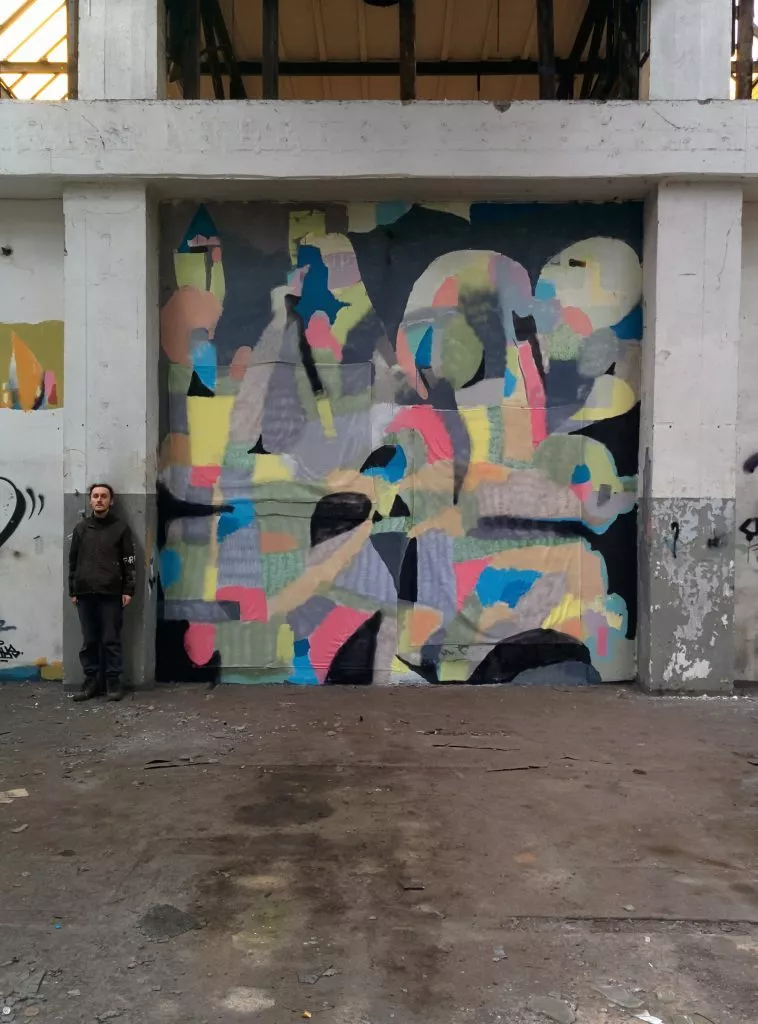
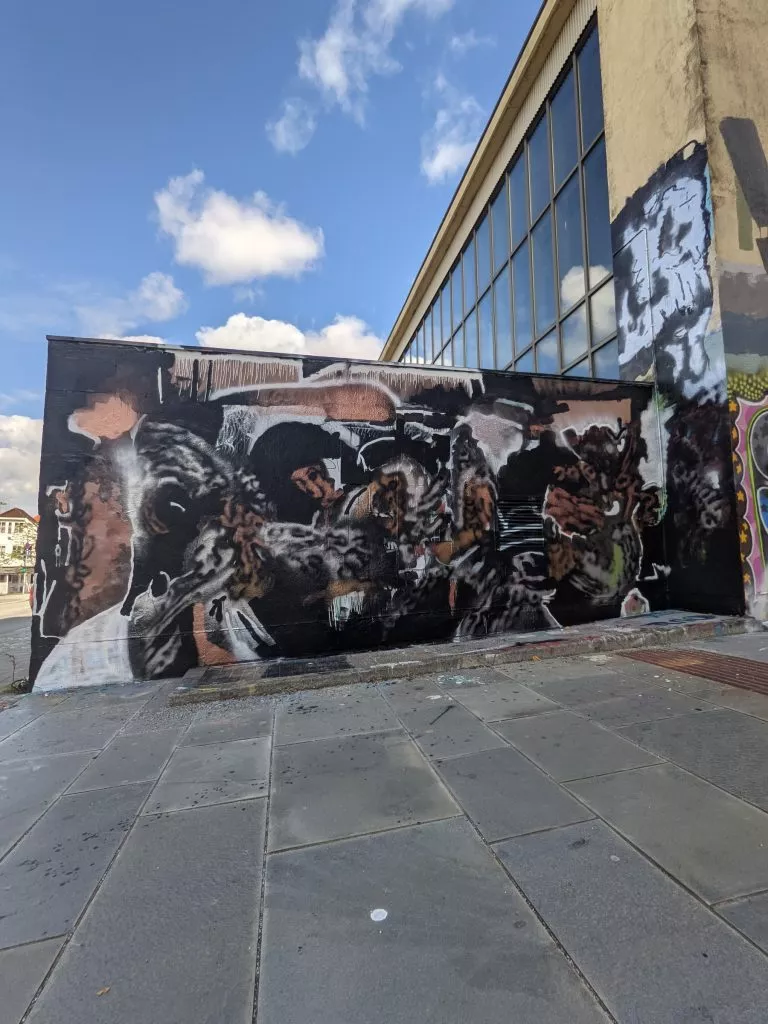
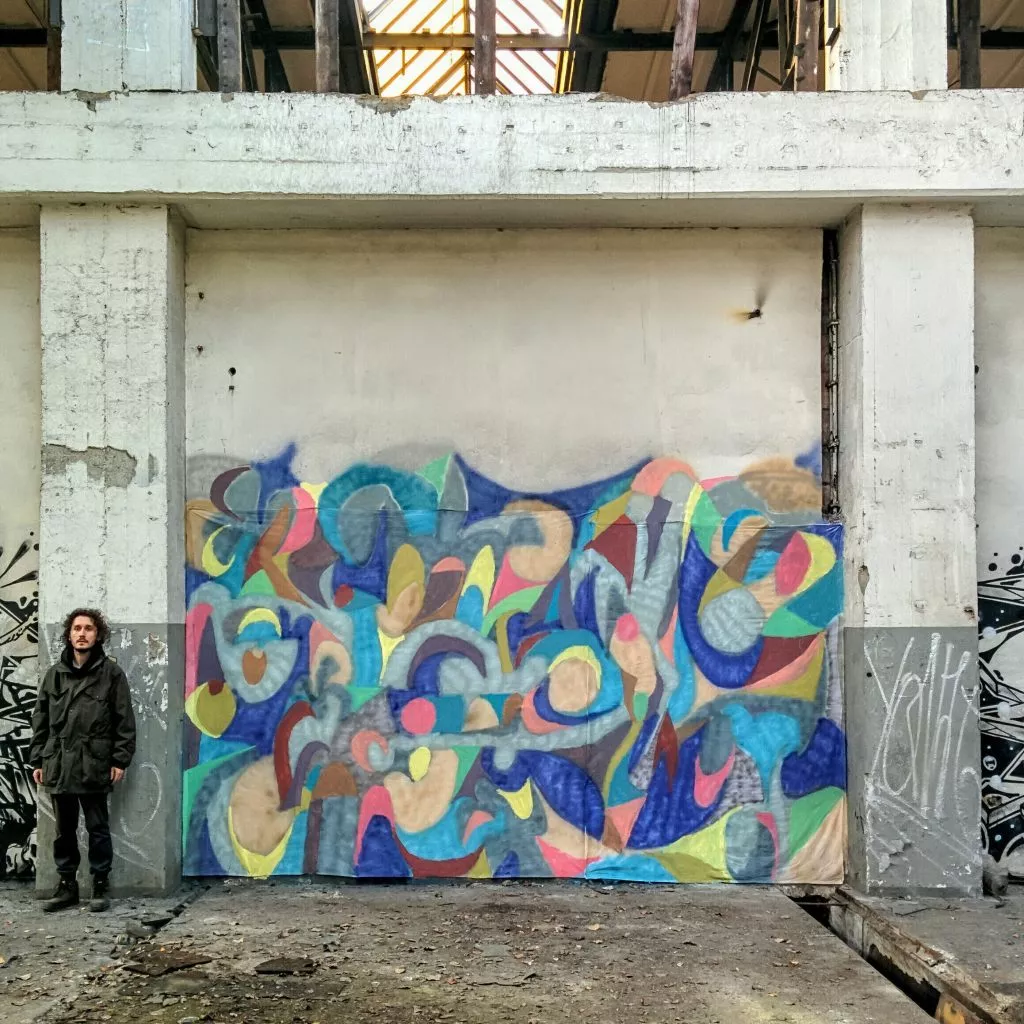
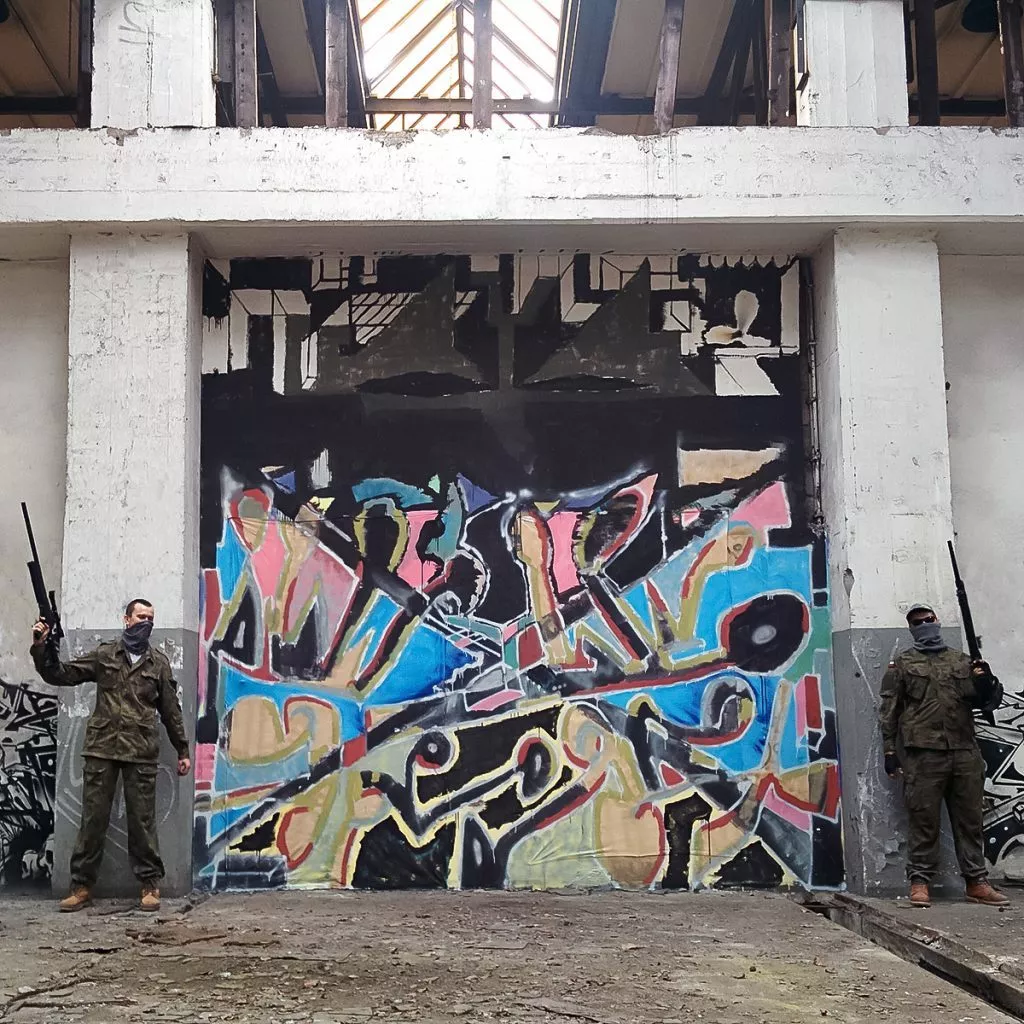
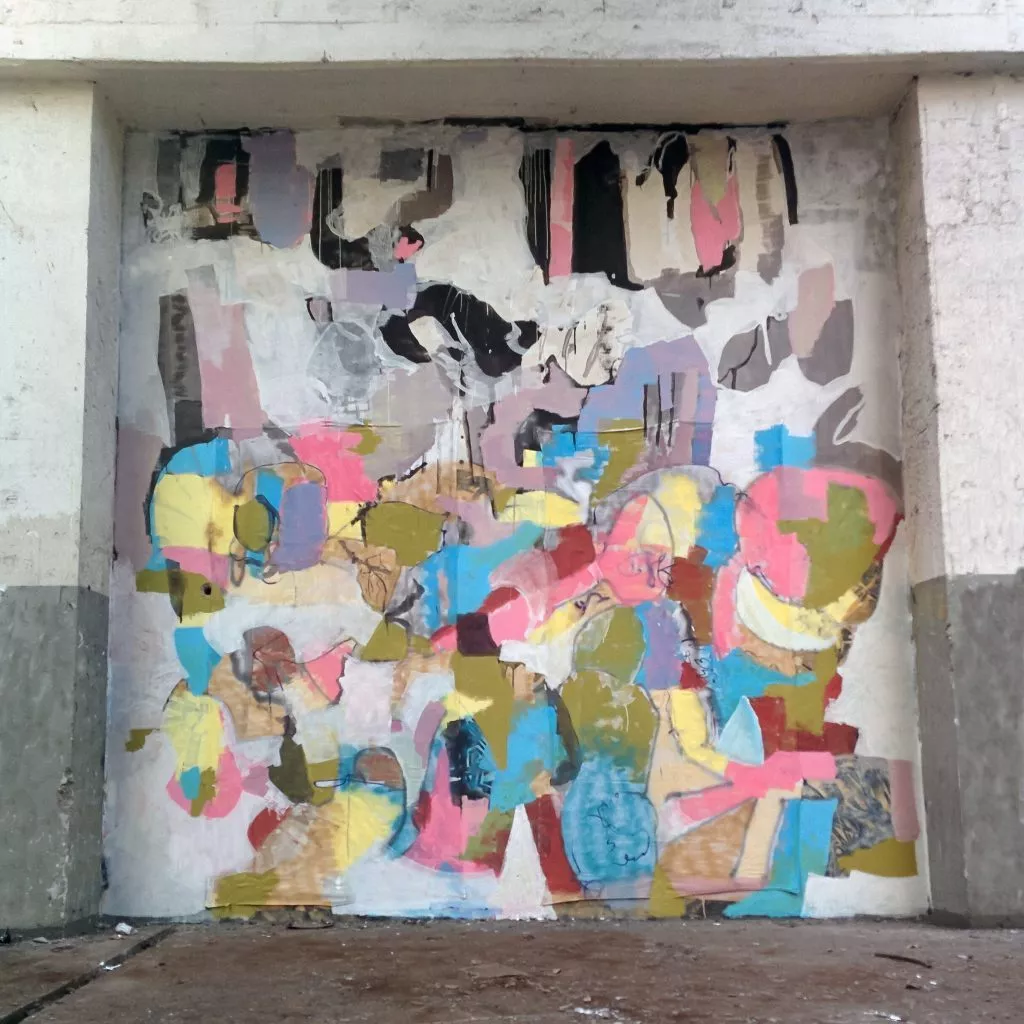
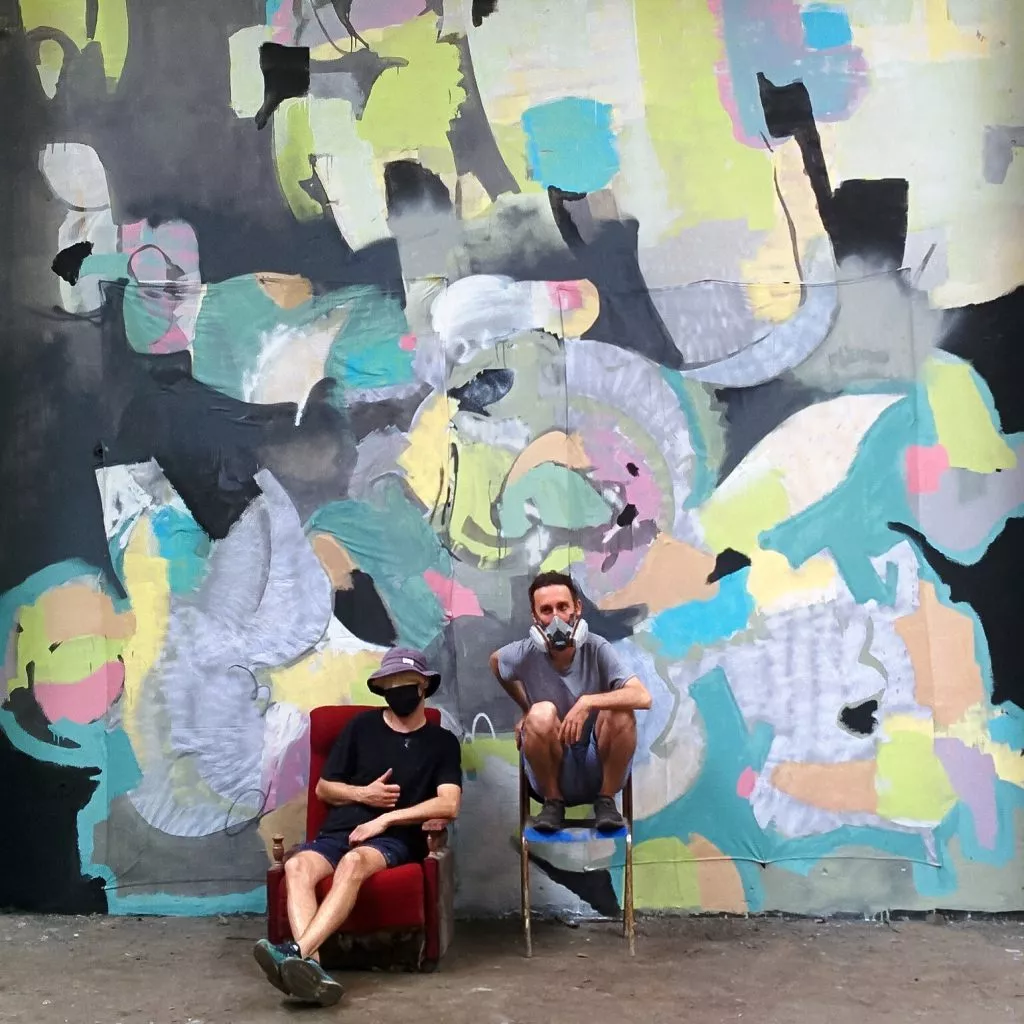
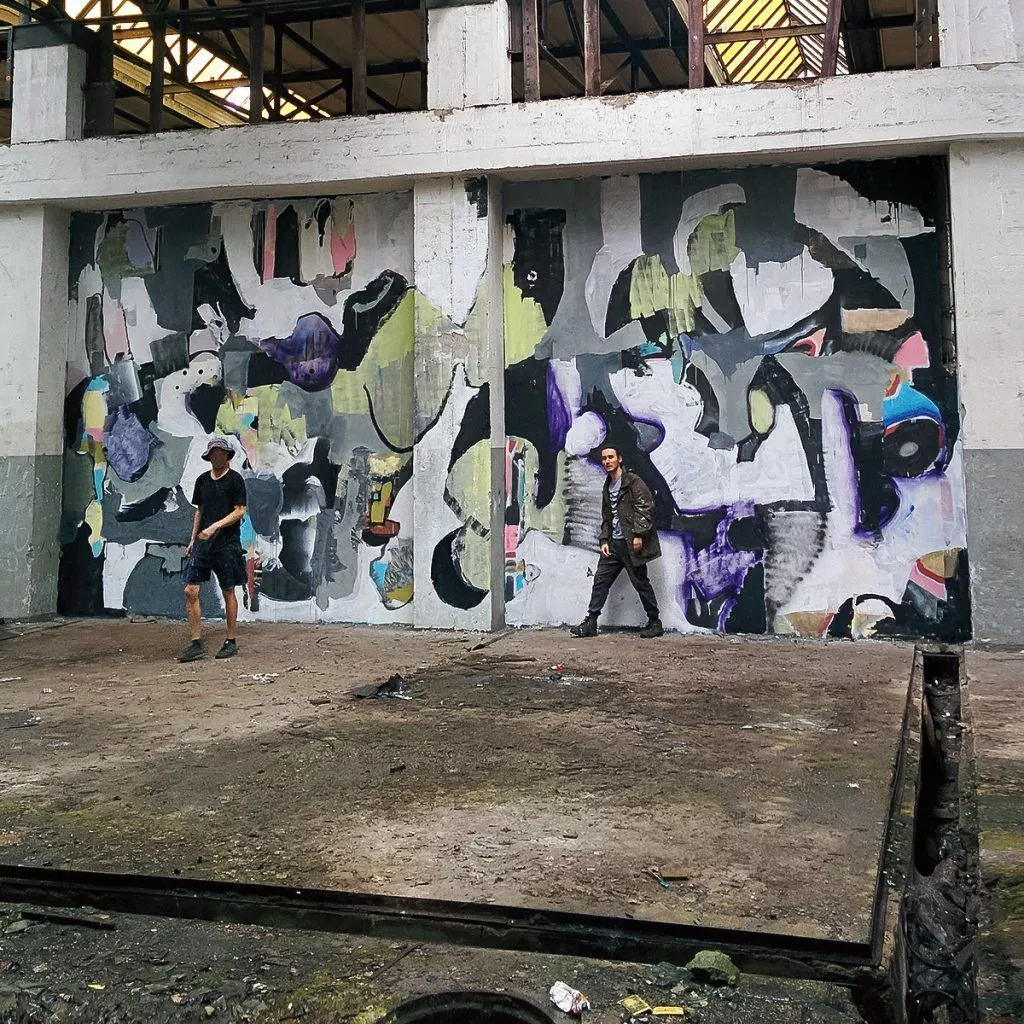
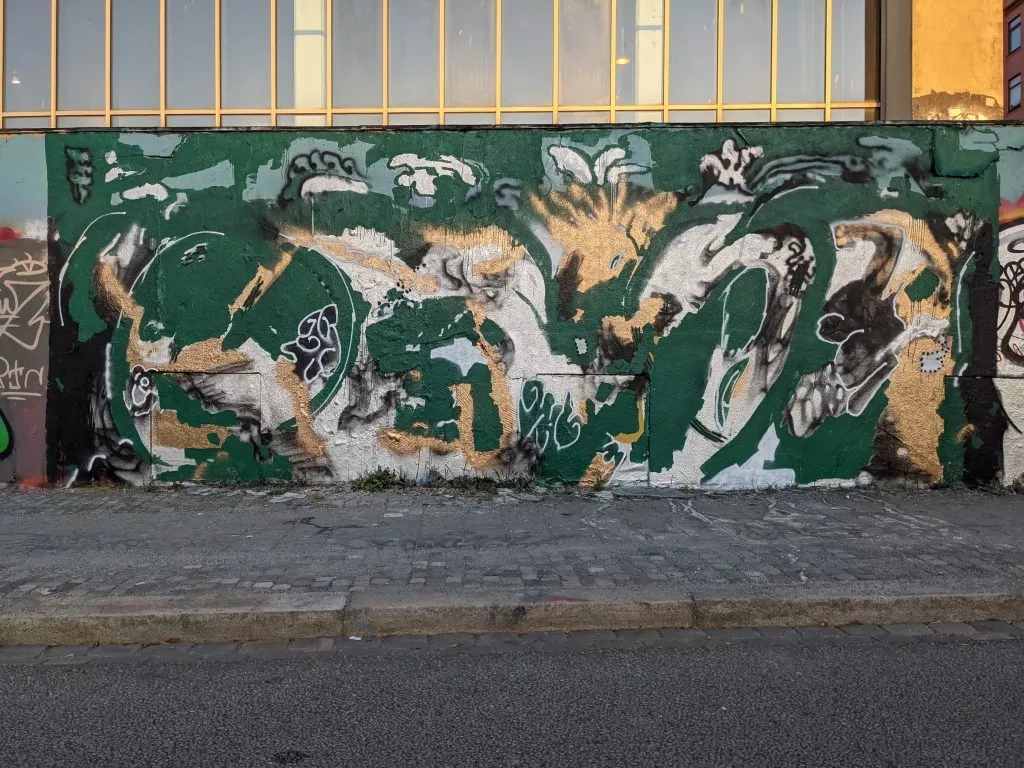
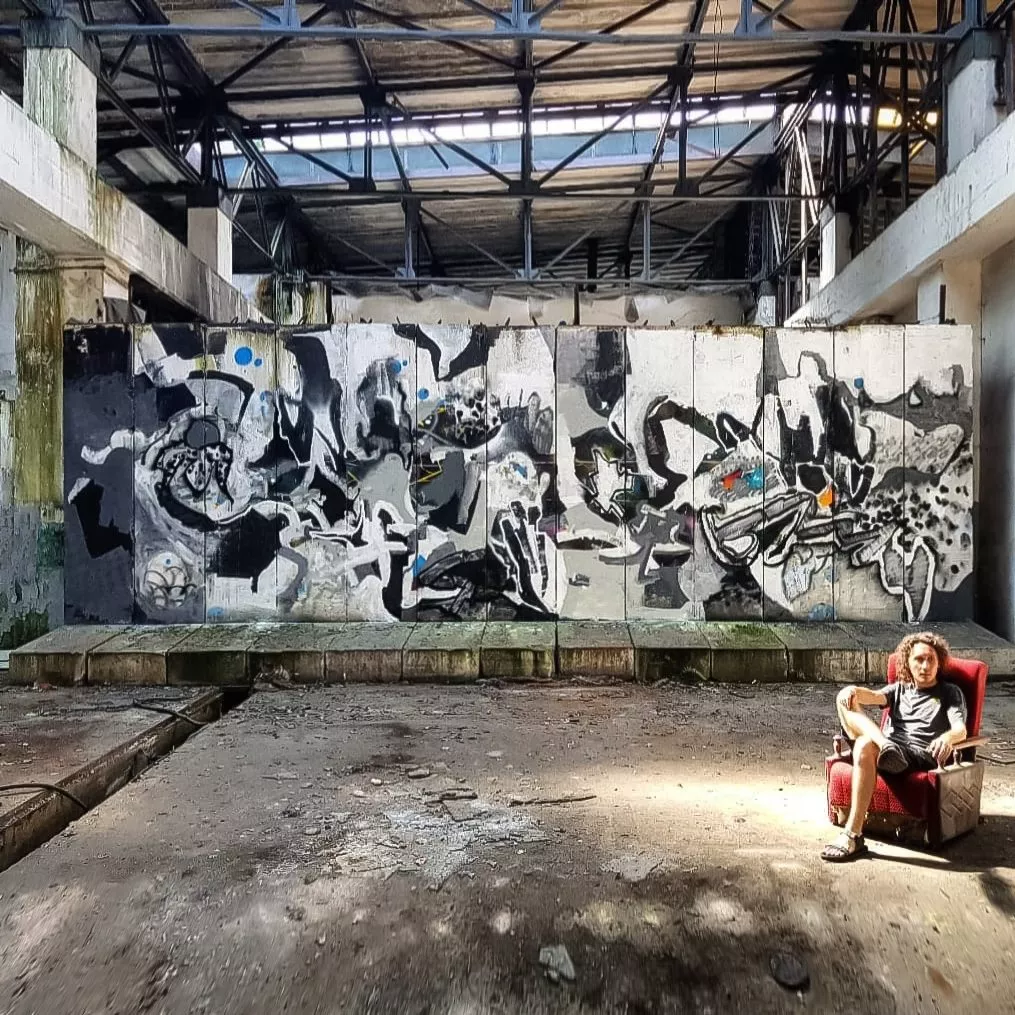
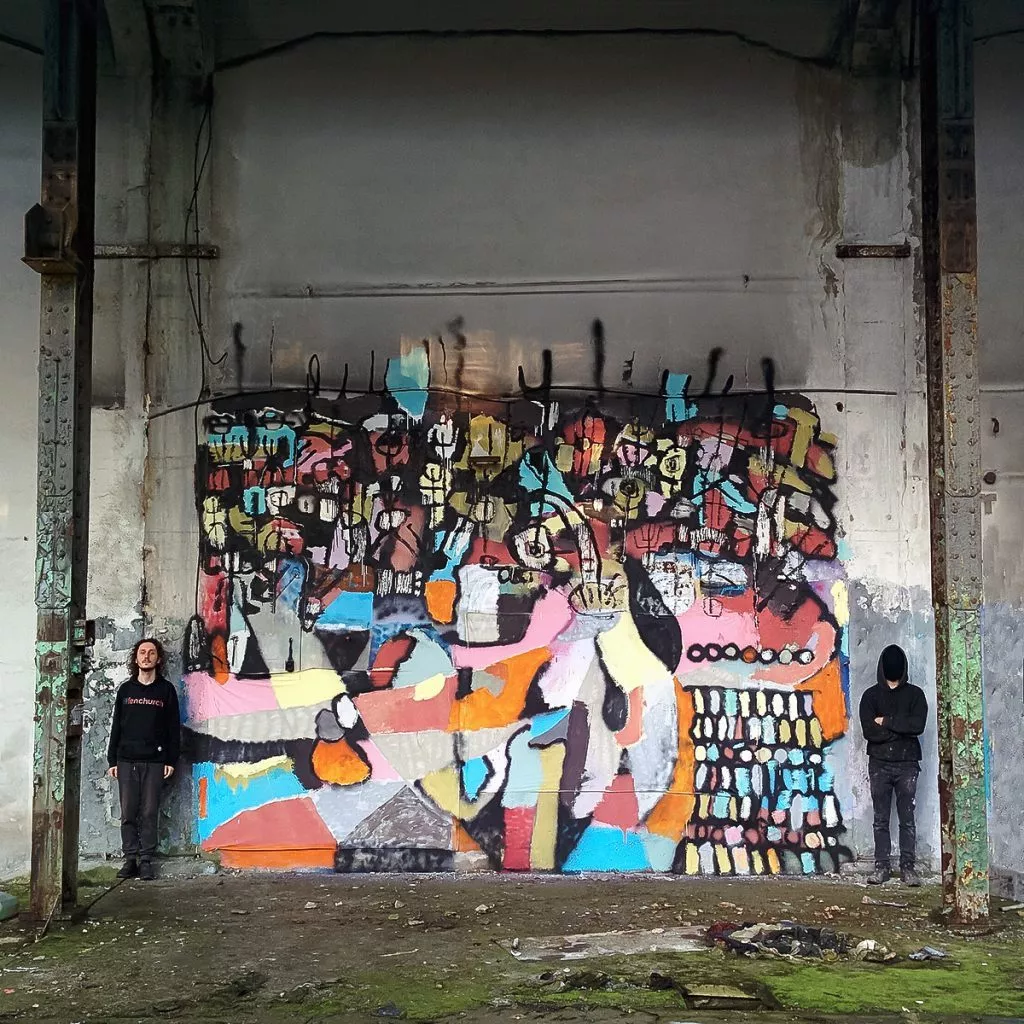
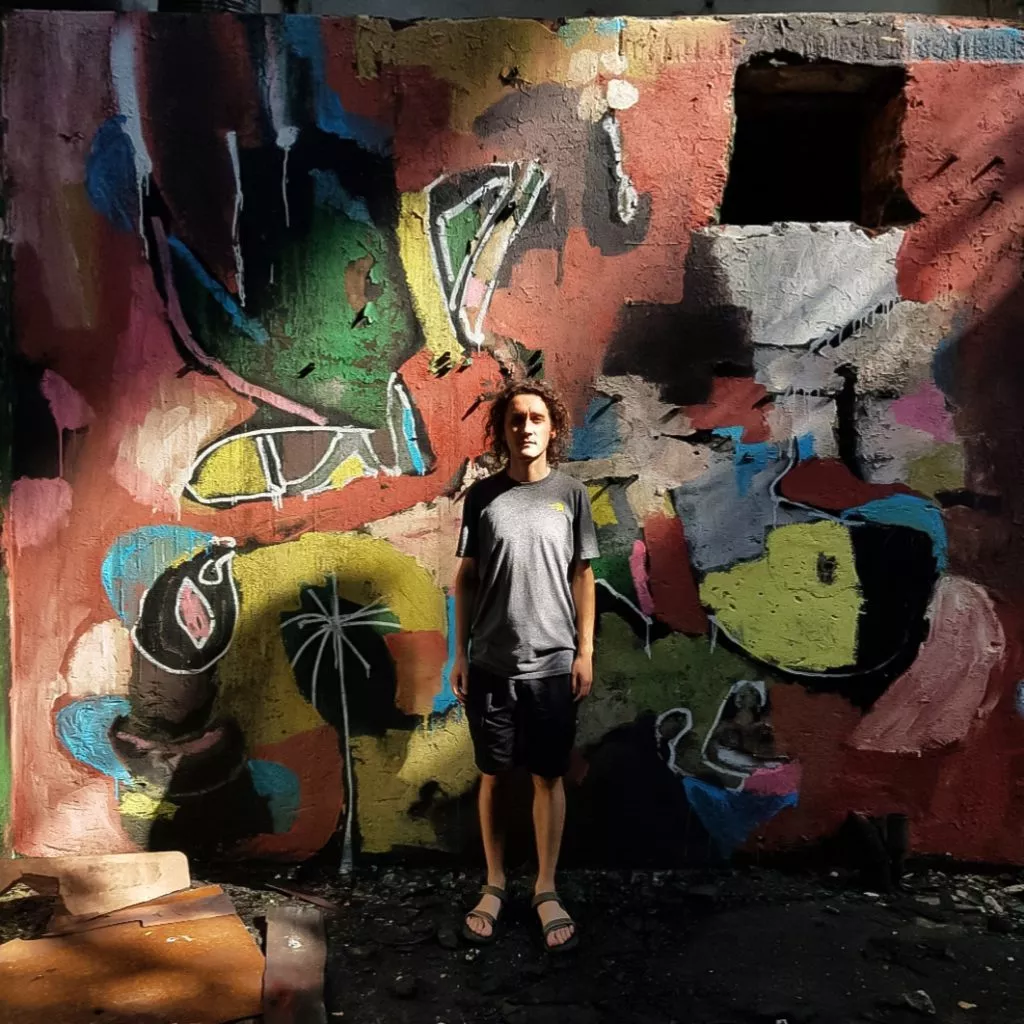
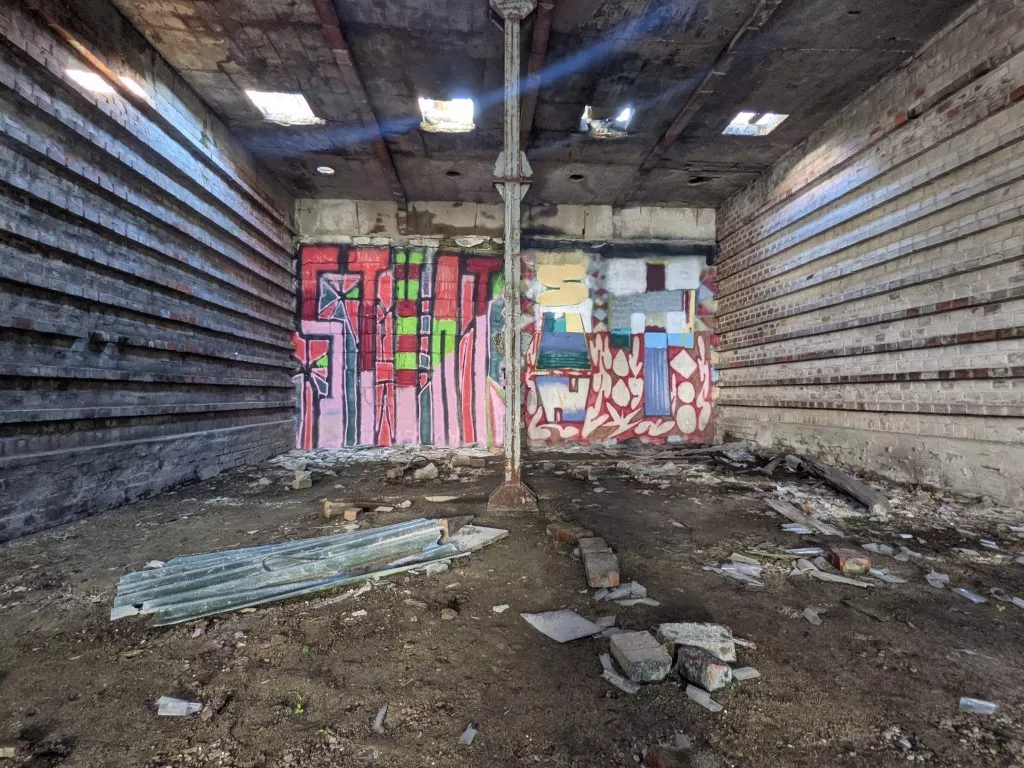
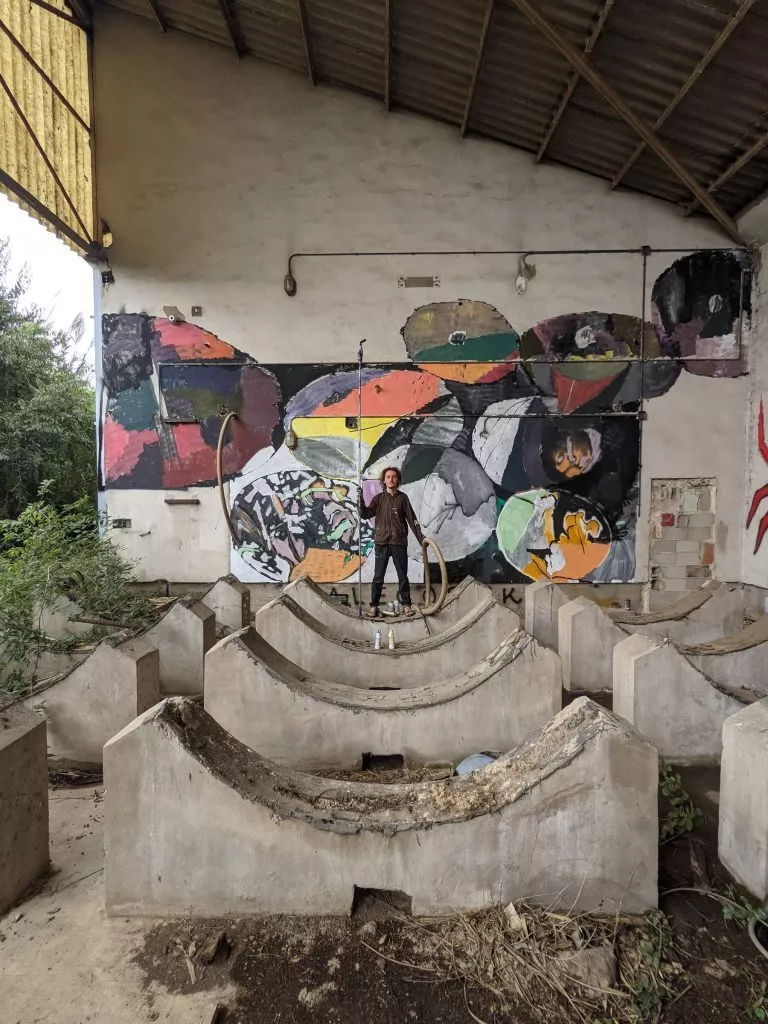
Creating in his studio(s)
Besides his regular practice of wall painting, Blazej works mainly in his two studio spaces in Poland. One is clean, he has everything there, his archives, all materials, for drawing and painting in the calm clean surrounding, located in the Old Town of Poznan. His other studio, the “dirty studio” how he calls it, is in a house in the forest near a lake, without electricity and heat, on purpose. Because there he can work in an uncomfortable place, situated in the middle of nature, where the outside shines through the windows. Here, Blazej finds similar conditions like in abandoned places, painting on big canvas like on walls, in the nature in the middle of nowhere. The challenge is to work fast and to allow himself only three painting sessions to finish a canvas. This approach makes him feel like being outside in the forest atmosphere, where you can paint only during daytime for certain hours. The canvas is hanging on his dirty studio wall full of layers of paint, with a substance nearly like a hall of fame. The floor is green. It is his compromise with graffiti, he says.
In his clean studio, Blazej works differently, with much more time, concentrated on the canvas. The stimuli come only from him there, not the surroundings. His works created tin the studio are more elaborated, pushed forward, it is a place for real confrontation with a painting and more time to observe, contemplate. There he works with acrylic, oil, wax crayons, ink, gouache, water colours and charcoal. His prefers canvas at least 2m on side, his biggest studio canvas is 270cm x 465cm. This is the imprint of graffiti-large scale, he says. In his inside working spaces, Blazej creates two types of canvas: The first type is on a blank canvas, starting with the three primary colours as usual and evolving from there. The second type was developed after a mural up cycling project. Since 2018, Blazej installs several unstretched canvases on a big wall in an abandoned place, paints a huge painting including the pieces of canvas. Afterwards, he takes the canvas with him, leaving blank fields in the wall painting. In the studio, he cuts the painted canvas in pieces, saws them together in different assemblages and the result is then his background for a new work. Hanged on a wall, the „patchwork canvas“ has certain dynamics that give Blazej ideas to start a composition. Then he adds drawings from his archive over the whole background to let new linear compositions emerge, giving him a context, a narrative for starting to apply his colours in different shapes. In a way, he says, by this procedure, he assembles stories together, transferred in his visual language, narratives that are finally coming from life experiences. “Like from nature, where life comes from”, Blazej adds, „my focus is to share stories and some values through art.“
Rusin still collaborates abroad and in his clean studio with other artists. Collaboration for wall paintings is a practice the Polish artist is used since graffiti writing and he still practices outdoor. But in his studio, he invites classical painters to collaborate on a big canvas. Being not used at all to this practice, this work with classical painters creating one painting together, is a particular challenge. But this act of creation without any rules set in advance, needs mainly a good communication between the painters, according to Rusin.
Since 10 years now, Blazej Rusin is combining his graffiti experience and academic painting background through different ways in his abstract visual language. Still painting outdoor, on the land, transforming walls with acrylic paint, he considers post-graffiti wall painting as a form of landscape painting. For him, even painted trains are landscape paintings in motion. And to capture those temporary works outside, in their surroundings, to have a trace of that act of painting outdoor, to archive those art works, the artist uses the lens of his camera, which is fixing only the current state of the painting in situ at that moment. And at the end, he says, the photography is the ultimate owner of a wall painting.
https://www.instagram.com/blazejrusin/
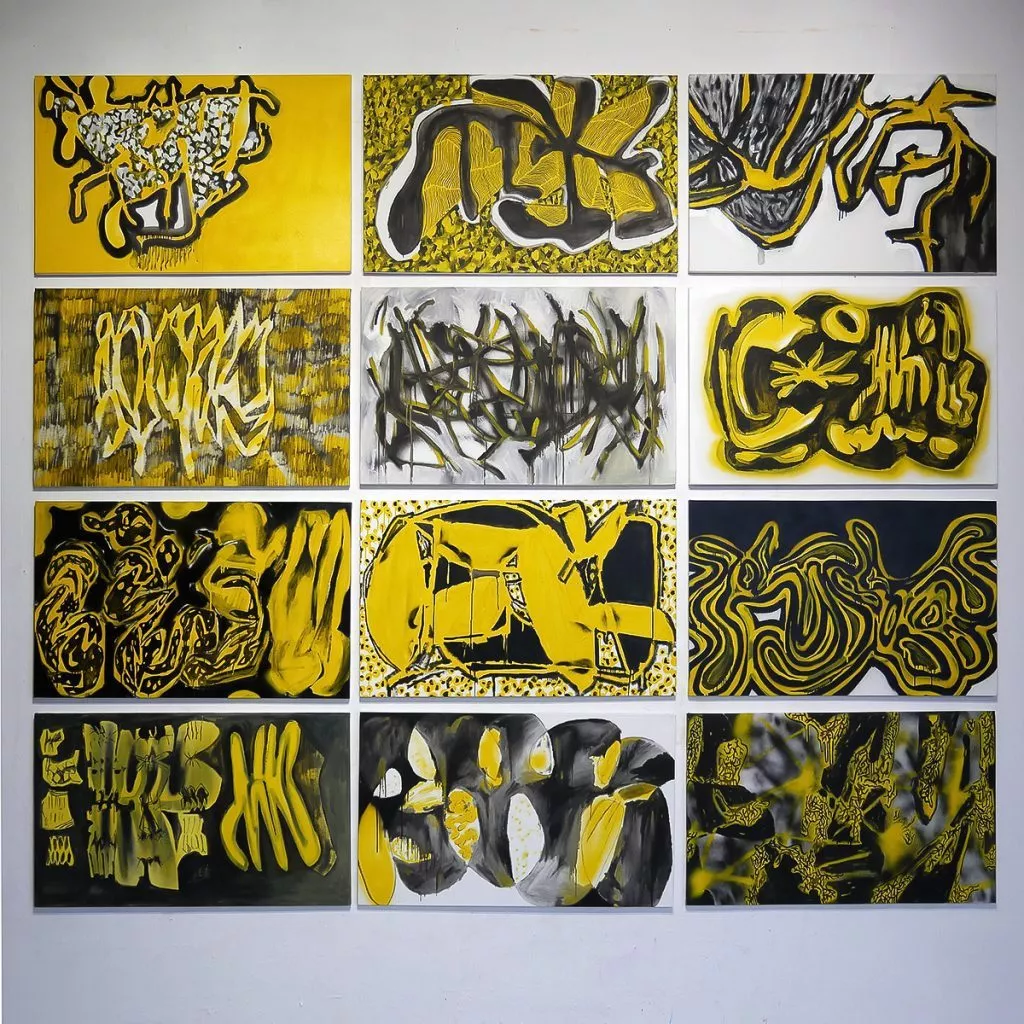
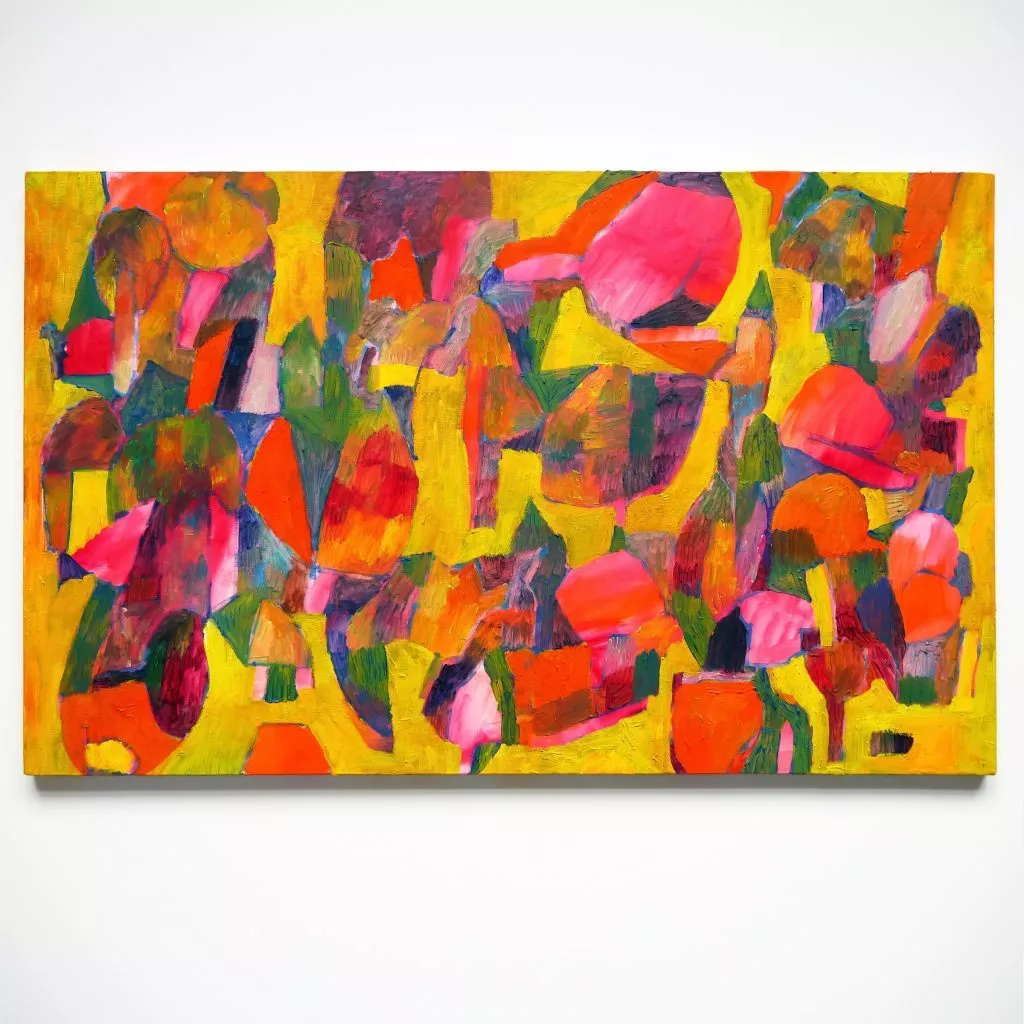
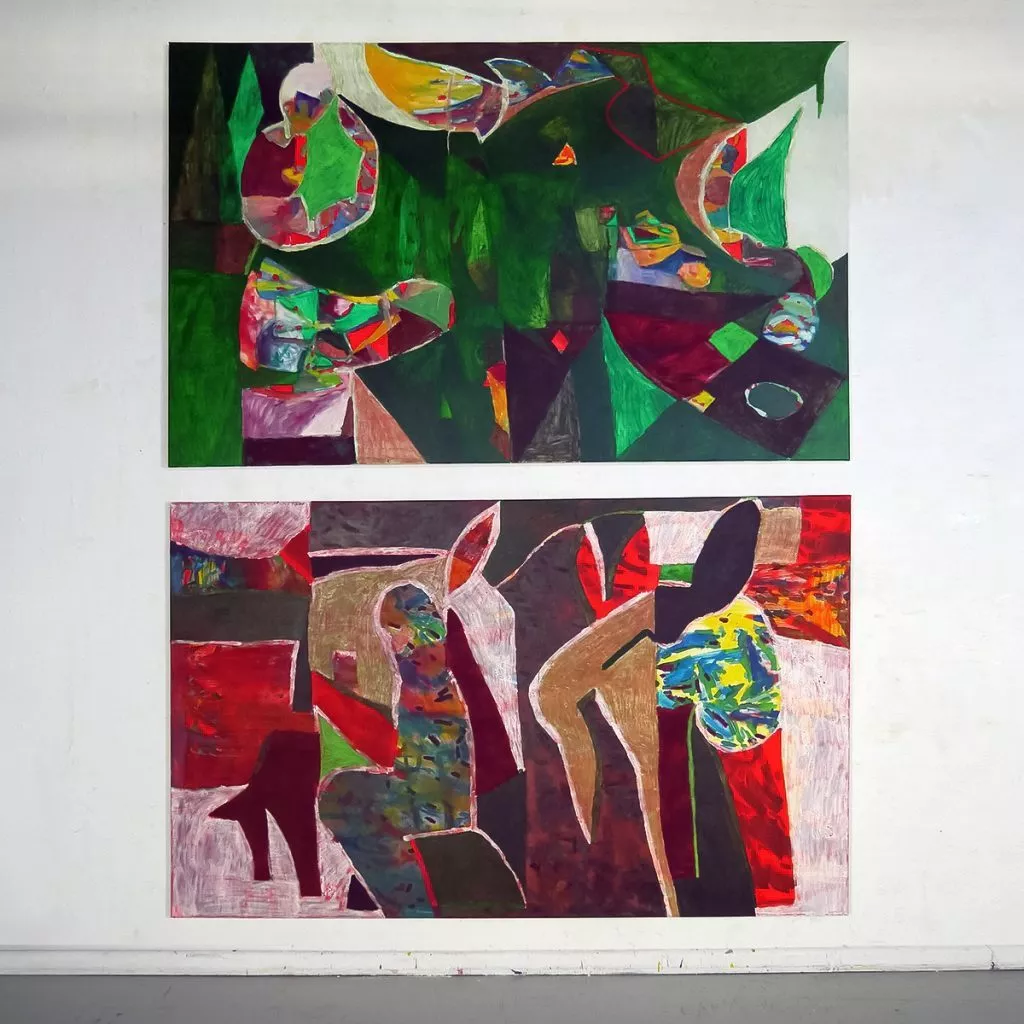
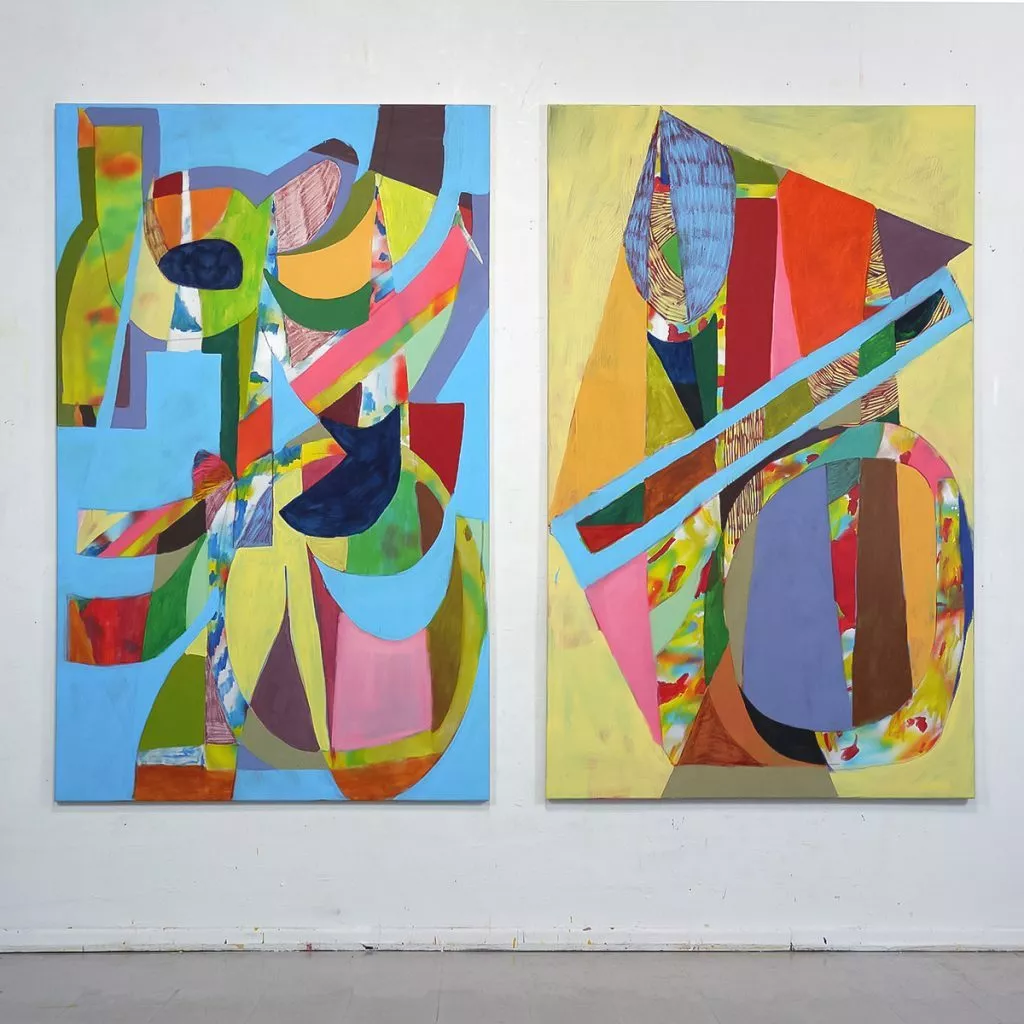
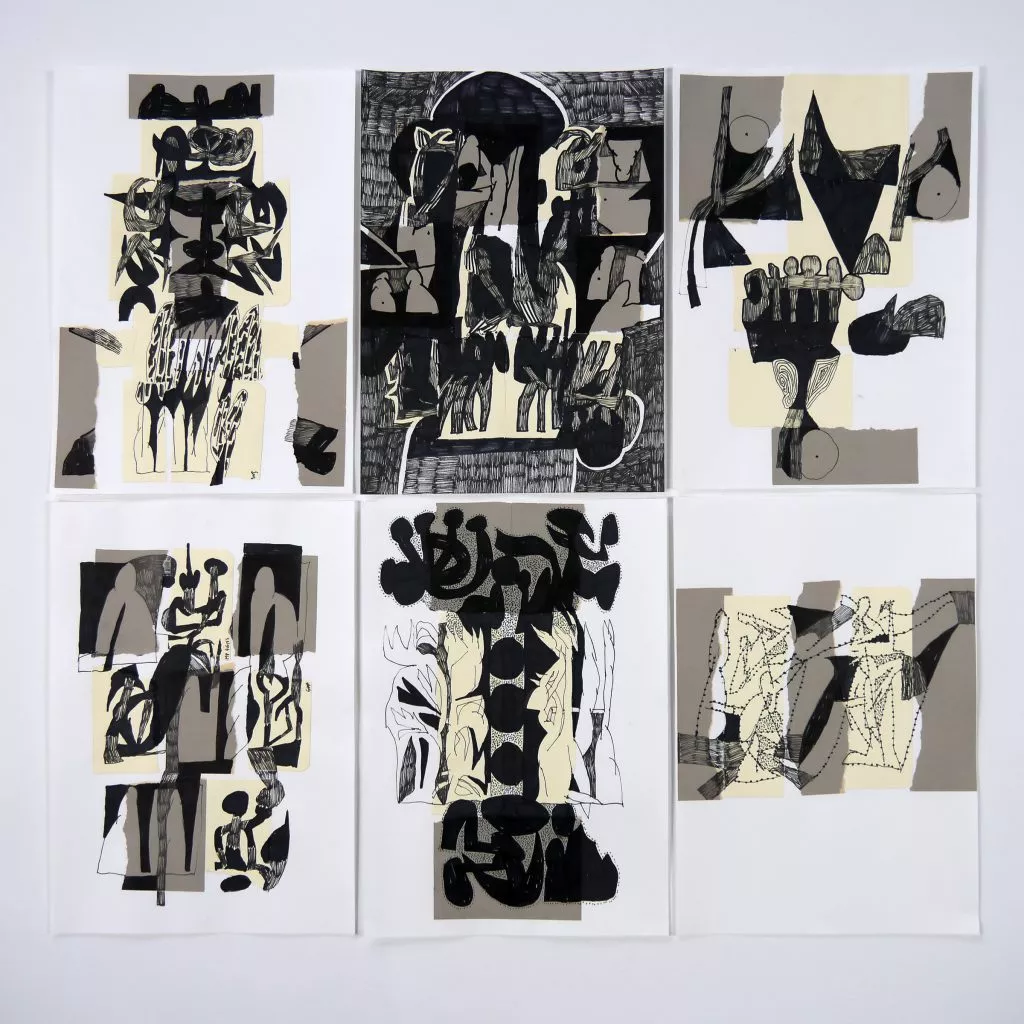
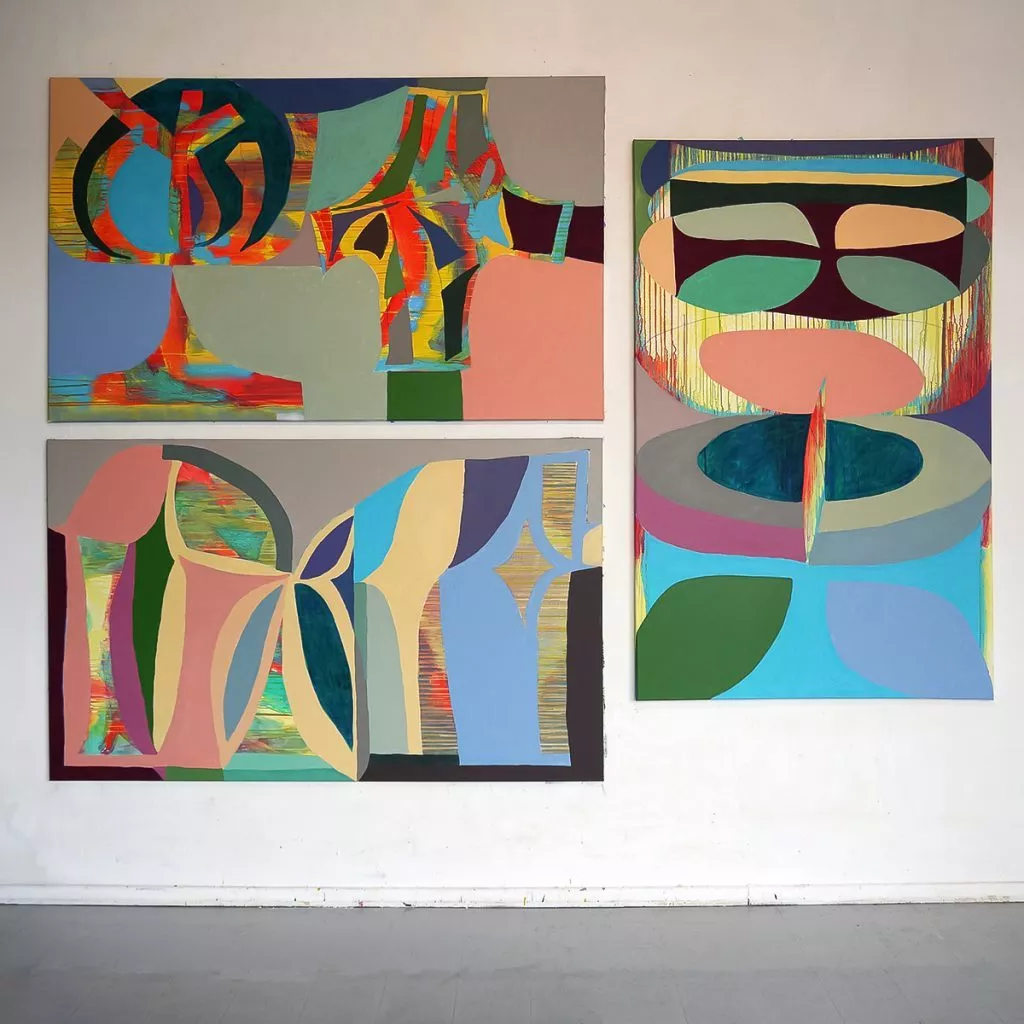
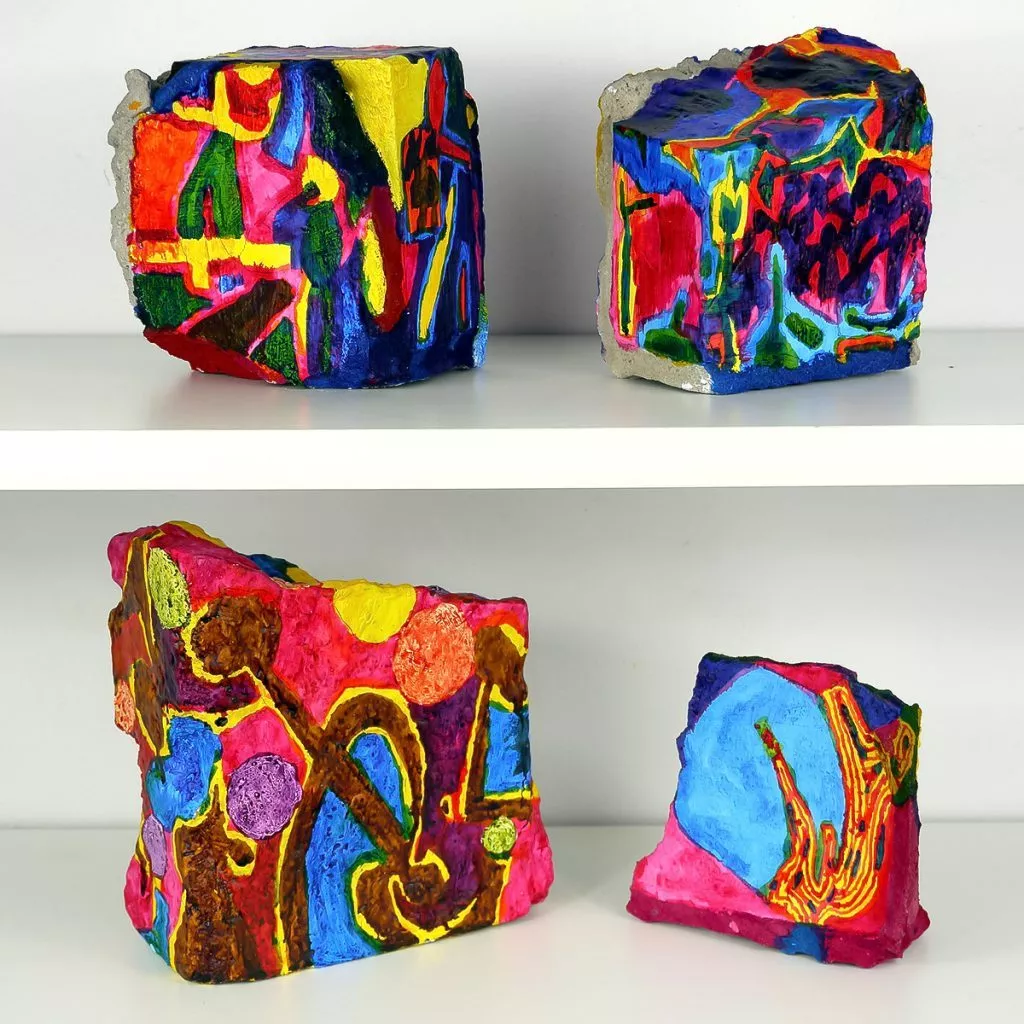
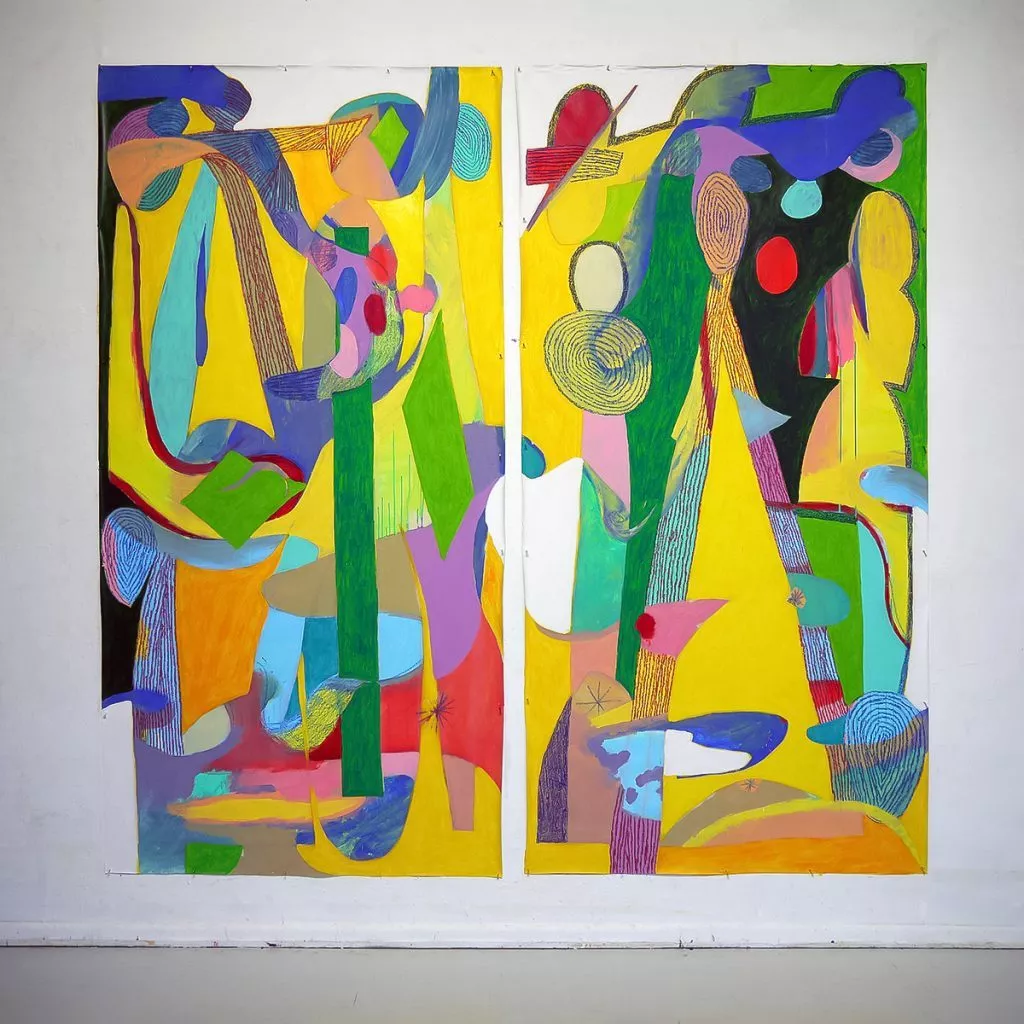
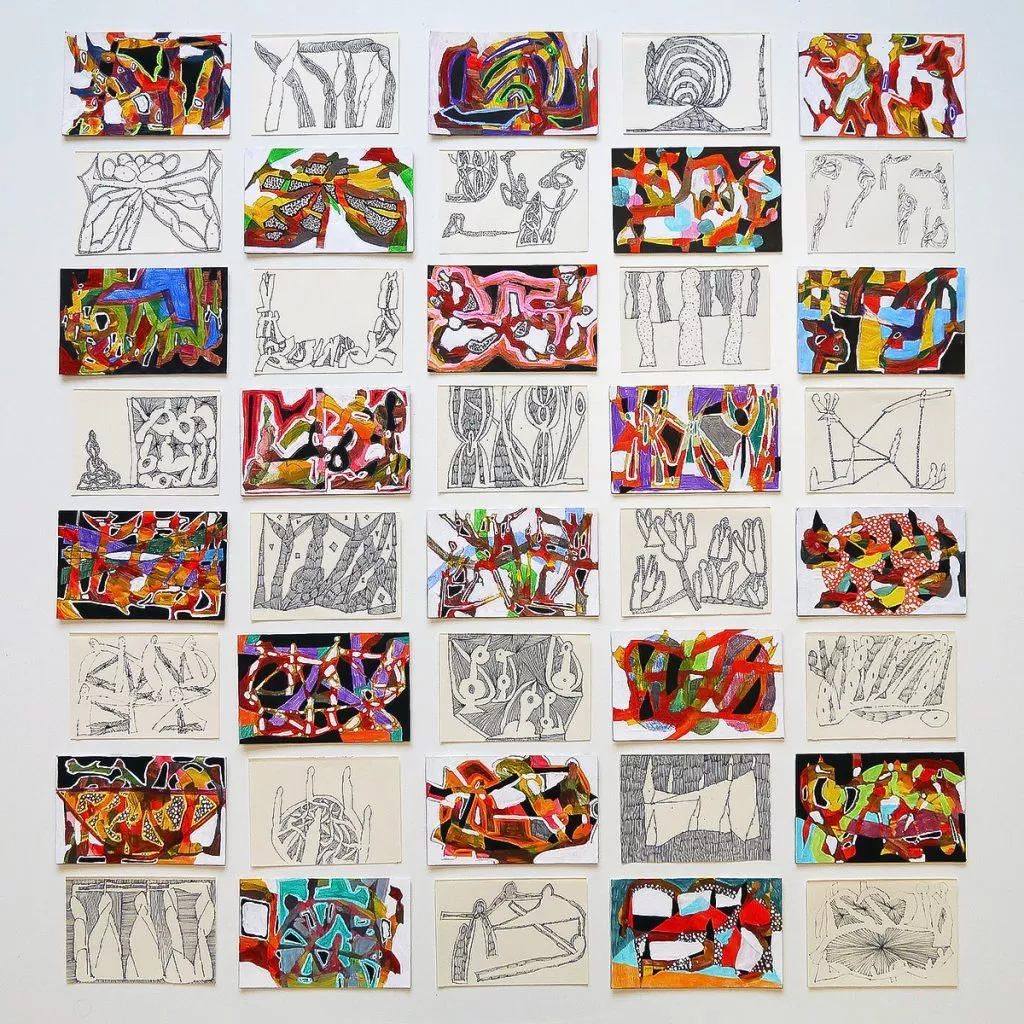
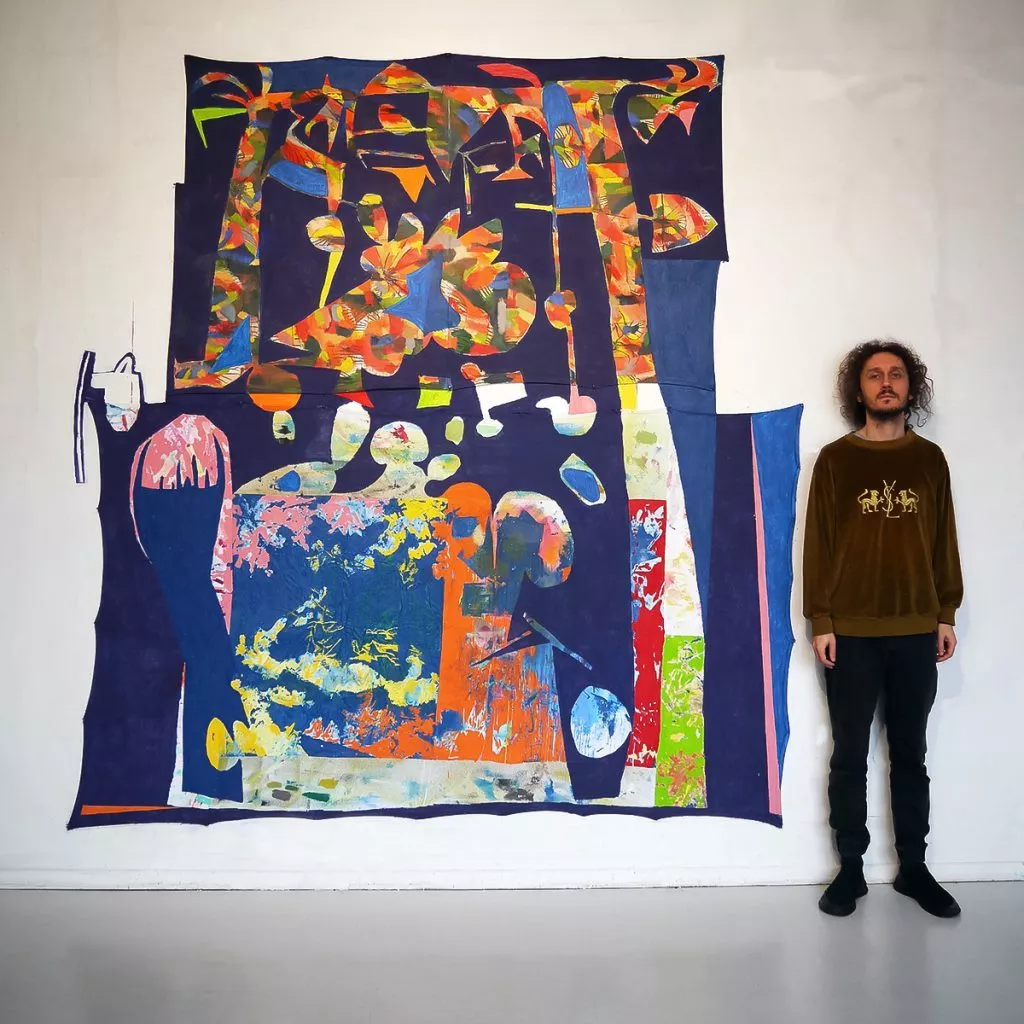
179 views
Categories
Tags:

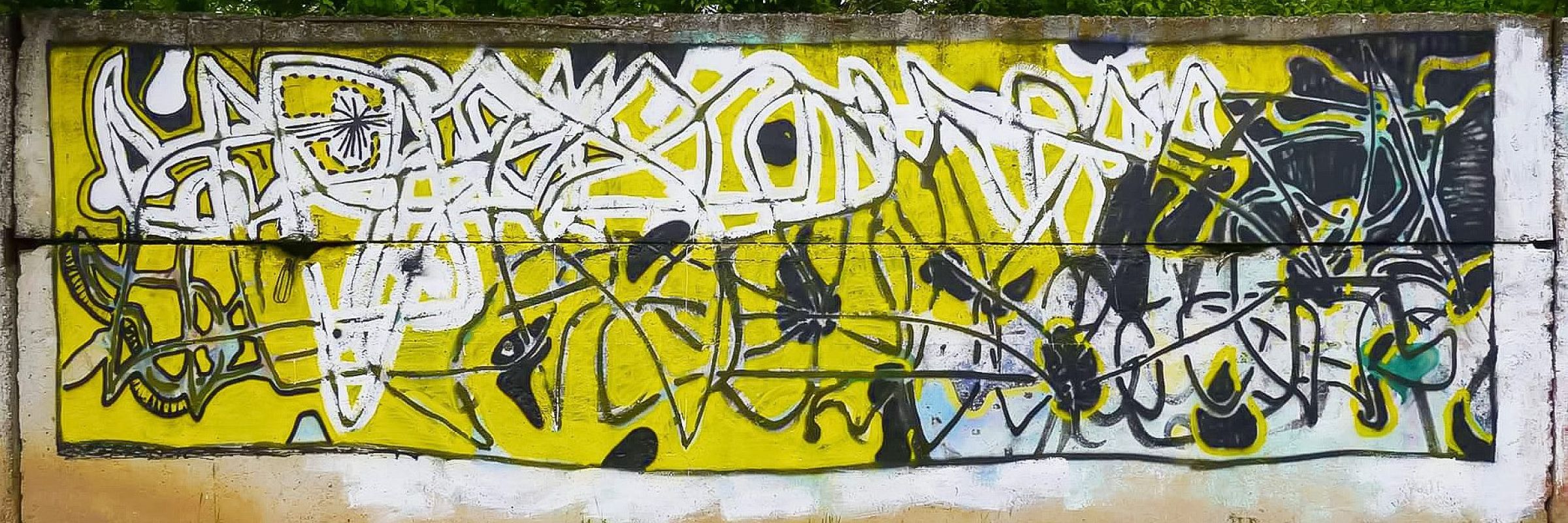

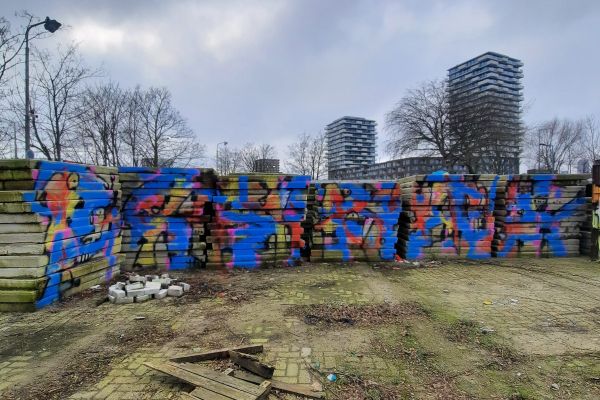
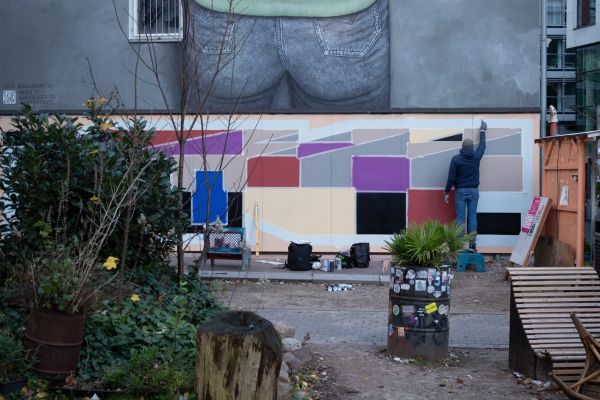
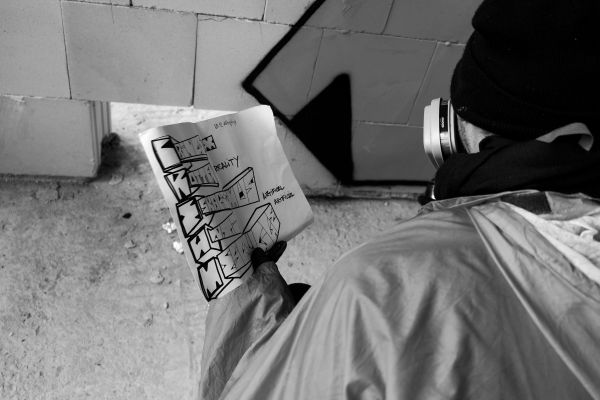
Leave a Reply